LEMON WEB-GAMES
Preparing Collections
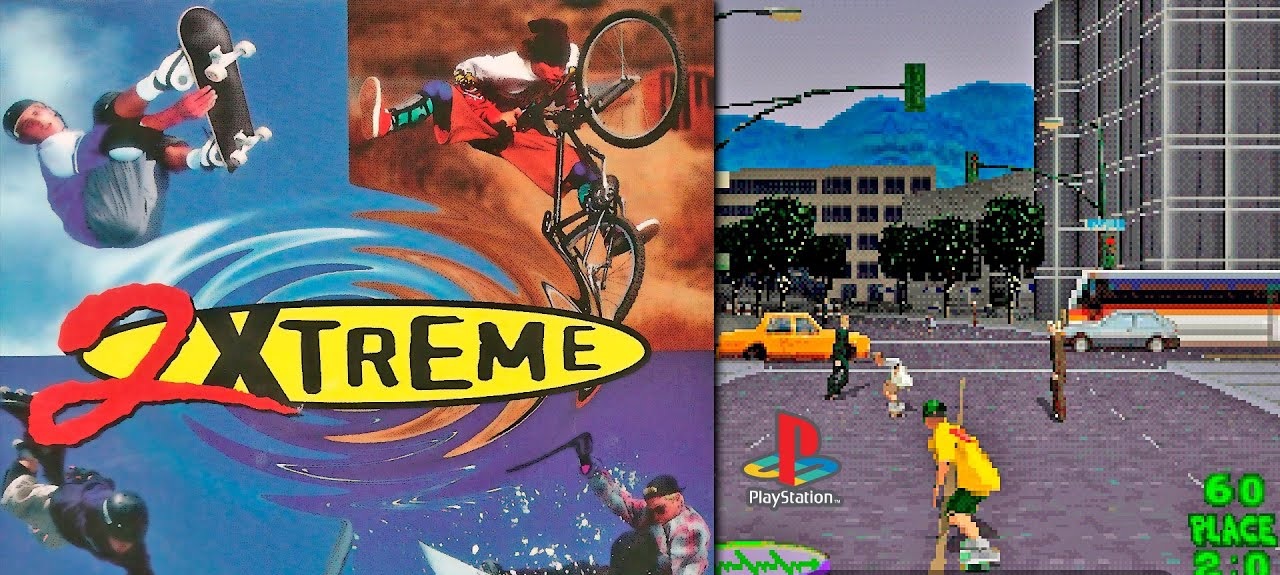
2Xtreme
2Xtreme for the PlayStation is a fast-paced extreme sports racing game released in 1996 as the sequel to ESPN Extreme Games. Players race through diverse global tracks across four disciplines—skateboarding, snowboarding, biking, and inline skating—while dodging obstacles, jostling with opponents, and collecting power-ups to gain an edge. The game’s arcade-style design emphasizes speed, reflexes, and aggressive tactics, letting players punch or kick rivals to stay ahead, and it also features multiple difficulty levels and multiplayer support. With its mix of variety and competitive gameplay, 2Xtreme became a memorable title for fans of mid-90s PlayStation sports games.
PSX

3D Tic Tac Toe
3D Tic-Tac-Toe for the Atari 2600 takes the classic pen-and-paper game into a whole new dimension—literally. Released in 1980, it expands the familiar 3x3 grid into a 4x4x4 cube, giving players 76 possible winning lines across multiple planes and diagonals. The gameplay challenges your spatial reasoning as you try to align four X’s or O’s in any direction—up, down, across, or even through layers. You can play against another person or test your skills against the computer’s AI, which was quite advanced for its time. While visually simple, 3D Tic-Tac-Toe stands out as an early example of how classic strategy games could be reimagined through the lens of emerging digital technology.
ATARI
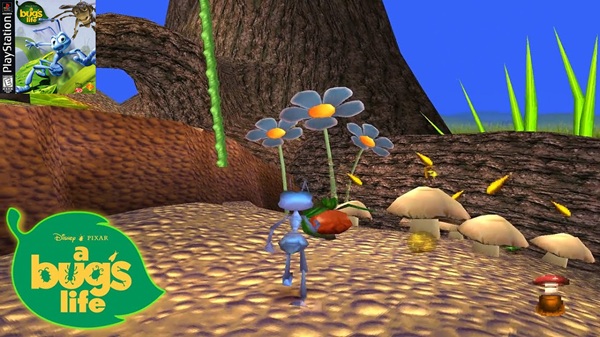
A Bug's Life
A Bug’s Life for the PlayStation, released in 1998, was a 3D platformer based on the Disney-Pixar animated film of the same name. Players stepped into the role of Flik, the inventive ant, on a journey to save his colony from the greedy grasshoppers led by Hopper. The game followed the movie’s storyline across various levels, from lush fields and underground tunnels to boss battles against enemies like Thumper and Hopper himself. Gameplay focused on collecting grain, solving simple puzzles, and using plant-based power-ups to progress through stages. While its graphics and voice clips captured the charm of the film, the game was often criticized for its clunky camera and repetitive design, though younger fans of the movie still found it enjoyable. Today, A Bug’s Life is remembered as part of the late ’90s wave of movie-to-game adaptations, offering a nostalgic but dated experience for PlayStation players.
PSX
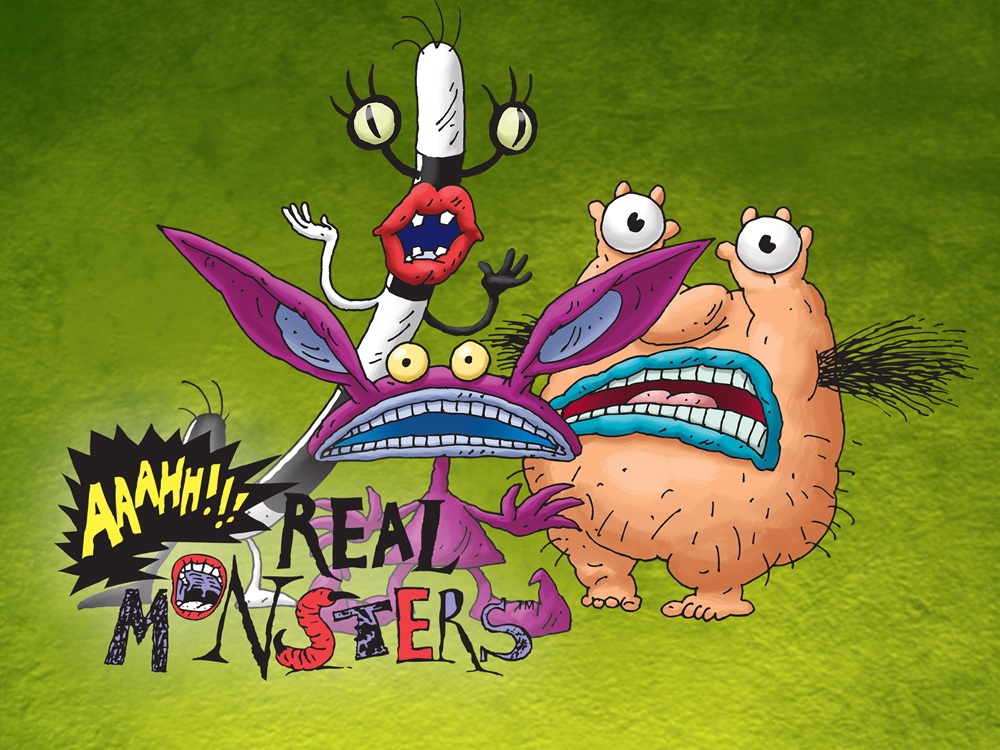
Aaahh!!! Real Monsters
"Aaahh!!! Real Monsters" for the SNES is a quirky platformer based on the Nickelodeon cartoon of the same name, where players control three misfit monsters—Ickis, Oblina, and Krumm—students at a monster academy who must prove their scare skills by venturing into human worlds. The gameplay revolves around puzzle-platforming mechanics, with each monster having unique abilities: Ickis can jump high, Oblina can squeeze into tight spaces, and Krumm can throw his detachable eyeballs for scouting. Players must cleverly switch between characters to overcome obstacles, defeat enemies, and collect items. With its cartoonish graphics, humorous animations, and faithful adaptation of the TV show’s quirky tone, the game stands out as a fun yet challenging title in the SNES library, particularly appealing to fans of the series.
SNES
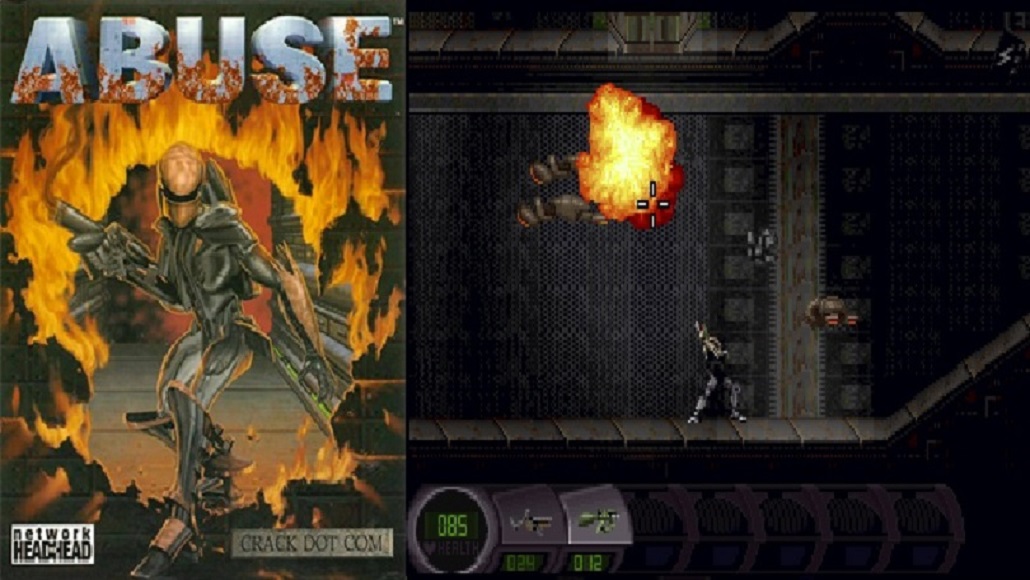
Abuse
Abuse is a run and gun video game developed by Crack dot Com and published by Electronic Arts in North America and Origin Systems in Europe. It was released on February 29, 1996, for MS-DOS. A Mac OS port of the game was published by Bungie and released on March 5, 1997. The game's source code, along with some of the shareware content, has been in the public domain since the late 1990s and has been ported to Linux and many other platforms.
DOS
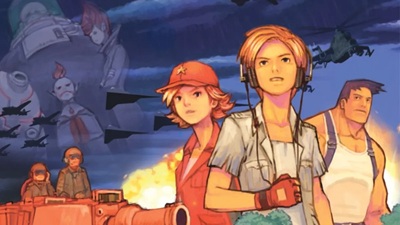
Advance Wars - Dual Strike
Advance Wars: Dual Strike, released for the Nintendo DS in 2005, was the third main entry in the beloved Advance Wars series and the first to take advantage of the DS’s dual-screen setup. Set in the aftermath of Advance Wars 2, the game follows the Orange Star army and its allies as they battle the sinister Black Hole army in a new conflict that spans multiple continents. The “Dual Strike” title comes from its unique mechanic that allows two commanding officers (COs) to team up, combining their powers for devastating tactical advantages. Gameplay retained the series’ signature turn-based strategy formula—balancing infantry, tanks, air units, and naval forces—but added new features like dual-screen battles, new unit types, and the Combat Mode for real-time skirmishes. With its charming visuals, deep strategy, and massive campaign, Advance Wars: Dual Strike became a standout DS title and is still celebrated as one of the best strategy games ever made for a handheld system.
NDS
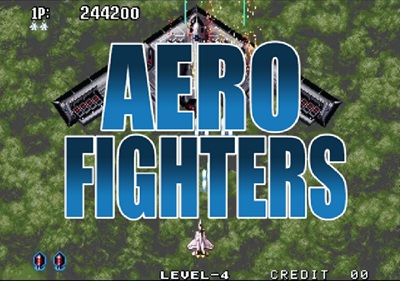
Aero Fighters 1
Aero Fighters for Neo Geo is a fast-paced vertical shoot ’em up that delivers nonstop arcade action with explosive visuals and intense gameplay. Players pilot a selection of unique fighter jets, each with its own special weapons and storylines, across a series of challenging missions around the world. Known for its vibrant sprite work, chaotic enemy patterns, and memorable voice lines, Aero Fighters captures the essence of 90s arcade energy—rewarding sharp reflexes, precision shooting, and strategic use of power-ups. It remains one of the standout shooters on the Neo Geo platform, beloved by fans of classic arcade aerial combat.
NEOGEO
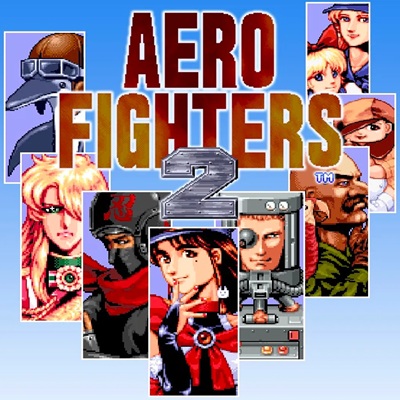
Aero Fighters 2
Aero Fighters 2 for Neo Geo builds upon the original’s intense arcade formula with even sharper graphics, faster gameplay, and a greater sense of global chaos. Players once again choose from a roster of elite pilots and fighter jets—each representing a different nation—and battle through waves of enemies across diverse international stages. The game introduces new weapon upgrades, improved enemy AI, and even more outrageous boss fights that fill the screen with explosions. With its tight controls, energetic soundtrack, and distinct humor (like pilots cracking jokes mid-battle), Aero Fighters 2 remains one of the most polished and beloved vertical shooters in the Neo Geo library.
NEOGEO
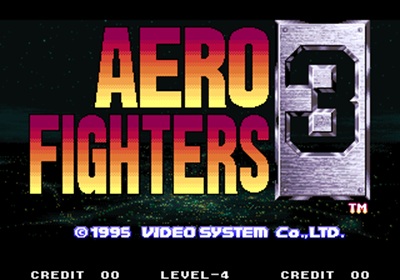
Aero Fighters 3
Aero Fighters 3 for Neo Geo takes the high-octane aerial warfare of the series to new heights with even more chaotic action, detailed visuals, and eccentric character design. Featuring a diverse lineup of pilots—from serious aces to downright bizarre characters—the game mixes intense shooting gameplay with a surprising dose of humor and personality. Players blast through massive stages filled with relentless enemy fire, unique boss encounters, and branching stage paths that add replay value. With its refined controls, flashy explosions, and over-the-top presentation, Aero Fighters 3 stands out as one of the most entertaining and unpredictable entries in the Neo Geo shoot ’em up lineup, perfectly capturing the wild spirit of 90s arcade gaming.
NEOGEO
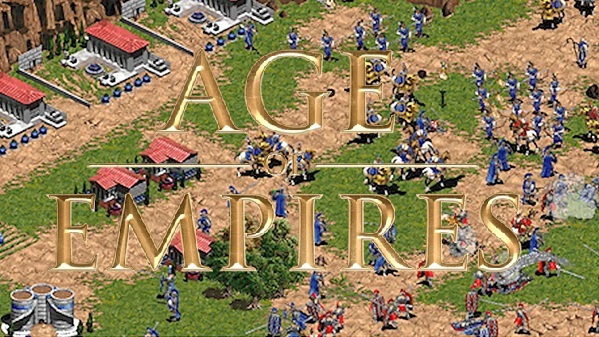
Age of Empires
Age of Empires is a classic real-time strategy game series first released in 1997, developed by Ensemble Studios and published by Microsoft. The game is set across different eras of human history, from the Stone Age to the Imperial Age, allowing players to build civilizations, gather resources, train armies, and wage wars against rivals. Known for its balance of economic management and military strategy, Age of Empires became a cornerstone of the RTS genre, influencing countless games that followed. Its mix of historical settings, multiplayer competitiveness, and iconic sound design has made it a beloved franchise that continues to attract new and veteran players through remasters and new installments.
WIN95
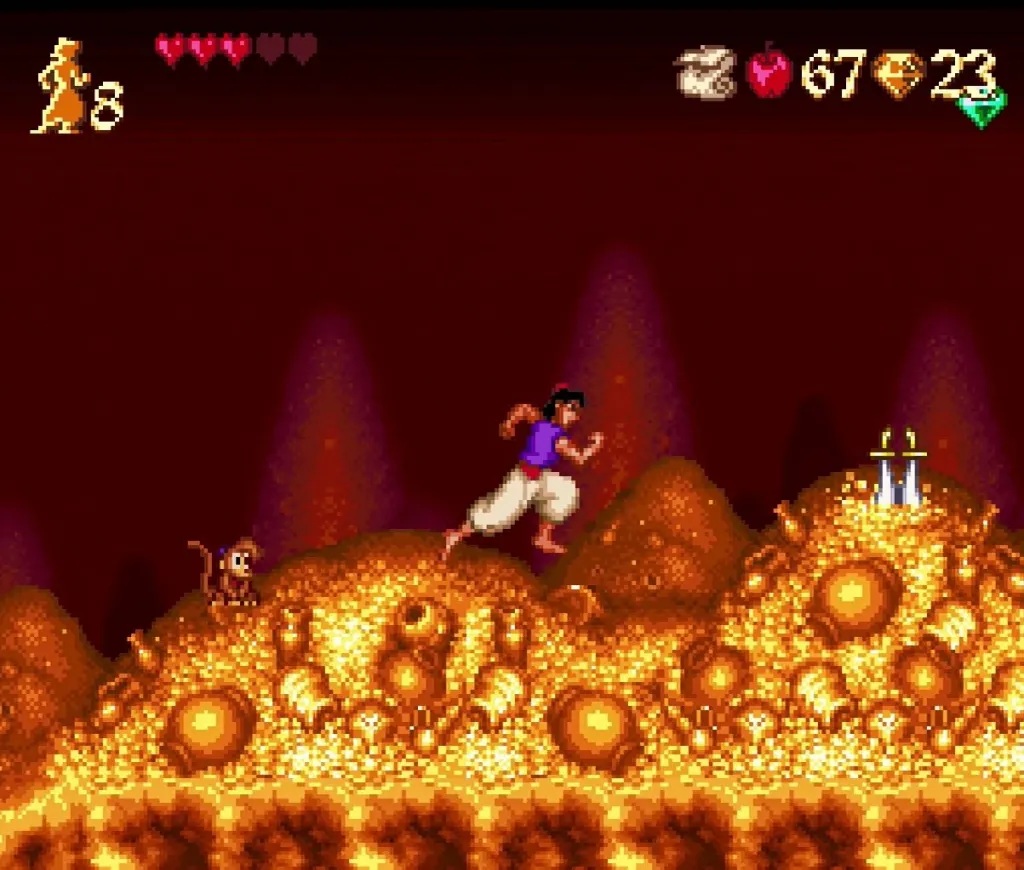
Aladdin
Disney’s Aladdin for the Sega Mega Drive (Genesis), released in 1993, is still remembered as one of the standout licensed games of the 16-bit era. Developed by Virgin Games with animation input from Disney’s own artists, the game captured the look and feel of the film with fluid character animations, vibrant backgrounds, and a lively soundtrack. Unlike Capcom’s SNES version, which emphasized jumping and platforming, the Mega Drive version gave Aladdin a sword, making combat a central part of the action alongside tricky platforming sequences. Levels let players relive memorable scenes from the movie, from the streets of Agrabah to the Cave of Wonders and Jafar’s palace. Praised for its graphics and faithful adaptation of the film’s spirit, Aladdin became one of the best-selling titles on the system and remains a nostalgic favorite for Sega fans.
SegaMD
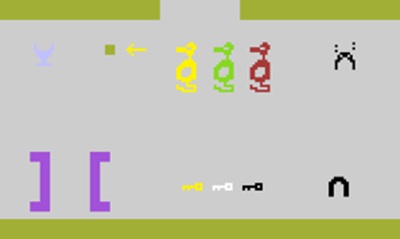
Adventure
Adventure for the Atari 2600, released in 1980 and created by Warren Robinett, is widely regarded as the first action-adventure video game ever made — and a direct ancestor of modern fantasy and RPG titles. Players take control of a tiny square hero tasked with retrieving the stolen Enchanted Chalice and returning it to the golden castle. Along the way, they must navigate mazes, unlock castles, and battle dragons using the world’s simplest sword icon. Despite its primitive graphics, Adventure introduced revolutionary concepts such as item-based puzzles, an open world, and even the very first hidden “Easter egg” in gaming — Robinett’s secret signature room. It remains a landmark in game design, proving that imagination and gameplay depth could thrive even on the humble Atari 2600.
ATARI

Alley Cat
Alley Cat is a cherished classic among old-school computer gamers, where you play as a tomcat aiming to achieve the highest score while tackling quirky minigames. Your ultimate goal is to attract a feline mate, adding charm and humor to the challenge. However, nearly everything in the game conspires against you, from tricky obstacles to rival cats. With skill and quick thinking, you’ll need to overcome these hurdles. Good luck in your quest for love and victory!
DOS
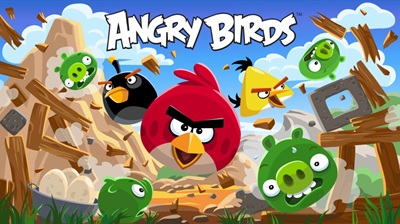
Angry Birds Online
Angry Birds Online was a browser-based Flash version of Rovio’s hit puzzle game that let players enjoy the classic slingshot action directly through their web browser. Released during the height of Flash gaming, it featured the same addictive physics-based gameplay as the original mobile version—players launched colorful birds at structures to defeat green pigs across increasingly challenging levels. The online edition quickly gained popularity for bringing the full Angry Birds experience to PCs without installation, though it was later discontinued following the end of Adobe Flash Player’s support in 2020. Today, fans can still relive it through emulators like Ruffle or HTML5 remakes.
HTML5
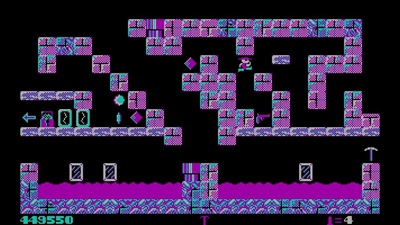
Arctic Adventure
Arctic Adventure is a classic DOS platformer developed by Apogee in 1991, known for its charmingly simple graphics, exploration-focused gameplay, and classic early-90s PC action feel. You play as the treasure hunter Captain Keen—yes, the same quirky adventurer from Pharaoh’s Tomb—who sets off into the frozen Arctic in search of a legendary buried treasure. Across four episodic adventures, you navigate icy caverns, slippery platforms, dangerous creatures, hidden traps, and clever puzzles while collecting keys, treasure, and essential items needed to survive the harsh environment. Arctic Adventure captures that nostalgic Apogee style: straightforward but addictive gameplay, tight controls, and a sense of mystery that makes each level feel like a small expedition into a forgotten world of ice and secrets.
DOS
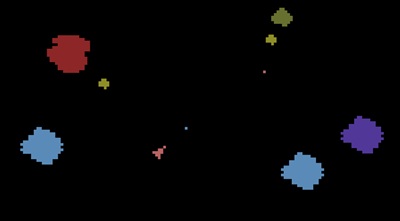
Asteroids
Asteroids for the Atari 2600, released in 1981, is one of the system’s most iconic and enduring titles. Adapted from Atari’s own arcade smash hit, it captures the core thrill of piloting a lone spaceship in an asteroid field, blasting rocks into smaller fragments while dodging debris and deadly UFOs. The game offers smooth rotation-based movement and rapid-fire shooting, which felt groundbreaking for its time. Although simplified visually compared to the vector-based arcade original, the 2600 version introduced exciting new features, including color graphics and a variety of game modes. Asteroids remains a shining example of how clever programming and fast-paced gameplay could turn the Atari 2600’s limitations into pure retro fun.
ATARI
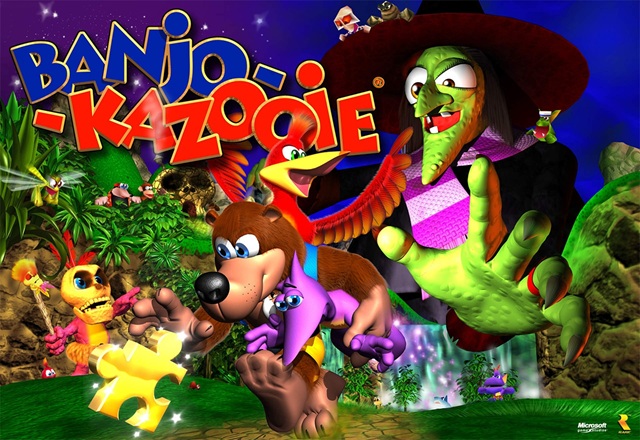
Banjo Kazooie
Banjo-Kazooie on the Nintendo 64, released in 1998, is often remembered as Rare’s charming answer to Super Mario 64, blending whimsical humor, clever level design, and a quirky duo at its heart. Players take control of Banjo the bear and his wisecracking bird sidekick Kazooie, each bringing unique abilities that combine for creative platforming and puzzle-solving. The game stood out with its colorful, expansive worlds filled with collectibles, secrets, and unforgettable characters like Mumbo Jumbo and Gruntilda the witch. Beyond its lighthearted story and witty dialogue, Banjo-Kazooie was praised for its smooth controls, catchy Grant Kirkhope soundtrack, and imaginative gameplay that made exploration feel rewarding. It quickly became a fan favorite and solidified its place as one of the most beloved 3D platformers of the N64 era.
N64
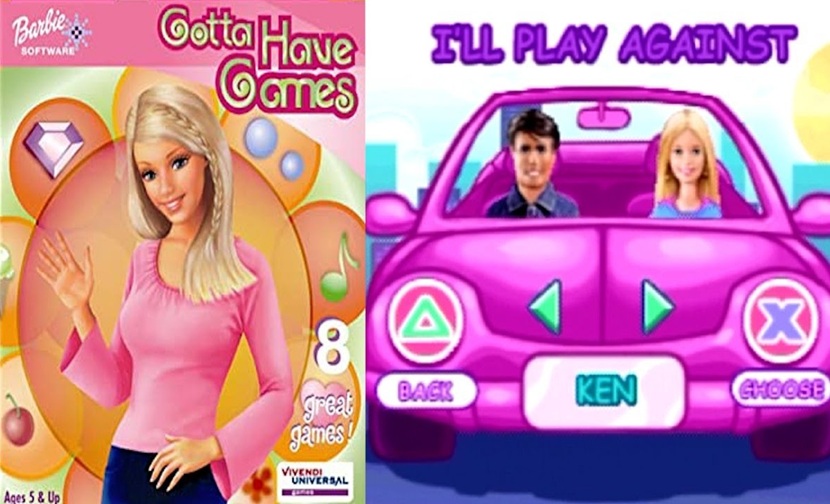
Barbie Gotta Have Games
Barbie: Gotta Have Games on the PlayStation (PSX), released in 2000, was a party-style mini-game collection aimed at younger players and Barbie fans. Instead of a traditional story-driven adventure, the game offered a series of colorful activities set in a Barbie-themed world, such as arcade-style challenges, sports-inspired contests, and puzzle-based games. It allowed both single-player and multiplayer play, making it a lighthearted pick for friends or siblings to enjoy together. The visuals leaned into the bright, pink, and fashion-forward Barbie aesthetic, while the gameplay remained simple and accessible, prioritizing fun over complexity. Though it didn’t reach the same recognition as other PlayStation party titles like Crash Bash or Mario Party (on Nintendo), it stood out as one of the more unique Barbie games on PSX, giving fans a chance to dive into a mix of casual mini-games wrapped in the iconic brand’s style.
PSX
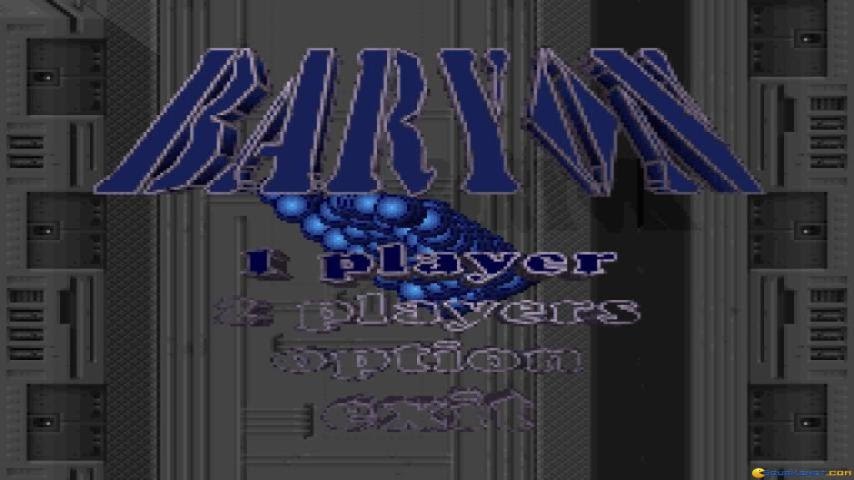
Baryon
Get ready for explosive, fast-paced space combat—Baryon, the classic vertical-scrolling shoot 'em up, is now fully playable in your web browser! Thanks to modern web technology, this MS-DOS arcade-style shooter has been ported using DOS-JS, allowing players to experience intense bullet-dodging action, powerful weapon upgrades, and high-speed dogfights without needing an emulator or special setup. Whether you're playing on desktop, mobile, or tablet, you can now pilot your spacecraft and blast through enemy waves anytime, anywhere, with touchscreen support for mobile users.
DOS
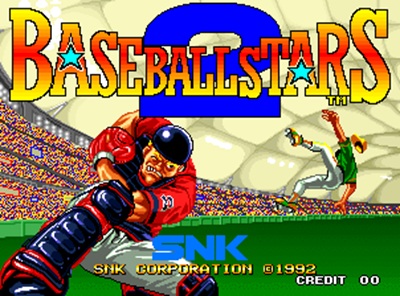
Baseball Stars
Baseball Stars is one of Neo Geo’s most iconic sports titles, capturing the excitement and depth of baseball with arcade-style flair. Released by SNK, the game combines fast-paced gameplay with surprisingly strategic mechanics, allowing players to manage teams, upgrade stats, and even create custom players—a rarity for its time. Its crisp visuals, energetic sound effects, and smooth animations made it stand out in arcades and home consoles alike. Whether you’re pitching, fielding, or sending one over the fence, Baseball Stars delivers that nostalgic 90s SNK magic that keeps it a fan favorite to this day.
NEOGEO
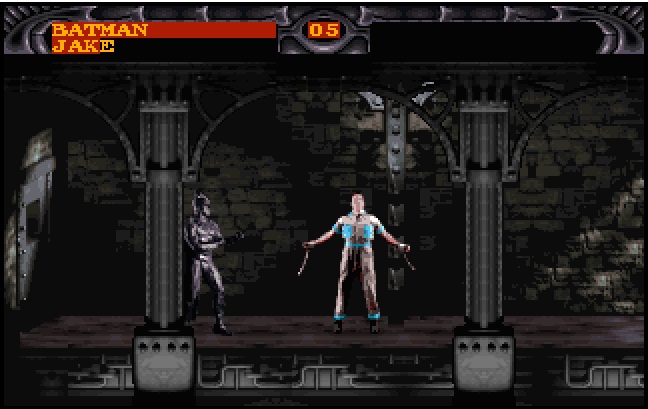
Batman Forever
Get ready for explosive, fast-paced space combat—Baryon, the classic vertical-scrolling shoot 'em up, is now fully playable in your web browser! Thanks to modern web technology, this MS-DOS arcade-style shooter has been ported using DOS-JS, allowing players to experience intense bullet-dodging action, powerful weapon upgrades, and high-speed dogfights without needing an emulator or special setup. Whether you're playing on desktop, mobile, or tablet, you can now pilot your spacecraft and blast through enemy waves anytime, anywhere, with touchscreen support for mobile users.
DOS
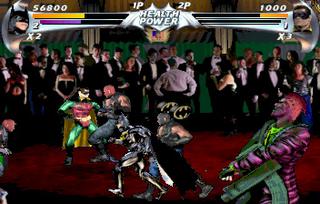
Batman Forever Arcade Game
Batman Forever: The Arcade Game, released in 1996, was a fast-paced beat ’em up that took inspiration from the 1995 film Batman Forever but amped up the action to arcade extremes. Developed by Iguana Entertainment and published by Acclaim, it featured digitized character models similar to Mortal Kombat, giving Batman and Robin a realistic look as they fought waves of thugs. The gameplay was over-the-top and frenetic, with screen-filling special moves, wild combos, and power-ups that leaned more toward arcade spectacle than movie accuracy. Players could team up in two-player co-op, taking on villains like Two-Face and the Riddler across chaotic, neon-lit stages. While it didn’t achieve the same legendary status as Final Fight or Teenage Mutant Ninja Turtles: The Arcade Game, Batman Forever’s arcade version carved out a niche as a flashy, chaotic brawler that combined comic book flair with mid-’90s arcade excess.
PSX
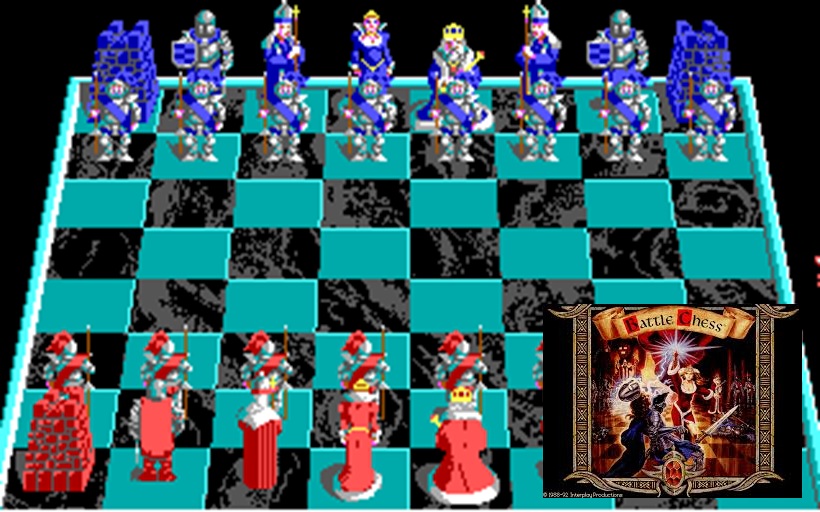
Battle Chess
Battle Chess, the iconic animated chess game from 1988, is now fully playable in your web browser, thanks to DOS-JS. This desktop-only version retains the classic strategic gameplay while bringing back the medieval-themed battle animations that made the game legendary. Each chess piece comes to life, engaging in unique combat sequences when capturing an opponent, adding a visual and entertaining twist to traditional chess. Featuring challenging AI, immersive pixel art, and a full save/load system, this web-based port offers the ultimate way to experience Battle Chess without the need for downloads or emulators.
DOS
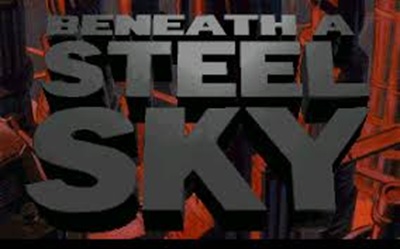
Beneath a Steel Sky
Beneath a Steel Sky for DOS is a classic point-and-click cyberpunk adventure that stood out in the 90s for its rich storytelling, cinematic presentation, and surprisingly deep world-building. Set in a dystopian future controlled by oppressive corporations, you play as Robert Foster, a man raised in the wastelands who finds himself thrust into a sprawling, polluted mega-city ruled by a tyrannical AI. The game blends sharp British humor, atmospheric pixel art, and engaging puzzles, supported by memorable voice acting in the CD-talkie edition. Its blend of social commentary, dark comedy, and immersive world design helped cement it as one of the most iconic DOS adventure games, still praised today for its narrative depth and stylish cyberpunk feel.
DOS
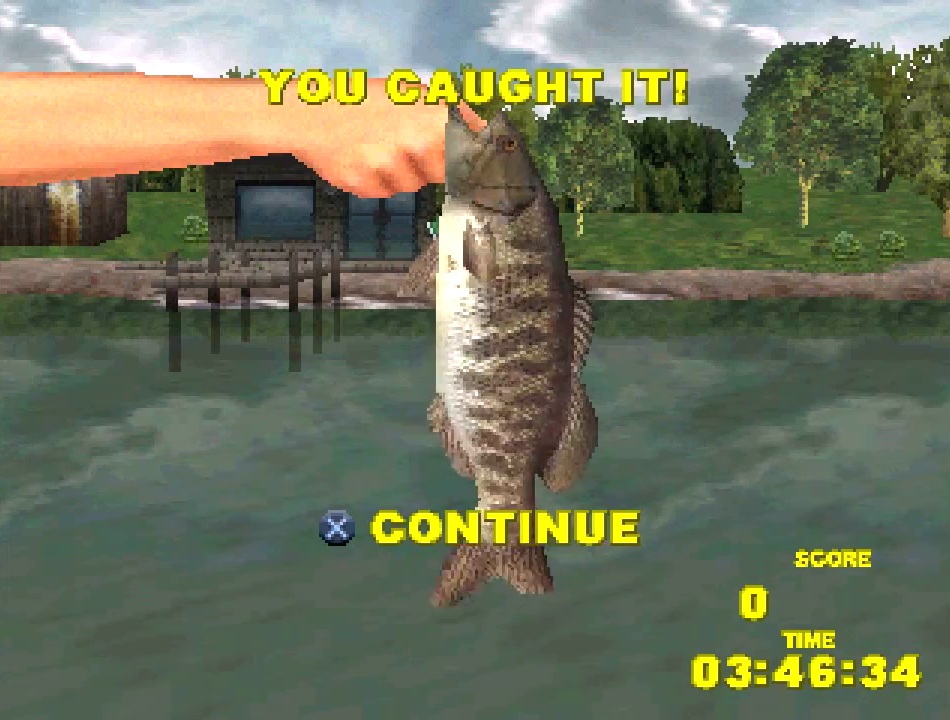
Big Bass Fishing
Big Bass Fishing for the PlayStation (PSX) is a relaxing yet surprisingly competitive fishing simulation released in the early 2000s. The game puts players on lakes, rivers, and reservoirs where the goal is to catch the biggest and heaviest bass possible within a time limit. Featuring arcade-style mechanics rather than strict realism, it lets you pick different lures, rods, and fishing spots to improve your chances, while the tension meter system simulates the struggle of reeling in a fish without snapping the line. With its simple controls, colorful environments, and focus on chasing records, Big Bass Fishing became a popular casual title for PS1 owners who wanted a break from fast-paced action games, offering a laid-back but still rewarding gameplay experience.
PSX
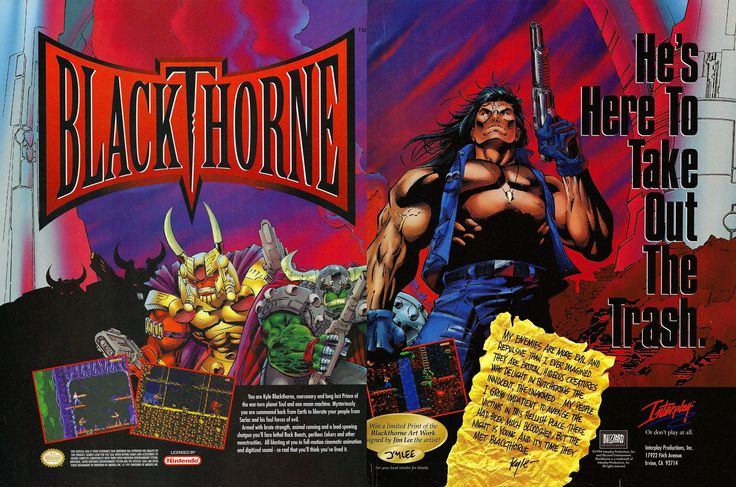
BlackThorne
Enter the dark and gritty world of Blackthorne, the cinematic action-adventure classic from the 16-bit era, now fully playable in your web browser! Thanks to modern web technology, this Super Nintendo Entertainment System (SNES) gem has been ported to a web-based format, allowing players to experience its rugged combat, strategic platforming, and intense sci-fi fantasy setting without needing an emulator or special setup. Whether you’re playing on desktop, mobile, or tablet, you can now step into the boots of Kyle Blackthorne and reclaim your homeland with just a click!
SNES
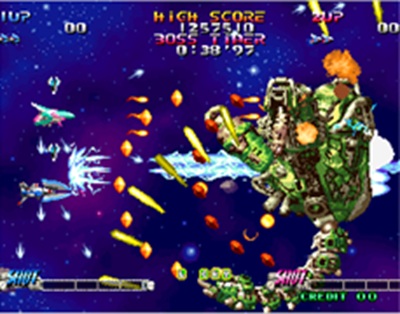
Blazing Star
Blazing Star for Neo Geo is a visually stunning horizontal shoot ’em up that showcases the system’s graphical power and fluid animation. Developed by Yumekobo, it features six unique ships, each with its own weapon system and special charge attacks, allowing for a variety of play styles. The game is known for its dazzling explosions, colorful backgrounds, and the iconic voice clips like “Bonus!” and “You fail it!” that became fan favorites. Beyond its flashy visuals, Blazing Star offers deep gameplay mechanics, rewarding skilled players with higher scores for chaining attacks and mastering power-ups. It remains one of the Neo Geo’s most beloved shooters—both beautiful to watch and thrilling to play.
NEOGEO
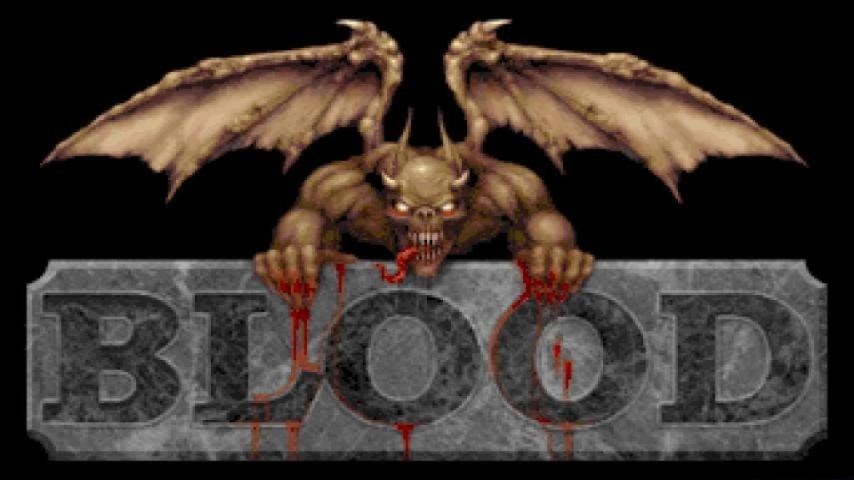
Blood
Step into the dark and twisted world of Blood, one of the most intense and atmospheric FPS games of the 90s, now fully playable in your web browser! Thanks to modern web technology, this MS-DOS horror classic has been ported using DOS-JS, allowing players to experience fast-paced action, gory combat, and horror-themed environments without needing an emulator or special setup. Whether you're playing on desktop, mobile, or tablet, you can now unleash destruction upon the Cabal cult anytime, anywhere, with touchscreen support for mobile users.
DOS
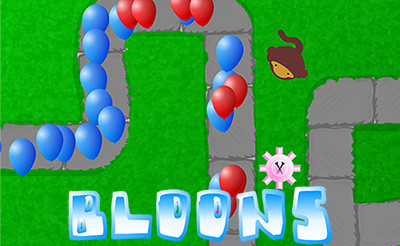
Bloons TD1
Bloons Tower Defense (often called Bloons TD 1), released in 2007 by Ninja Kiwi, was the humble yet addictive start of one of the most popular tower defense franchises ever made. The game’s premise was simple but satisfying: stop waves of colorful balloons (“bloons”) from reaching the end of a path by placing different types of dart-throwing monkeys and other defenses along the way. Each tower could be upgraded for greater popping power, introducing light strategy and planning as the waves grew tougher. With its cheerful visuals, catchy music, and easy-to-learn gameplay, Bloons TD became an instant browser classic on Flash game sites worldwide. Despite its simplicity compared to later sequels, it laid the foundation for the series’ signature charm—mixing humor, strategy, and endless replayability into one of the most recognizable tower defense experiences ever created.
HTML5

Bloons TD2
Bloons Tower Defense 2, released in 2007 by Ninja Kiwi, expanded on the original Bloons TD formula with more towers, tougher bloons, and deeper strategy while keeping the same colorful, addictive charm. Players once again placed dart monkeys and other defenses along winding paths to stop waves of bloons from escaping, but this time with new features like additional tower types, multiple upgrade levels, and enhanced bloon varieties—including camo and lead bloons that required specific tactics to defeat. The sequel also introduced new maps with varied layouts and difficulty levels, adding more replayability and challenge. While still simple by modern standards, Bloons TD 2 refined the core gameplay loop that made the first game so popular, setting the stage for the increasingly complex and polished entries that followed in the now-iconic tower defense series.
HTML5
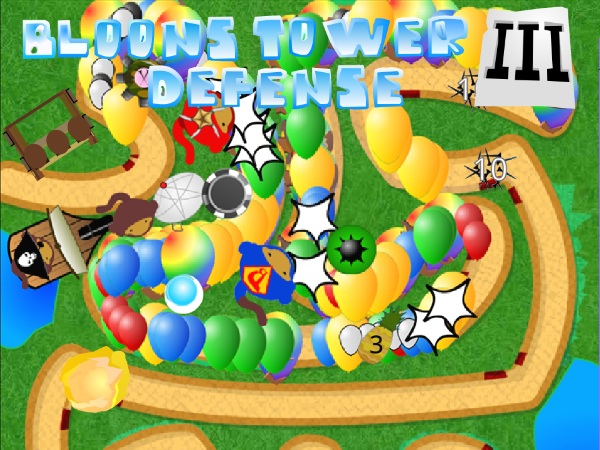
Bloons TD3
Bloons TD 3 is a classic tower defense game developed by Ninja Kiwi, continuing the addictive balloon-popping fun of its predecessors with expanded maps, towers, and gameplay mechanics. Players must strategically place monkey towers, each with unique popping abilities, to stop waves of colorful balloons—or “bloons”—from reaching the end of the path. Compared to earlier entries, Bloons TD 3 introduced new tower upgrades, improved graphics, and special bloon types that require different tactics to defeat. With its simple yet highly engaging gameplay loop, it became one of the most popular Flash-based strategy games of its time, setting the stage for the modern Bloons TD series that later evolved into mobile and PC platforms.
HTML5
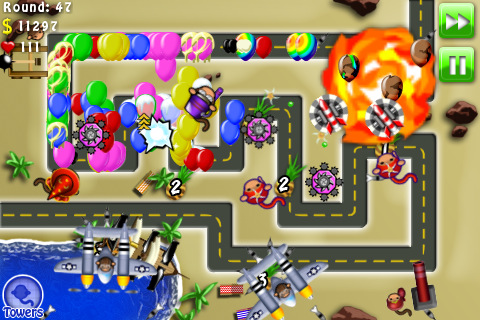
Bloons TD4
Bloons TD 4 took the balloon-popping mayhem to a new level, offering refined visuals, more tower upgrades, and a wider variety of challenging maps. Developed by Ninja Kiwi, it marked a major leap from the earlier Flash-era games by introducing powerful new towers like the Monkey Apprentice and Monkey Buccaneer, along with enhanced upgrade paths that added more strategy and depth. Players could also unlock special modes, such as Reverse and Apocalypse, keeping the gameplay fresh and unpredictable. Its sleek interface, smoother animations, and expanded tower roster made Bloons TD 4 one of the most polished and replayable entries in the series, solidifying the franchise’s reputation as a benchmark in the tower defense genre.
HTML5
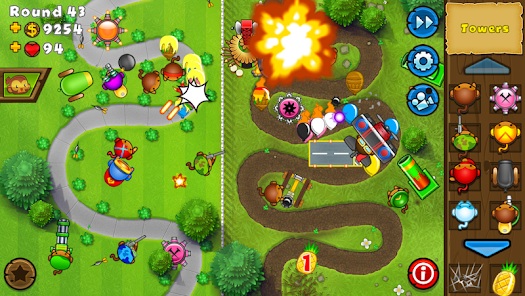
Bloons TD5
Bloons TD 5 elevated the series to a new standard of depth and polish, combining charming cartoon visuals with complex strategy and endless replayability. Developed by Ninja Kiwi, it introduced a robust tower upgrade system with two distinct upgrade paths per tower, along with new additions like the Monkey Engineer, Spike Factory, and Co-Op multiplayer mode. Each map offered unique layouts and difficulty levels, encouraging players to experiment with different tower combinations and upgrade strategies to handle the ever-tougher waves of bloons. The game also featured daily challenges, special missions, and sandbox mode, making it one of the most content-rich tower defense titles of its time. Bloons TD 5 became a defining entry in the franchise—accessible for newcomers yet deep enough to keep veterans hooked for hours.
HTML5

Blueprint
Blueprint on the Atari 2600 is a weird, funny, and actually pretty clever action/puzzle game where you’re trying to build a secret weapon before a monster catches your girlfriend. The screen shows a neighborhood of houses, and inside those houses are different parts of your machine. You run around, enter houses, grab one part at a time, and bring each piece back to your workshop at the bottom to assemble it according to the actual blueprint layout. While you’re doing this, you’ve got to avoid random hazards like bombs that sometimes appear instead of real parts, plus there’s constant time pressure because the monster keeps chasing. Once the weapon is fully assembled, you use it to blast the monster and save the day. It’s basically part scavenger hunt, part memory test, part panic.
ATARI
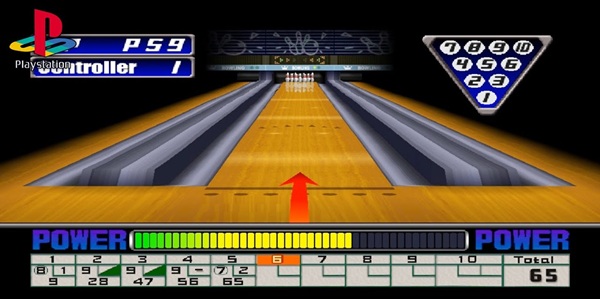
Bowling
Bowling for the PlayStation, released in 1999 by D3 Publisher as part of its Simple 1500 budget series in Japan (and later localized in some regions), delivered a straightforward and casual take on the sport. The game offered multiple modes such as standard tournament play, practice sessions, and even multiplayer, making it easy to pick up for quick matches with friends. Players could choose from different characters, ball weights, and alleys, while adjusting angle, power, and spin to aim for strikes and spares. The graphics were modest but clean, and the physics leaned toward arcade-style fun rather than strict realism. While it wasn’t a blockbuster release, Bowling carved out a niche as a lighthearted, affordable title that fit well into the PlayStation’s wide library of quirky and accessible games, appealing especially to fans of casual sports experiences.
PSX
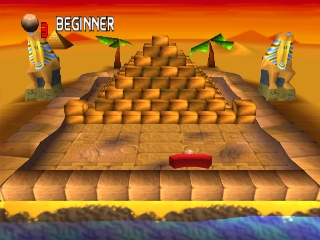
Breakout
Breakout for the PlayStation, released in 2000, was a 3D reimagining of Atari’s classic brick-busting arcade game. Instead of just controlling a paddle, players guided a quirky character named Bouncer, who used his ball-bouncing skills to smash through colorful levels filled with bricks, obstacles, and enemies. The game expanded on the original’s simple formula by introducing themed stages, power-ups, puzzle elements, and boss battles, giving the experience more variety and depth. Its cartoonish visuals and lighthearted tone aimed to appeal to younger audiences while still nodding to the arcade roots. Although it received mixed reviews—some praising its creative spin and others feeling it strayed too far from the simplicity of the original—it remains an interesting part of the PlayStation’s library, blending nostalgia with early 3D experimentation.
PSX
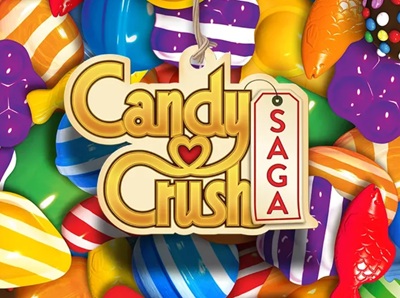
Candy Crush
Candy Crush Saga (2012) is a match-three puzzle game developed by King that challenges players to swap colorful candies to form matching combinations and complete objectives within a set number of moves or time. As players progress through hundreds of levels, new mechanics like chocolate blocks, jelly tiles, and special candies add complexity and strategy. Its vibrant visuals, simple yet addictive gameplay, and frequent rewards helped it become one of the most popular mobile games ever. With social integration, daily challenges, and evolving events, Candy Crush has remained a global phenomenon in casual gaming.
HTML5
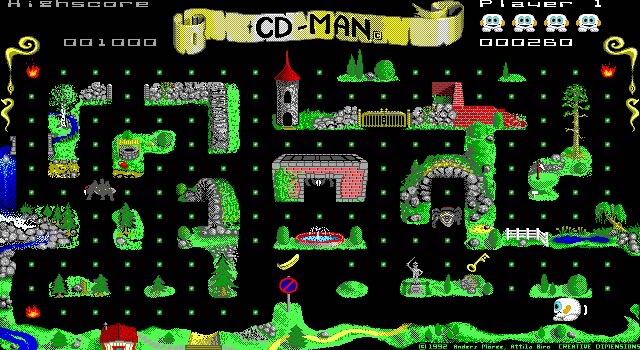
CD-Man 2
CD-Man II is a classic DOS-era maze arcade game released in 1992 as a sequel to the original CD-Man, heavily inspired by Pac-Man but with its own creative twists. Players guide CD-Man through colorful, maze-like levels filled with dots to collect, while avoiding various enemies and navigating obstacles such as teleporters and hidden passages. The sequel introduced more polished graphics, digitized sound effects, and additional gameplay elements compared to its predecessor, making it a popular shareware title in the early ’90s. Its charm lies in combining familiar arcade action with unique design elements that made it stand out among the many Pac-Man clones of the DOS gaming era.
DOS
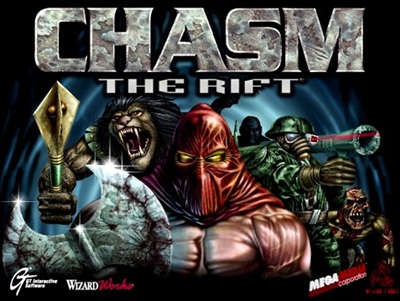
Chasm The Rift
Chasm: The Rift, released for DOS in 1997 by Action Forms, was a first-person shooter often compared to Doom and Quake, but with its own unique flair. Players took on the role of a time-traveling soldier battling grotesque mutants and monsters across various eras, from ancient Egypt to futuristic military bases. What set Chasm apart was its early use of dismemberment mechanics—enemies could lose limbs mid-fight yet continue attacking—adding a visceral edge uncommon for its time. The game featured 3D environments, detailed sprite-based enemies, and a mix of fast-paced gunplay and puzzle-solving. While it didn’t reach the same acclaim as id Software’s titles, Chasm: The Rift earned cult status among retro FPS fans for its atmospheric design, gritty visuals, and creative approach to combat, standing as one of the more underrated shooters of the late ’90s DOS era.
DOS
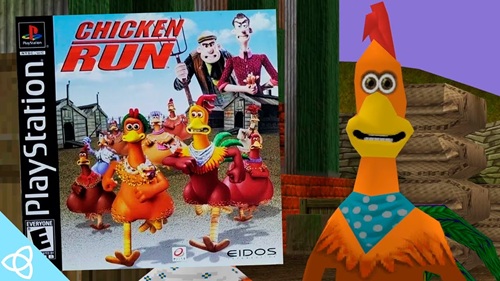
Chicken Run
Chicken Run for the PlayStation, released in 2000, was a stealth-based adventure game inspired by the Aardman/DreamWorks animated film. Players took control of Ginger and other chickens from the movie as they plotted daring escapes from Mrs. Tweedy’s farm. Instead of fast-paced platforming, the gameplay leaned heavily into sneaking around guards, dogs, and spotlights while collecting items to build contraptions for escape attempts. Missions often involved distracting enemies, hiding in shadows, and solving small puzzles to progress, giving the game a unique flavor compared to many other licensed titles of the era. Its claymation-style graphics captured the charm of the film, complete with voice clips from the movie’s cast, which added authenticity. While reviews were mixed due to repetitive objectives and tricky controls, Chicken Run stood out as a faithful adaptation that tried something different, blending stealth gameplay with the humor and charm of the beloved film.
PSX
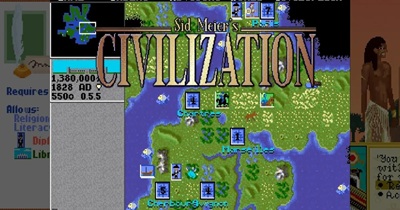
Civilization
Sid Meier’s Civilization, released for DOS in 1991 by MicroProse, was a groundbreaking strategy game that let players build an empire to stand the test of time. Starting in 4000 BC with a single settler, players guided their civilization through centuries of development—founding cities, researching technologies, waging wars, and negotiating diplomacy—until reaching victory through conquest, space exploration, or cultural dominance. The game’s turn-based structure allowed for deep strategic thinking, balancing expansion, economy, and military power while reacting to rivals like the Romans, Egyptians, or Babylonians. Its “one more turn” addictiveness and open-ended sandbox design made every playthrough unique, fostering stories of triumphs and downfalls across history. Civilization not only revolutionized PC gaming but also laid the foundation for one of the most influential franchises in gaming history, defining the 4X genre—explore, expand, exploit, and exterminate.
DOS

Cobra Mission
Cobra Mission: Panic in Cobra City is a unique entry in the DOS gaming era, released in the early 1990s and widely regarded as the first adult anime-style adventure game localized for Western audiences. Developed by Megatech Software, the game combines turn-based RPG elements with point-and-click exploration as players take on the role of a private investigator uncovering a crime syndicate in the fictional Cobra City. Beyond its somewhat risqué content, Cobra Mission stood out with its anime-styled visuals, quirky humor, and unusual combat mechanics, where players could target specific body parts during fights. While controversial at the time for its mature themes, it has since gained cult status among retro gaming enthusiasts.
DOS
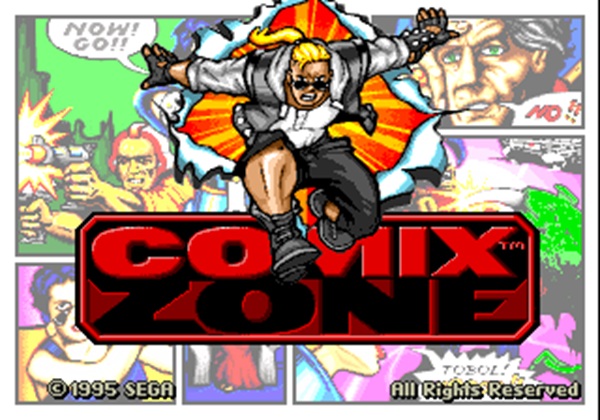
Comix Zone
Comix Zone for the Sega Mega Drive, released in 1995, was a unique beat ’em up that stood out with its comic book-inspired presentation and challenging gameplay. Players stepped into the role of Sketch Turner, a comic artist who gets pulled into his own creation and must fight his way through panels of a living comic book. The game’s innovative design had Sketch literally jumping between comic frames, tearing through page panels, and interacting with onomatopoeic sound effects like “BAM!” and “POW!” that came to life. Its fluid animation, creative visuals, and grungy rock-inspired soundtrack gave it a distinct style that set it apart from other games of its time. However, Comix Zone was also notorious for its steep difficulty, as limited health and scarce items made progression tough. Despite this, it became a cult classic, remembered fondly as one of the most original and stylish titles on the Mega Drive.
SegaMD
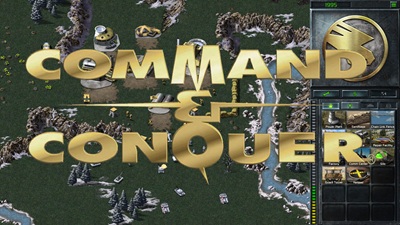
Command & Conquer
Command & Conquer, released for DOS in 1995 by Westwood Studios, was a revolutionary real-time strategy game that helped define the genre. Set in a near-future conflict between the Global Defense Initiative (GDI) and the Brotherhood of Nod, the game combined base building, resource management, and tactical combat in a fast-paced, intuitive format. Players harvested Tiberium—a mysterious and valuable alien substance—to fund their armies, constructing barracks, factories, and defenses while deploying tanks, infantry, and aircraft in real-time battles. Its full-motion video cutscenes added cinematic storytelling rarely seen in games at the time, immersing players in its gritty sci-fi war narrative. With its sharp AI, balanced factions, and groundbreaking multiplayer, Command & Conquer became a landmark title that not only spawned a massive franchise but also set the standard for strategy games for years to come.
DOS
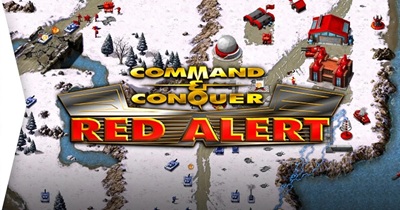
Command & Conquer - Red Alert
Command & Conquer: Red Alert, released for DOS and Windows in 1996 by Westwood Studios, was a prequel to the original Command & Conquer and one of the most beloved RTS games of its era. Set in an alternate history where Albert Einstein travels back in time to eliminate Hitler, the resulting power vacuum leads to a global war between the Allied Forces and the Soviet Union. The game built upon the classic C&C formula with faster gameplay, improved unit balance, and an expanded tech tree that included naval warfare—introducing ships and submarines for the first time in the series. Each faction featured unique units and strategies, from the Allies’ high-tech precision weapons to the Soviets’ brute-force tanks and air power. With its gripping FMV cutscenes, unforgettable soundtrack by Frank Klepacki (including the legendary “Hell March”), and highly addictive multiplayer, Red Alert became a cornerstone of the RTS genre and remains a fan favorite decades later.
DOS
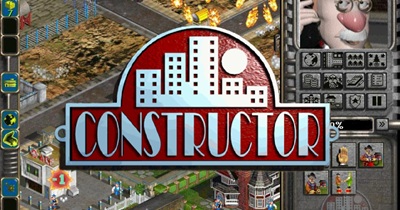
Constructor
Constructor is a classic DOS-era strategy and simulation game where you take on the role of a ruthless property developer trying to dominate the city by any means necessary. Released in the late 90s, it blends real-time management with a humorous, slightly chaotic twist, letting you build houses, manage tenants, expand your territory, and sabotage rival developers using everything from noisy neighbors to full-blown gangsters. The charm of Constructor lies in its mix of strategy, dark comedy, and unpredictable AI behavior, making every playthrough feel lively and full of mischief.
DOS
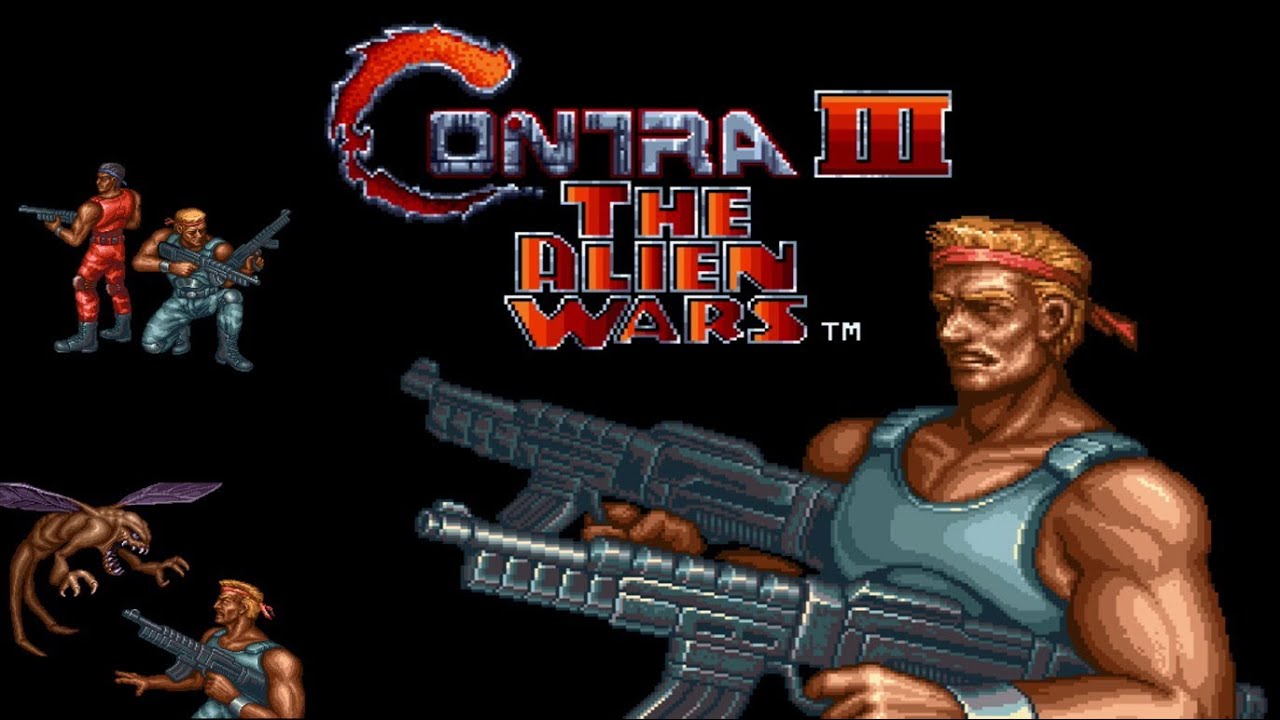
Contra 3 - Alien Wars
Lock and load! Contra III: The Alien Wars, one of the most intense and action-packed run-and-gun shooters of the 16-bit era, is now fully playable in your web browser! Thanks to modern web technology, this Super Nintendo Entertainment System (SNES) classic has been ported using EmulatorJS, allowing players to experience explosive firefights, massive bosses, and non-stop action without needing an emulator or special setup. Whether you're playing on desktop, mobile, or tablet, you can now battle alien invaders anytime, anywhere, with touchscreen support for mobile users.
SNES
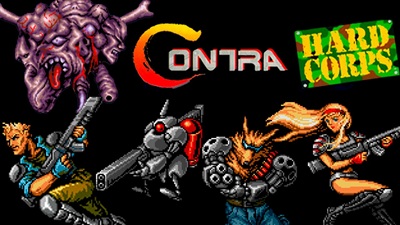
Contra Hard Corps
Contra: Hard Corps for the Sega Mega Drive (Genesis), released in 1994, is one of the most intense and challenging entries in Konami’s legendary run-and-gun series. Known for its blistering difficulty, it pushed the hardware to the limit with fast-paced action, explosive set pieces, and multiple branching story paths that gave the game high replay value. Players could choose from four unique characters—Ray the commando, Sheena the guerrilla fighter, Brad Fang the cyber-wolf, and Browny the tiny robot—each with their own weapon sets and play styles. Unlike earlier Contra games, Hard Corps introduced a weapon-switching system, massive screen-filling bosses, and multiple endings depending on player choices. Its chaotic pace, rocking soundtrack, and arcade-like challenge made it a cult classic, though its punishing difficulty also earned it a reputation as one of the toughest games on the Mega Drive. Today, it’s remembered as both a technical showcase for the console and a must-play for hardcore action fans.
SegaMD
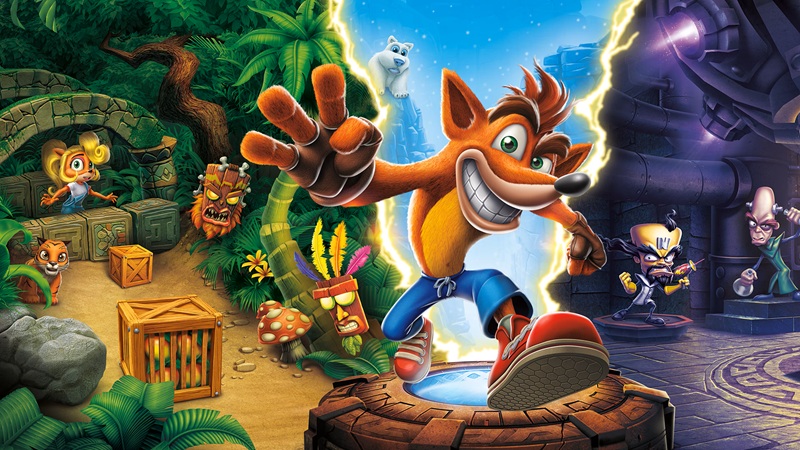
Crash Bandicoot
Crash Bandicoot is a beloved 3D platformer series that first debuted in 1996 on the Sony PlayStation, developed by Naughty Dog. The game stars Crash, a genetically enhanced bandicoot created by the evil scientist Dr. Neo Cortex, who escapes his creator’s experiments and sets out to stop Cortex’s plans for world domination. Known for its challenging levels, tight controls, and mix of linear platforming with hidden secrets, Crash Bandicoot became one of PlayStation’s most iconic mascots in the late 90s. Its tropical-themed worlds, quirky characters, and signature spinning attack made it stand out, eventually leading to sequels, spin-offs like Crash Team Racing, and modern remakes that reintroduced the franchise to new generations.
PSX
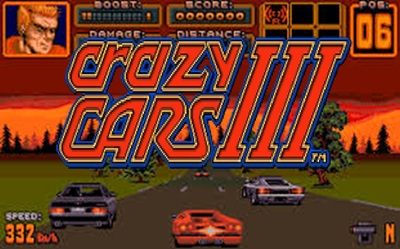
Crazy Cars 3
Crazy Cars III for DOS is a fast, stylish arcade racing game where you drive exotic supercars across the United States in a high-stakes outlaw competition. Known for its smooth scaling graphics and sharp sense of speed, the game challenges you to outrun traffic, dodge police roadblocks, and master winding highways while climbing the ranks of an underground racing league. With its mix of upgradeable vehicles, tight controls, and adrenaline-fueled chases, Crazy Cars III captures the classic 90s arcade racing spirit and remains one of the standout entries in the series.
DOS
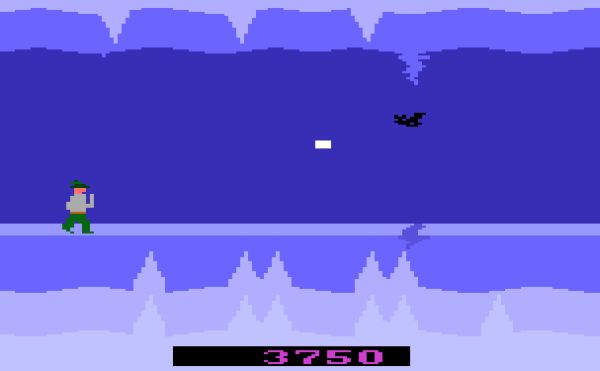
Crossbow
Crossbow on the Atari 2600 is a simple but tense shooter where you’re basically the guardian angel with a crossbow, protecting a group of clueless adventurers as they walk across different deadly scenes. You don’t control the characters at all — they just keep marching — but you do control the aim of the crossbow, and it’s your job to quickly shoot threats like snakes, fireballs, vultures, and enemy archers before they hit your party. The pressure comes from the fact that if you accidentally shoot the people you’re trying to protect, they die too, so every shot matters. It’s one of those games that feels arcade-like: fast reactions, high stakes, and instant punishment for mistakes, which made it stand out on the 2600.
ATARI
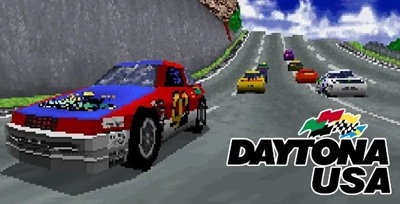
Daytona USA
Daytona USA for the Sega Saturn, released in 1995, brought Sega’s iconic arcade racer home with impressive speed and style. Players raced the Hornet stock car across three classic tracks filled with sharp turns and rival drivers, all backed by the unforgettable “Let’s go away!” soundtrack. Though the visuals and frame rate were toned down from the arcade version, the game retained its fast-paced action, smooth drifting, and addictive gameplay, making it one of the Saturn’s defining racing titles and a nostalgic favorite for fans of Sega’s arcade legacy.
SegaSaturn
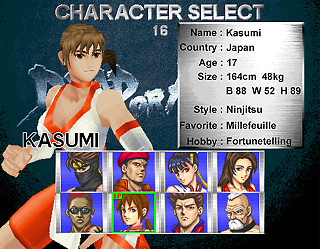
Dead or Alive
Dead or Alive, first released in arcades in 1996 and later ported to the Sega Saturn, PlayStation, and other platforms, made a name for itself with its fast-paced fighting mechanics and striking 3D visuals. Developed by Team Ninja and published by Tecmo, the game stood out by introducing the counter system, which allowed players to reverse opponents’ attacks with precise timing, adding depth and strategy to the combat. Its roster of fighters, including Kasumi, Ryu Hayabusa (from Ninja Gaiden), and Tina Armstrong, quickly became fan favorites. The PlayStation version in particular gained attention for its improved graphics and expanded modes, showcasing the hardware’s capabilities. While it was sometimes overshadowed by competitors like Tekken and Virtua Fighter, Dead or Alive carved out its own identity with fluid animations, interactive stages with danger zones, and a mix of speed and technical gameplay that laid the foundation for one of the most enduring fighting game franchises.
PSX
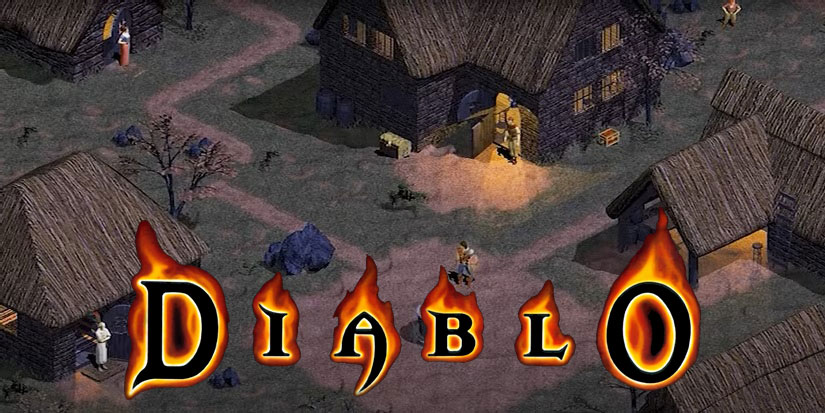
Diablo
Diablo (often referred to as Diablo 1) is a dark fantasy action role-playing game released by Blizzard Entertainment in 1996 that became a cornerstone of the genre. Set in the cursed town of Tristram, players descend through randomly generated dungeon levels beneath the cathedral to confront waves of demons and ultimately face the Lord of Terror, Diablo himself. With its atmospheric music, gothic visuals, and addictive hack-and-slash gameplay, Diablo introduced many players to online multiplayer through Battle.net and helped establish Blizzard as a powerhouse in PC gaming. Its blend of simple mechanics, deep loot system, and eerie storytelling made it a cult classic that still resonates with fans today.
HTML5

Digger
Take control of a mechanical digging machine as you tunnel your way through the earth, searching for valuable gems and the even more valuable bags of gold! But watch out for Nobbins and Hobbins, and don't be careless enough to let the bags of gold crush you! Digger is an arcade game combining elements of the popular arcade games Dig Dug and Mr. Do!. Players control the titular 'Digger' that can tunnel through dirt with ease. The goal of each level is to gather up each of the gems, which allows you to progress to the next stage.
DOS
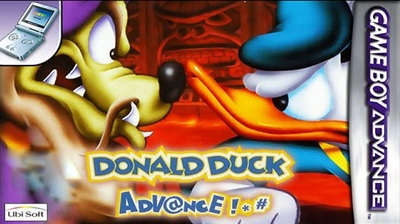
Donald Duck Advance
Donald Duck Advance for the Game Boy Advance is a colorful side-scrolling platformer that follows Donald on a frantic adventure to rescue Daisy, who has been kidnapped by the sinister wizard Merlock. The game features classic jump-and-run action across themed worlds filled with traps, enemies, and light puzzle elements, all wrapped in the familiar Disney charm. With smooth animations, responsive controls, and a playful storyline true to Donald’s personality, the game offers a fun, family-friendly platforming experience perfect for handheld play.
GBA
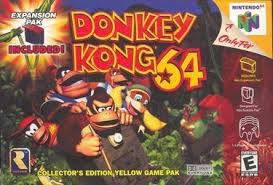
Donkey Kong 64
Donkey Kong 64, released for the Nintendo 64 in 1999, was a massive 3D platformer developed by Rare that expanded the Donkey Kong universe like never before. Players controlled Donkey Kong and four other members of the Kong family—Diddy, Lanky, Tiny, and Chunky—each with unique abilities and weapons, as they set out to stop King K. Rool from destroying DK Isle. The game was known for its enormous worlds, countless collectibles, and ambitious scope, pushing the N64 hardware to its limits and even requiring the Expansion Pak for enhanced performance. Its blend of exploration, puzzle-solving, and character-swapping mechanics gave it both depth and variety, though its huge number of collectibles earned it a reputation for being overwhelming. With its lively music, cheeky humor, and memorable “DK Rap,” Donkey Kong 64 became a hallmark of Rare’s golden era and remains a nostalgic favorite among fans of classic 3D platformers.
N64

Donkey Kong Country
Swing into action with Donkey Kong Country, one of the most iconic platformers of the 16-bit era, now fully playable in your web browser! Thanks to modern web technology, this Super Nintendo Entertainment System (SNES) classic has been ported using EmulatorJS, allowing players to experience beautiful pre-rendered graphics, fast-paced platforming, and barrel-blasting action without needing an emulator or special setup. Whether you're playing on desktop, mobile, or tablet, you can now jump, roll, and collect bananas anytime, anywhere, with touchscreen support for mobile users.
SNES

DOOM 1
Released in 1993 by id Software, DOOM was a groundbreaking game that forever changed the gaming industry. It introduced players to a gritty sci-fi horror setting, where they take on the role of Doomguy, a space marine stranded on a research base overrun by demons from Hell. Armed with a pistol, shotgun, chaingun, rocket launcher, and the legendary BFG 9000, players must fight through intense maze-like levels, uncovering secret areas, solving keycard puzzles, and blasting enemies into gory bits. The game’s fast-paced combat, intense music, and terrifying atmosphere made it an instant classic.
DOS

DOOM 2
Get ready for more demons, bigger levels, and even more action—DOOM 2, the legendary sequel to one of the most influential FPS games of all time, is now fully playable in your web browser! Thanks to modern web technology, this MS-DOS classic has been ported using DOS-JS, allowing players to experience fast-paced combat, new weapons, and intense demon battles without needing an emulator or special setup. Whether you’re playing on desktop, mobile, or tablet, you can now fight through Hell’s invasion anytime, anywhere, complete with touchscreen support for mobile users.
DOS
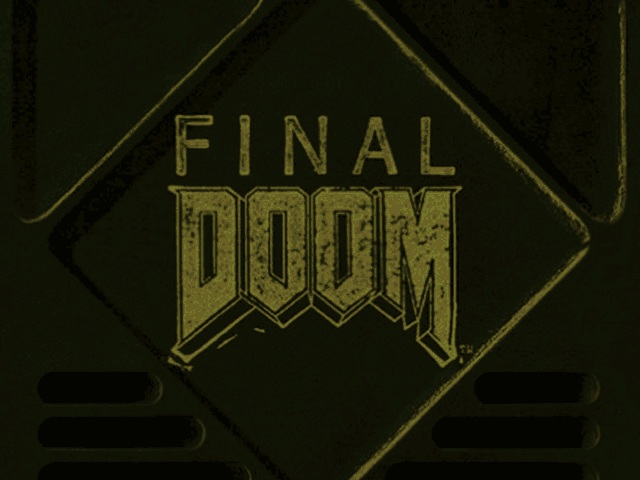
DOOM - Final Doom
The ultimate DOOM experience is here—Final DOOM, the brutal and challenging expansion to one of the most legendary FPS franchises, is now fully playable in your web browser! Thanks to modern web technology, this MS-DOS classic has been ported using DOS-JS, allowing players to experience intense action, new levels, and relentless demon battles without needing an emulator or special setup. Whether you’re playing on desktop, mobile, or tablet, you can now conquer Hell anytime, anywhere, with touchscreen support for mobile users.
TNT Evilution - A 32-level campaign featuring industrial and space station environments, more complex level design, and an expanded storyline about UAC’s continued experiments with interdimensional travel.
The Plutonia Experiment - Designed for hardcore players, this 32-level campaign is one of the most challenging DOOM experiences ever, with deadly enemy placement, intricate level layouts, and relentless combat encounters.
DOS
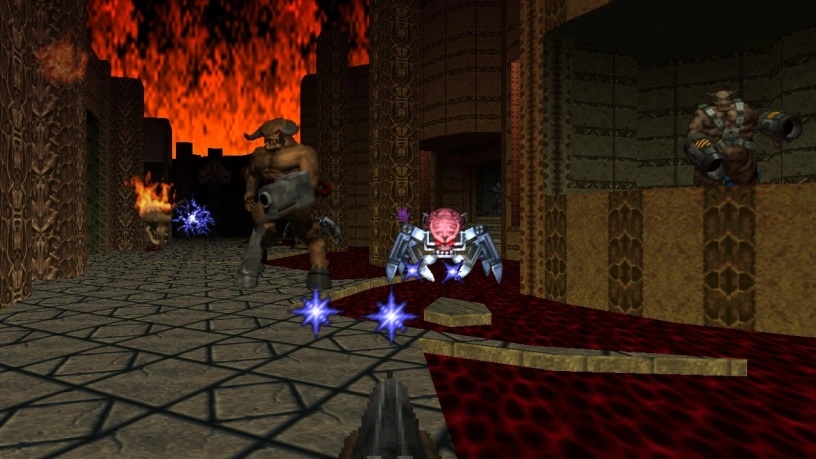
DOOM 64
Doom 64 is a first-person shooter developed by Midway Games and released exclusively for the Nintendo 64 in 1997 as a direct sequel to Doom II. Unlike simple ports of the original Doom to consoles, this game was built from the ground up with completely new levels, enhanced graphics, eerie lighting effects, and redesigned monsters that gave it a darker, more atmospheric feel. The story continues with the player once again taking the role of the unnamed Marine, sent back to a demon-infested facility on Mars to wipe out the remnants of Hell’s forces and ultimately face a new foe, the Mother Demon. While it kept the fast-paced gameplay and brutal weaponry of its predecessors, the game leaned heavily into horror tones, with moody ambient music and unsettling visuals that set it apart. Though somewhat overlooked at release due to the rise of 3D shooters like Quake and GoldenEye 007, Doom 64 later gained cult status and was re-released in 2020 on modern platforms, cementing its legacy as one of the most unique entries in the Doom franchise.
N64
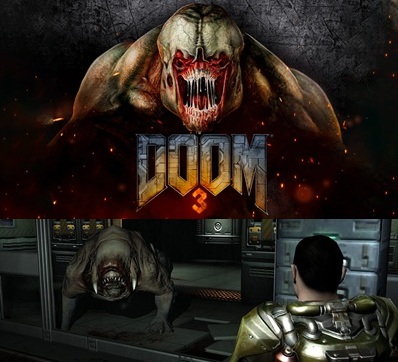
DOOM 3
DOOM 3, released in 2004 by id Software, was a bold reimagining of the legendary FPS franchise, shifting from the fast-paced, run-and-gun chaos of the originals to a slower, more atmospheric survival horror experience. Set on a research facility on Mars, the game follows a marine battling hordes of demons unleashed by a disastrous experiment with teleportation technology and Hell itself. Powered by the id Tech 4 engine, DOOM 3 delivered groundbreaking visuals for its time, with dynamic lighting, detailed environments, and terrifyingly realistic monster designs that pushed PC hardware to the limit. The game emphasized tension through claustrophobic corridors, eerie sound design, and limited resources, forcing players to juggle between their flashlight and weapons—a mechanic that sparked plenty of debate. While some longtime fans missed the speed and simplicity of classic DOOM, DOOM 3 carved its own legacy as a landmark in atmospheric shooters, blending cutting-edge tech with horror-driven storytelling.
Note: This is only DEMO version of the game.
HTML5
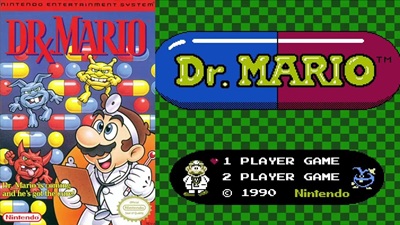
Dr Mario
Dr. Mario for the Super Nintendo Entertainment System (SNES) is a fast-paced, addictive puzzle game that puts players in the shoes of Mario—this time wearing a doctor’s coat instead of his usual plumber outfit. The goal is simple yet challenging: eliminate all the viruses inside a medicine bottle by strategically dropping colored capsules. Matching four or more of the same color, either horizontally or vertically, clears the viruses and earns points. With increasing speed, catchy remixed tunes like “Fever” and “Chill,” and the option for two-player head-to-head battles, Dr. Mario on SNES refines the original NES gameplay with smoother graphics, sharper controls, and that classic Nintendo polish that keeps players hooked for hours.
SNES
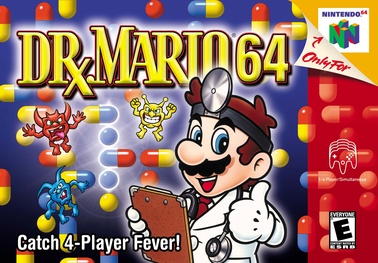
Dr Mario 64
Dr. Mario 64 brings the beloved virus-busting puzzle action into the 3D era with vibrant visuals, upbeat music, and a ton of new gameplay modes. Released in 2001 for the Nintendo 64, it builds upon the original formula by introducing a full story mode where Mario faces off against characters like Wario and Mad Scienstein in a quest to recover stolen Megavitamins. The game’s addictive capsule-matching gameplay remains intact, but what really sets it apart is its robust multiplayer feature—supporting up to four players simultaneously, making it one of the most chaotic and fun versions of Dr. Mario ever made. With sharp animations, colorful backdrops, and catchy remixes of the iconic “Fever” and “Chill” themes, Dr. Mario 64 stands out as the definitive version of Nintendo’s classic medical puzzler.
N64

Duke Nukem 3D
Lock and load, because Duke Nukem 3D, the action-packed, one-liner-fueled first-person shooter, is now fully playable in your web browser! Thanks to modern web technology, this MS-DOS classic has been ported using DOS-JS, allowing players to experience fast-paced combat, interactive environments, and all-out alien-blasting chaos without needing an emulator or special setup. Whether you're playing on desktop, mobile, or tablet, you can now take down alien invaders anytime, anywhere, with touchscreen support for mobile users.
DOS
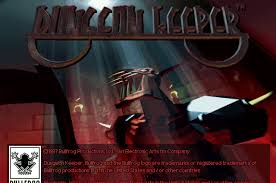
Dungeon Keeper
Dungeon Keeper, released for PC in 1997 by Bullfrog Productions, flipped the strategy genre on its head by letting players embrace the role of the villain. Instead of building kingdoms to protect, you managed a sprawling underground dungeon filled with traps, monsters, and dark magic, all designed to fend off invading heroes. The game’s standout feature was its mix of real-time strategy and management: you dug out tunnels, built rooms like lairs, treasure hoards, and torture chambers, then attracted creatures such as warlocks, trolls, and horned reapers to do your bidding. A unique touch was the “possess” mode, which allowed players to step directly into the eyes of their minions and fight in first-person. With its dark humor, atmospheric soundtrack, and addictive gameplay, Dungeon Keeper became a cult classic that offered a wickedly fun twist on god games. It’s fondly remembered today as one of Bullfrog’s most creative and influential titles.
DOS
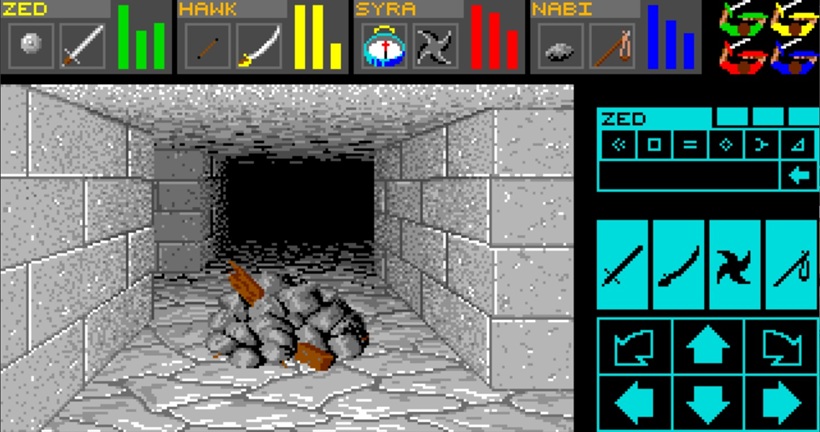
Dungeon Master 1
Dungeon Master (1987), originally released on the Atari ST and later ported to DOS, is one of the most influential real-time dungeon-crawling RPGs of its era. Unlike earlier turn-based RPGs, it presented a first-person perspective where players explored a vast, multi-level dungeon in real time, facing monsters, solving puzzles, and managing resources like food, water, and light. Players controlled a party of up to four adventurers, each with unique stats and skills that improved through use rather than traditional experience points. The game’s atmosphere was intense, with ambient sounds, hidden traps, and the constant threat of enemies lurking around corners, which gave it a survival-horror edge long before that genre existed. Dungeon Master on DOS preserved the challenging gameplay and immersive mechanics that made it a classic, and it went on to inspire countless successors, including Eye of the Beholder, Ultima Underworld, and even modern dungeon RPGs.
DOS
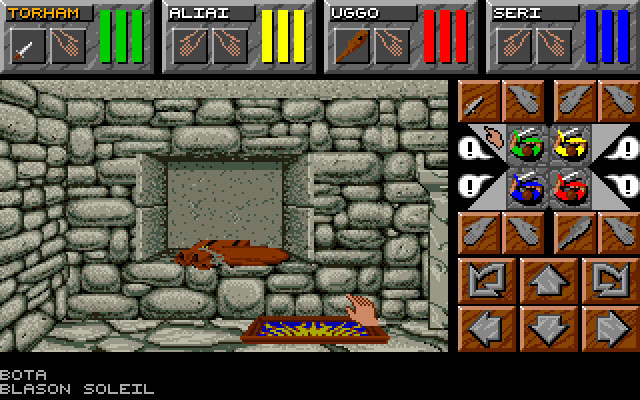
Dungeon Master 2
Dungeon Master II: The Legend of Skullkeep (1995) was the long-awaited sequel to the groundbreaking Dungeon Master, and its DOS release brought the series into a more advanced real-time RPG experience. Set in a dark, labyrinthine world beyond the original dungeon, it expanded gameplay with outdoor areas, more complex puzzles, new spells, and a wider variety of monsters to battle. The core mechanics stayed true to the original—first-person exploration, real-time combat, and a party of four adventurers whose skills improved through practice rather than experience points. However, Dungeon Master II introduced updated graphics, atmospheric music, and a more elaborate storyline centered around the mysterious Skullkeep fortress. While fans praised its depth and faithful continuation of the series, its late release in the mid-90s meant it was overshadowed by more modern RPGs like Ultima Underworld and Eye of the Beholder, but it remains a cult classic for dungeon-crawling enthusiasts who wanted a true evolution of the original.
DOS
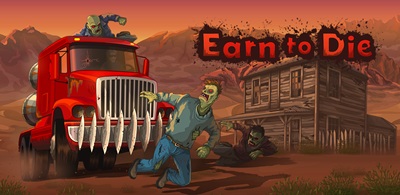
Earn to Die 1
Earn to Die is a popular Flash-based driving and survival game developed by Toffee Games, where players must traverse a zombie-infested wasteland using makeshift vehicles. The goal is simple yet addictive: drive as far as possible, plow through hordes of zombies, and earn money to upgrade your car with better engines, weapons, and armor. Featuring a perfect blend of ragdoll physics, destruction, and progression, the game quickly became a fan favorite on Flash portals for its sense of momentum and satisfying upgrades. Its success led to multiple sequels and mobile versions, evolving from a simple browser game into a full-fledged franchise known for chaotic fun and replayability.
HTML5
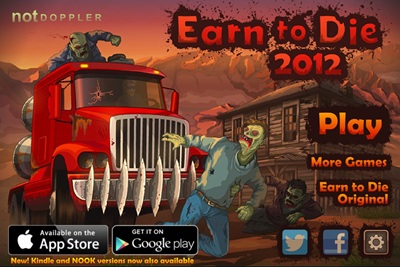
Earn to Die 2012 Part 1
Earn to Die 2012 Part 1 kicks off your desperate journey across a zombie-infested wasteland with nothing but a beat-up car and a burning urge to reach the evacuation point. The game drops you into a fast-paced upgrade loop, where every run through the undead hordes earns you cash to beef up your vehicle with stronger engines, bigger fuel tanks, and brutal add-ons like spiked bumpers and roof-mounted guns. Each attempt pushes you a little farther across the desert, turning a hopeless jalopy into a rolling fortress as you smash, plow, and blast your way to survival.
HTML5
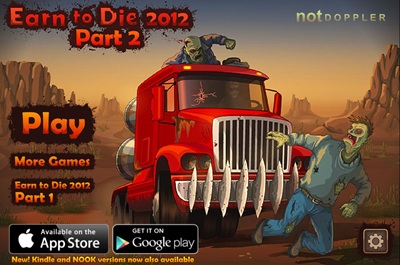
Earn to Die 2012 Part 2
Earn to Die 2012 Part 2 continues the chaotic road-trip through the zombie apocalypse, raising the stakes with tougher terrain, stronger undead, and bigger, meaner vehicles to build. This chapter moves the action from the open desert into more complex environments filled with obstacles, ramps, and barricades that challenge your driving and upgrade strategy. You start with a modest ride, but each run earns cash to unlock hulking trucks, armored buses, and devastating weapon upgrades that turn every journey into a high-speed demolition spree. With more levels, more zombies, and more destruction, Part 2 delivers a louder, faster, and more explosive race toward your final escape.
HTML5
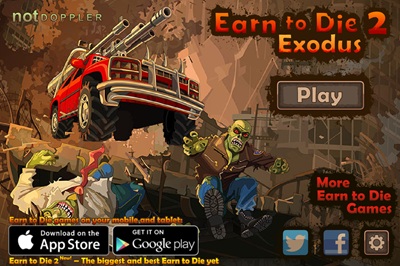
Earn to Die 2
Earn to Die 2 is a fast-paced side-scrolling action-driving game where you battle through a zombie-infected America using heavily upgraded vehicles. Starting with a beat-up car and limited fuel, you smash through undead hordes, plow across abandoned highways, and earn cash to reinforce your ride with bigger engines, weapons, boosters, and armored frames. Each attempt pushes you deeper into new zones as you fight toward the final evacuation point, making every run feel like a mix of destruction, strategy, and pure chaotic fun.
HTML5

Earthworm Jim 1
Released in 1994, Earthworm Jim was an instant hit, thanks to its fluid animation, absurd humor, and tight gameplay. Players control Jim, an ordinary worm who gains superpowers after an advanced robotic suit falls from space. With his plasma blaster, head-whipping abilities, and the power to jump and swing across dangerous levels, Jim must rescue Princess What’s-Her-Name while battling a bizarre cast of villains.
SNES
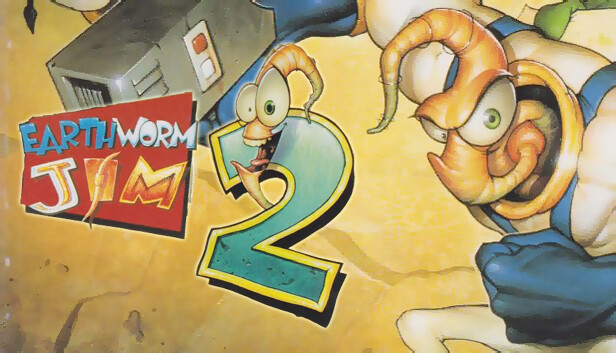
Earthworm Jim 2
In 1995, Earthworm Jim 2 cranked up the absurdity and variety, delivering new weapons, new transformations, and even crazier levels. Jim’s suit upgrades and wacky arsenal now included a homing gun, a barn blaster, and even a weapon that turned enemies into cows. Levels in Earthworm Jim 2 were even more unpredictable than the first game, including "Lorenzo’s Soil," where Jim drills underground to escape a flood, and "Puppy Love," a mini-game where Jim must save bouncing puppies from being flattened by a giant villain named Psy-Crow.
SNES
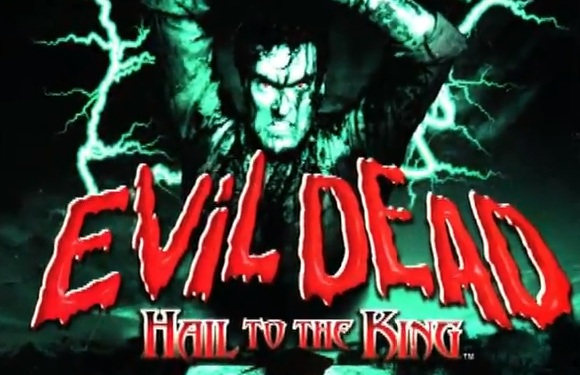
Evil Dead Hail to the King
Evil Dead: Hail to the King is a survival horror game released in 2000 for PlayStation, Dreamcast, and PC, serving as a sequel to the cult-favorite Evil Dead film series. Set eight years after the events of Army of Darkness, the story follows Ash Williams—complete with chainsaw arm and sarcastic wit—as he returns to the infamous cabin in the woods, only to face the Necronomicon’s evil forces once again. The game blends classic fixed-camera exploration and puzzle-solving with combat against Deadites, drawing heavy inspiration from the Resident Evil style of gameplay. While it earned mixed reviews due to clunky controls and dated mechanics, fans appreciated its continuation of the Evil Dead lore, Bruce Campbell’s voice acting, and the gruesome humor that stayed true to the franchise’s spirit.
PSX
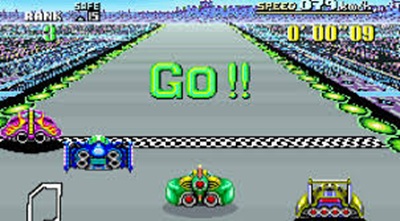
F-Zero
F-Zero, released for the Super Nintendo Entertainment System in 1990 (1991 in North America), was a groundbreaking futuristic racing game that showcased the power of the SNES’s Mode 7 graphics. Set in the 26th century, it put players behind the controls of high-speed hovercrafts like the iconic Blue Falcon, racing across twisting, looping tracks suspended above futuristic cities. Its fast sense of speed, sharp controls, and innovative track design set a new standard for racing games at the time. Beyond visuals, F-Zero also introduced elements like vehicle damage meters, requiring players to balance speed with careful driving. With its catchy, adrenaline-pumping soundtrack—especially the famous “Mute City” theme—and challenging difficulty, F-Zero became both a launch title showcase for the SNES and the start of a beloved franchise. It remains a classic that defined futuristic racing for generations of gamers.
SNES
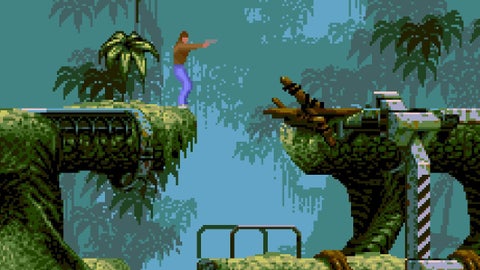
Flashback - Quest for Identity
Flashback: The Quest for Identity is a cinematic platformer released in 1992 by Delphine Software for various platforms, including the SNES. Set in a futuristic sci-fi world, the game follows the protagonist, Conrad B. Hart, as he navigates a mysterious and dangerous universe to uncover his lost memories and thwart a conspiracy. Featuring a gripping storyline, smooth animation, and innovative gameplay, Flashback combined action, puzzle-solving, and exploration, making it stand out among other games of its time. The SNES version, like the original, is known for its challenging difficulty, atmospheric soundtrack, and groundbreaking rotoscoped animation, which gave the characters an unusually lifelike quality. Flashback remains a beloved cult classic for its deep narrative and engaging gameplay.
SNES
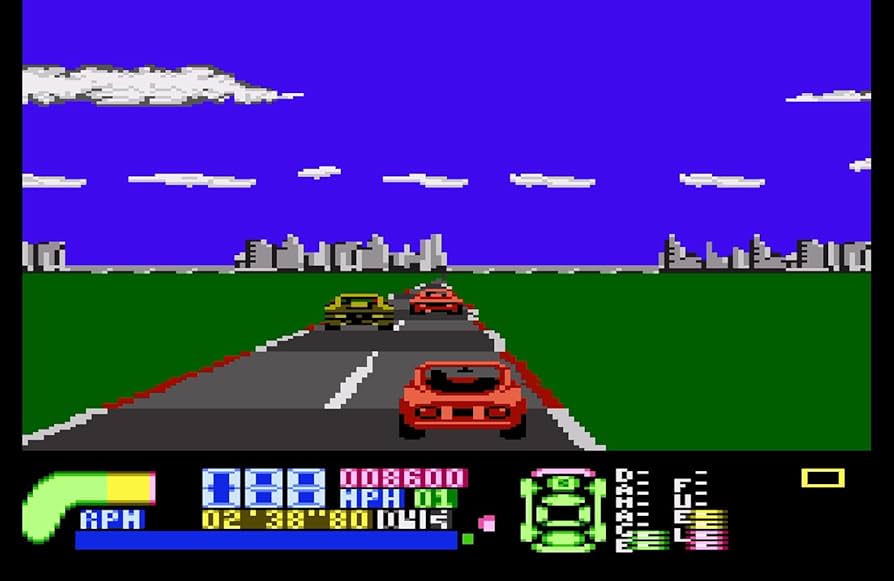
Fatal Run
Fatal Run for the Atari 2600 is one of the console’s final and most ambitious titles, pushing the aging hardware to its absolute limits. Released in 1990, it’s a post-apocalyptic racing game where you drive across a devastated landscape to deliver a life-saving vaccine to survivors before time runs out. You’ll race through hostile highways, dodging enemy vehicles, debris, and gunfire while managing your car’s fuel and damage. Featuring surprisingly detailed graphics, a sense of speed rarely seen on the 2600, and even cutscene-style storytelling, Fatal Run feels like a farewell showcase of what the system could still do. It’s often remembered as both an impressive technical achievement and one of the Atari 2600’s last great action games.
ATARI

FIFA 97
FIFA 97 on the PlayStation delivers a classic, old-school football experience built around fast gameplay, chunky 3D graphics, and the iconic “Indoor Soccer” mode that fans still remember today. With its early polygon models, responsive controls, and energetic commentary, the game captures the raw charm of 90s sports titles—simple, quick, and addictively fun. Whether you’re blasting long shots, performing pixel-perfect tackles, or enjoying the tighter and faster indoor matches, FIFA 97 showcases EA Sports’ early push into 3D football simulation and remains a nostalgic favorite for many PSX players.
PSX
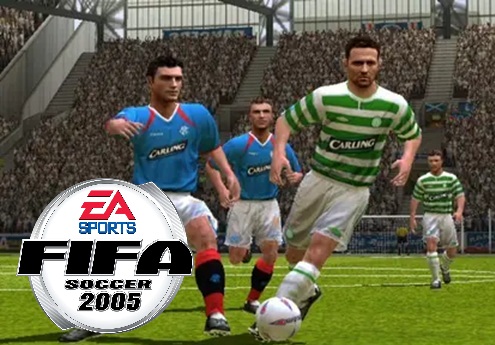
FIFA 2005
FIFA 2005 on PlayStation 1 was one of the final football titles released for the console, giving fans a last hurrah before the series fully shifted to newer hardware. While it didn’t showcase the flashy new features of the PS2 and PC versions, it still delivered fast-paced arcade-style gameplay, real licensed teams and players, and the excitement of the 2004–2005 season. The graphics and animations were simplified to fit the aging hardware, and modes like Career were more limited, but it remained a fun and accessible experience for PS1 owners. As a swan song for FIFA on the system, it kept the spirit of the franchise alive and was a nostalgic pick for players who stuck with the classic console.
PSX
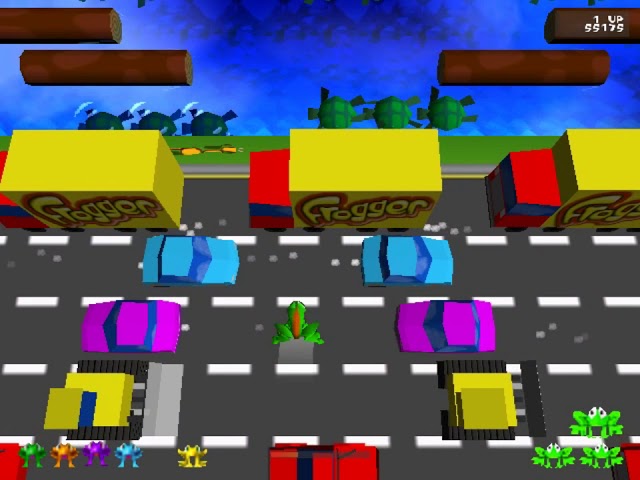
Frogger 1
Frogger for the Super Nintendo (SNES) brought the classic arcade gameplay into the 16-bit era, staying true to its roots while adding smoother graphics and sound. Players guide a frog across busy roads and treacherous rivers, dodging cars, leaping onto logs, and avoiding hazards like snakes and alligators to safely reach their home slots at the top of the screen. The SNES version maintained the addictive, simple premise that made Frogger a timeless hit, but with enhanced visuals and music that gave it new life for fans of the early ’90s console generation.
SNES
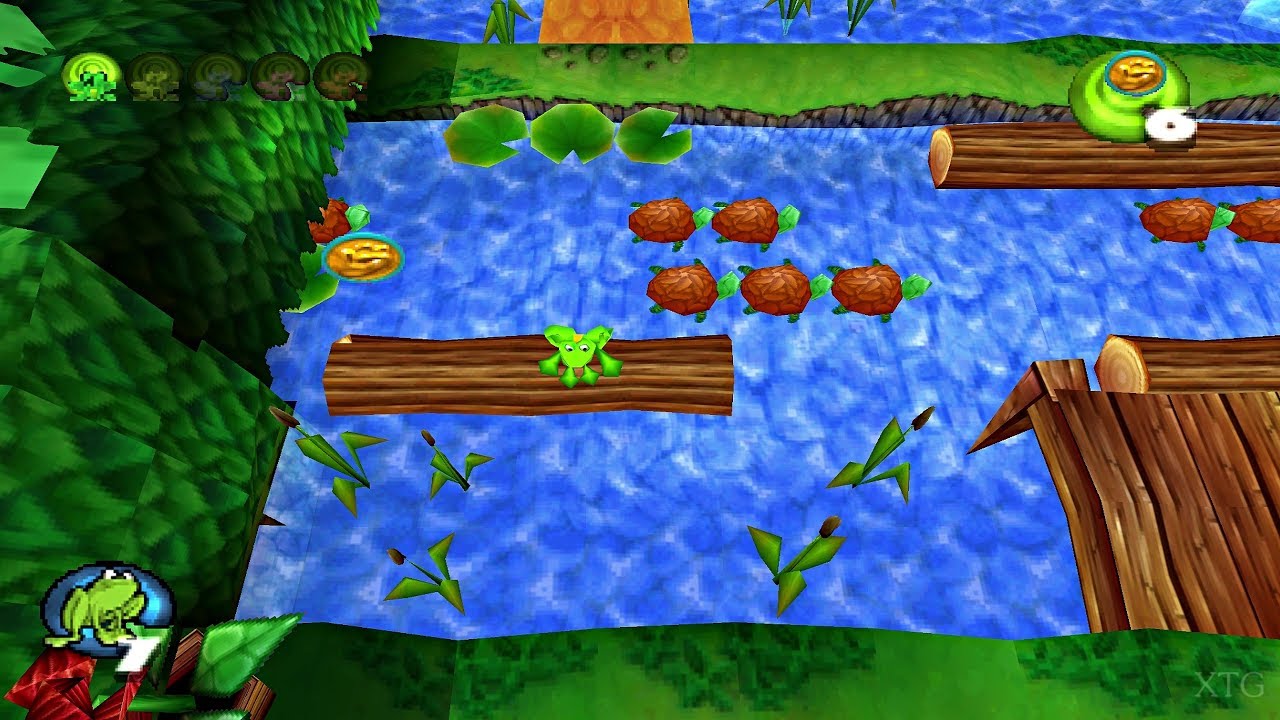
Frogger 2
Frogger 2: Swampy’s Revenge for the PlayStation (PSX) is a 3D action-arcade sequel to the classic arcade hit, developed by Blitz Games and released in 2000. The game builds on the simple road-and-river crossing formula of the original but expands it into a full adventure with multiple themed worlds, varied objectives, and story cutscenes. Players control Frogger (and his companion Lillie Frog) across colorful levels filled with hazards like cars, snakes, and lava flows, while also solving puzzles and rescuing froglets. Unlike the purely grid-based gameplay of the 1981 arcade version, Frogger 2 emphasizes exploration, collectibles, and platforming challenges, offering both single-player and multiplayer modes. While it retained the arcade spirit, it leaned into family-friendly 3D platforming that was popular on the PSX era.
PSX
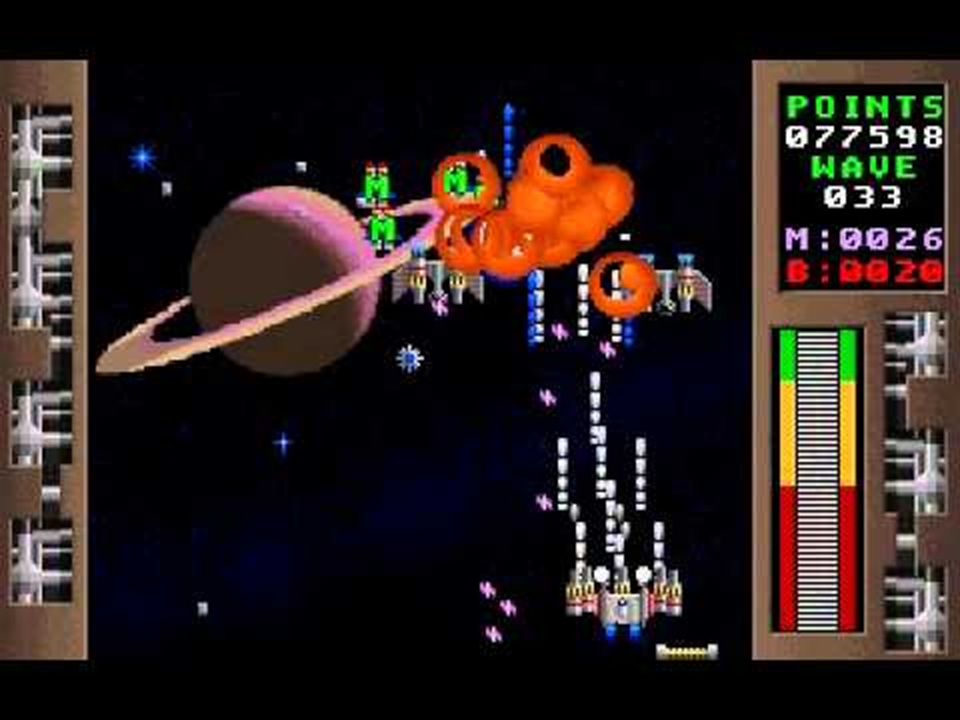
Galactix
Galactix is a fast-paced DOS shoot-’em-up released in the early 1990s, heavily inspired by arcade classics like Galaga and Space Invaders. Players pilot a small starfighter tasked with fending off relentless waves of alien enemies that swoop and dive across the screen in challenging attack patterns. The game is known for its straightforward but addictive gameplay, colorful VGA graphics, and catchy AdLib sound effects that push the nostalgic vibe of early PC gaming. While not as polished as big-budget arcade titles of its era, Galactix captured the imagination of DOS gamers who craved quick reflex action and high-score chasing thrills.
DOS
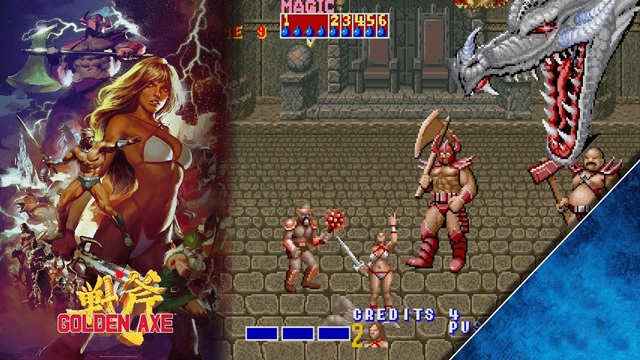
Golden Axe 1
Golden Axe on the Sega Mega Drive, released in 1989, brought the arcade beat ’em up classic into living rooms and became one of Sega’s most iconic titles of the era. Set in a fantasy world filled with barbarians, skeleton warriors, and fire-breathing beasts, the game lets players choose between three heroes: Ax Battler the barbarian, Tyris Flare the Amazon, and Gilius Thunderhead the dwarf—each with unique weapons and powerful magic attacks. Gameplay focused on side-scrolling combat, riding mythical creatures, and unleashing devastating spells to clear waves of enemies on the way to defeat the villainous Death Adder. The Mega Drive port captured the spirit of the arcade version, offering co-op play, tight controls, and a memorable soundtrack that added to its epic atmosphere. Golden Axe quickly became a must-have title for the console and remains a nostalgic favorite among retro beat ’em up fans.
SegaMD
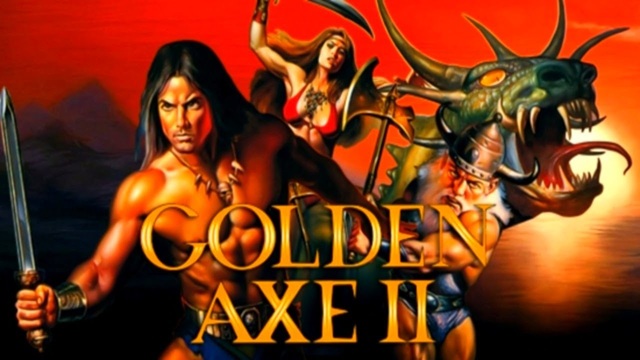
Golden Axe 2
Golden Axe II for the Sega Mega Drive, released in 1991, built upon the success of the original while refining the formula to deliver a smoother and more polished beat ’em up experience. Once again, players could step into the roles of Ax Battler, Tyris Flare, or Gilius Thunderhead as they battled through a new set of stages to stop the evil Dark Guld, who threatened to plunge the world into chaos. The sequel introduced improved visuals, tighter combat mechanics, and an upgraded magic system that gave players more control over how much of their magic power to unleash at once. Mountable creatures and cooperative two-player action returned, keeping the gameplay both varied and fun. While some fans still prefer the raw charm of the original, Golden Axe II stood out as a worthy follow-up, offering refined gameplay and solid replay value that kept the series alive as a Mega Drive classic.
SegaMD
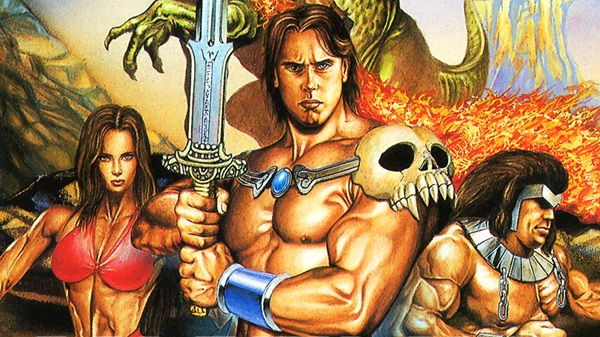
Golden Axe 3
Golden Axe III for the Sega Mega Drive, released in 1993, was the final main entry in the series on the console and attempted to expand the beat ’em up formula with new characters and mechanics. This time, players could choose from four heroes: returning dwarf Gilius Thunderhead (as more of a guide than a playable fighter), plus newcomers like Kain Grinder the barbarian, Sarah Barn the swordswoman, Proud Cragger the giant, and Chronos “Evil” Lait the panther-man. The game introduced branching paths, more combo moves, and team-based attacks when playing co-op, adding variety to the side-scrolling action. However, many fans felt it lacked the polish and atmosphere of the first two games, with simpler visuals, toned-down music, and a less engaging villain, Damud Hellstrike. Despite mixed reviews, Golden Axe III is still appreciated by collectors and hardcore fans for its expanded roster and mechanics, making it an interesting, if divisive, chapter in the franchise’s history.
SegaMD
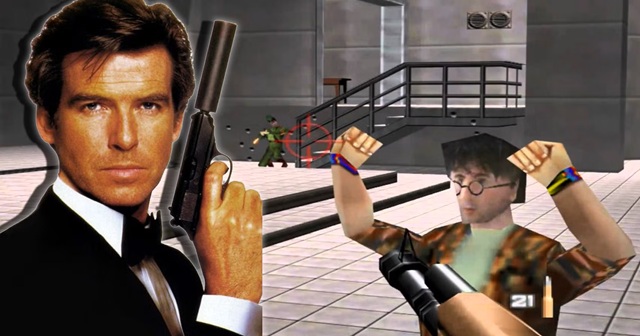
GoldenEye 007
GoldenEye 007 on the Nintendo 64 is one of the most iconic first-person shooters of the late 1990s, revolutionizing both console gaming and the multiplayer experience. Released in 1997, the game blended a faithful adaptation of the James Bond film with groundbreaking mechanics like stealth elements, mission objectives, and split-screen multiplayer that kept friends glued to the TV for hours. Its clever level design, variety of weapons, and the legendary four-player deathmatch mode turned it into a cultural phenomenon. GoldenEye not only proved that first-person shooters could thrive on consoles but also laid the foundation for future classics like Halo and Call of Duty, making it a timeless piece of gaming history.
N64
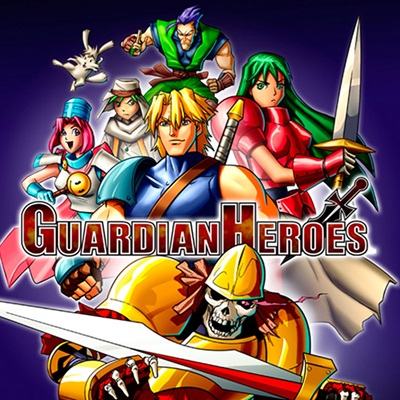
Guardian Heroes
Guardian Heroes for the Sega Saturn, developed by Treasure and released in 1996, is a side-scrolling beat ’em up that blends fast-paced action with RPG-style progression and branching storylines. Players choose from a colorful cast of heroes, battling hordes of enemies across multiple planes in beautifully hand-drawn environments while earning experience points to upgrade attributes like strength and magic. What truly set Guardian Heroes apart was its dynamic story paths — each decision leading to different levels, bosses, and endings — making every playthrough unique. Combined with chaotic four-player versus modes and Treasure’s trademark over-the-top combat, Guardian Heroes remains one of the most celebrated and replayable titles on the Sega Saturn.
Even decades after its release, Guardian Heroes continues to be praised for its creativity and depth, offering a perfect blend of arcade fun and RPG replay value. Its vibrant pixel art, expressive animation, and orchestrated soundtrack give it a timeless charm that few beat ’em ups have matched. The game’s influence can still be seen in modern action RPGs that borrow its layered combat system and branching story design, making Guardian Heroes not just a nostalgic gem but a cornerstone of the Sega Saturn’s legacy.
SegaSaturn
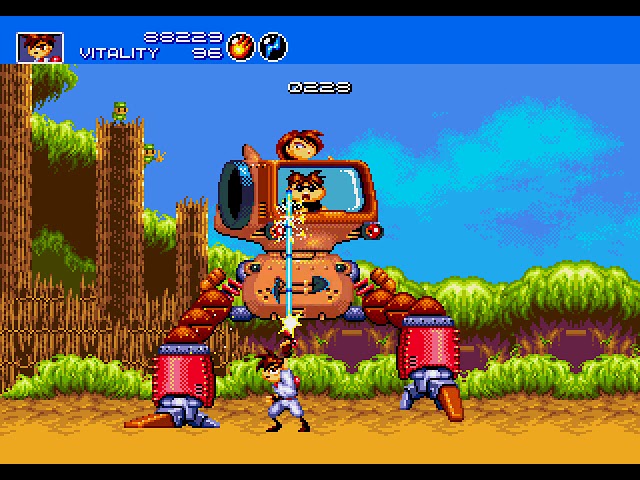
GunStar Heroes
Gunstar Heroes, released for the Sega Mega Drive in 1993 by Treasure, is often hailed as one of the best run-and-gun shooters of the 16-bit era. Bursting with colorful graphics, lightning-fast gameplay, and over-the-top creativity, it set itself apart from its peers like Contra. Players could choose between fixed or free shooting styles and combine different weapon types—flamethrowers, lasers, homing shots, and more—for unique attack combinations, which added tons of variety and replay value. The game also stood out for its inventive level design, from gravity-flipping stages to a wild dice-rolling board game level, and its massive, screen-filling bosses that showcased Treasure’s knack for pushing the Mega Drive hardware to its limits. With its energetic soundtrack, cooperative two-player mode, and relentless action, Gunstar Heroes became a cult classic and remains one of the most celebrated titles in Sega’s library.
SegaMD

Hangman
Hangman on the Atari 2600 is a surprisingly fun take on the classic word-guessing game, stripped down but instantly recognizable. You play by guessing letters to uncover a hidden word, and every wrong guess brings your poor stick figure one step closer to being fully “hung.” What makes it charming is how it translates a pencil-and-paper game into early video game form — the graphics are simple, but the tension builds with each mistake. It’s also one of the few 2600 games that really shows off the idea of playing against the computer’s logic instead of just timing or reflexes. For a game that’s basically spelling practice, it’s weirdly addictive and a neat example of how even text-based concepts found life on the Atari.
ATARI
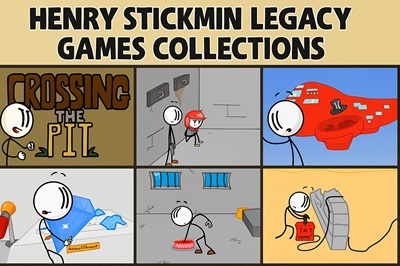
Henry Stickmin Collections
The Henry Stickmin Collection, released in 2020 by PuffballsUnited and Innersloth, is a remastered compilation of the beloved Flash-era stick-figure games that became a viral internet phenomenon. The collection includes all six titles—Breaking the Bank, Escaping the Prison, Stealing the Diamond, Infiltrating the Airship, Fleeing the Complex, and the all-new finale Completing the Mission—completely rebuilt in HD with updated animations, music, and voice work. Players guide Henry Stickmin through a series of hilarious, branching-choice adventures where every decision leads to success, failure, or total chaos, often with clever references to pop culture, gaming, and memes. What made the series so iconic was its mix of slapstick humor, unpredictable outcomes, and countless hidden jokes. The collection not only preserves the legacy of a classic Flash series but also delivers a satisfying conclusion to Henry’s absurd and unforgettable story.
HTML5
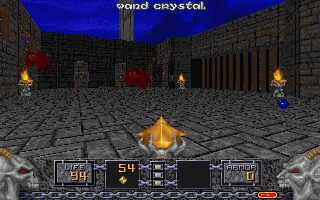
Heretic
Heretic, released for DOS in 1994 by Raven Software and published by id Software, was a fantasy-themed first-person shooter that took the Doom engine and infused it with dark sorcery and medieval horror. Instead of guns, players wielded magical weapons like the Elvenwand, Dragon Claw, and the devastating Hellstaff, fighting hordes of gargoyles, undead warriors, and other nightmarish creatures. One of its standout features was the introduction of an inventory system, allowing players to collect and use items like the Tome of Power, which temporarily supercharged weapons, and Wings of Wrath, which granted flight. The game’s gothic atmosphere, eerie soundtrack, and fast-paced combat gave it a distinct identity, setting it apart from its sci-fi shooter cousins. Heretic became a cult hit and laid the groundwork for its even more ambitious sequel, Hexen, helping to prove that the Doom formula could thrive in richly themed fantasy worlds.
DOS
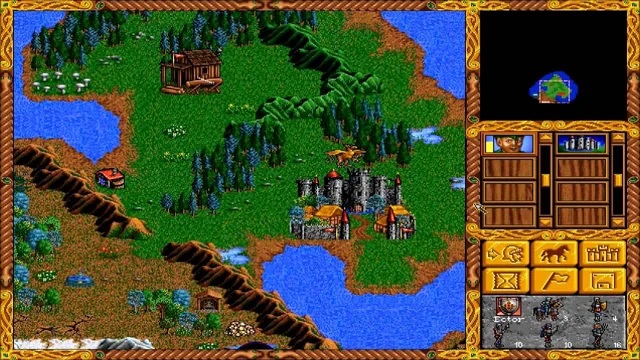
Heroes of Might and Magic 1
Heroes of Might and Magic (1995) is a turn-based strategy game developed by New World Computing that laid the foundation for the iconic series. Set in a fantasy world, it allows players to control one of four hero classes—Knight, Barbarian, Sorceress, or Warlock—each commanding armies of mythical creatures. Gameplay revolves around exploring a richly detailed map, capturing resources, building up towns, recruiting troops, and engaging in tactical battles on a grid-based combat field. The game’s balance of adventure, city management, and strategic warfare made it both accessible and addictive, securing its place as a classic that paved the way for its legendary sequels.
DOS
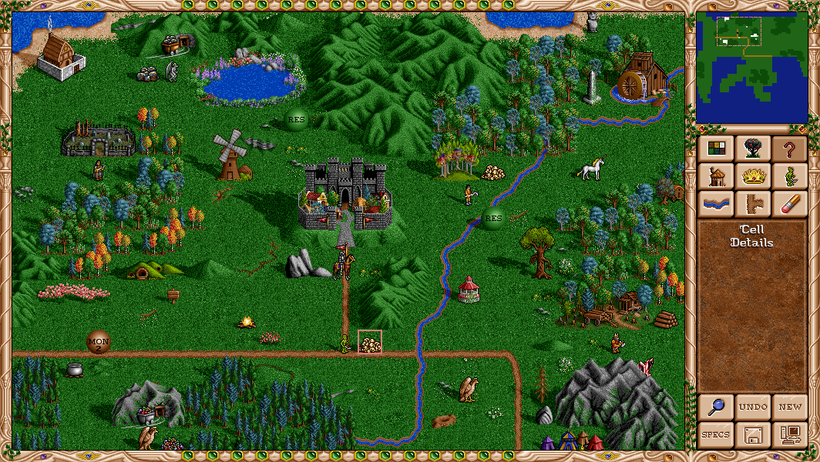
Heroes of Might and Magic 2
Heroes of Might and Magic II: The Succession Wars (1996) expanded on the foundation of the original by delivering richer graphics, enhanced music, and a deeper strategic experience. The story centers on the conflict between two heirs vying for their late father’s throne, framing a campaign of epic battles and castle building. Players now had six hero classes—Knight, Barbarian, Sorceress, Warlock, Wizard, and Necromancer—each commanding unique creatures that could be upgraded into stronger forms. The game introduced more elaborate castle structures, new spells, and sharper AI, while its distinctive hand-painted art style and operatic soundtrack gave it a timeless charm. It cemented the series’ reputation as one of the premier fantasy strategy games of its era.
DOS
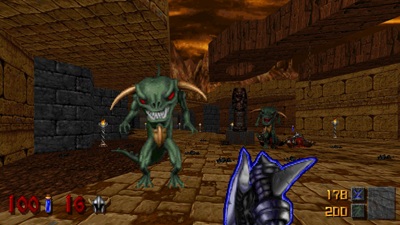
Hexen
Get ready for more demons, bigger levels, and even more action—DOOM 2, the legendary sequel to one of the most influential FPS games of all time, is now fully playable in your web browser! Thanks to modern web technology, this MS-DOS classic has been ported using DOS-JS, allowing players to experience fast-paced combat, new weapons, and intense demon battles without needing an emulator or special setup. Whether you’re playing on desktop, mobile, or tablet, you can now fight through Hell’s invasion anytime, anywhere, complete with touchscreen support for mobile users.
DOS
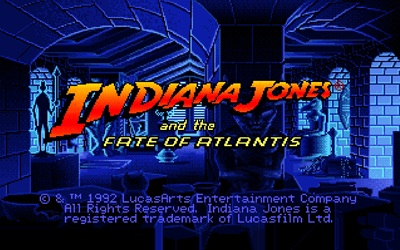
Indiana Jones & The Fate of Atlantis
Indiana Jones and the Fate of Atlantis is a classic point-and-click adventure from LucasArts that blends cinematic storytelling, witty dialogue, puzzle-driven exploration, and old-school charm into one of the finest entries in the genre. Playing as the legendary archaeologist, you uncover an ancient mystery tied to the lost city of Atlantis, traveling across deserts, dig sites, underwater ruins, and secret Nazi bases while teaming up with psychic partner Sophia Hapgood. The game stands out for its branching paths—action, teamwork, or puzzle-heavy—letting you experience the adventure in different ways, all wrapped in memorable characters, hand-drawn art, and that signature Indiana Jones spirit of danger, humor, and discovery.
DOS
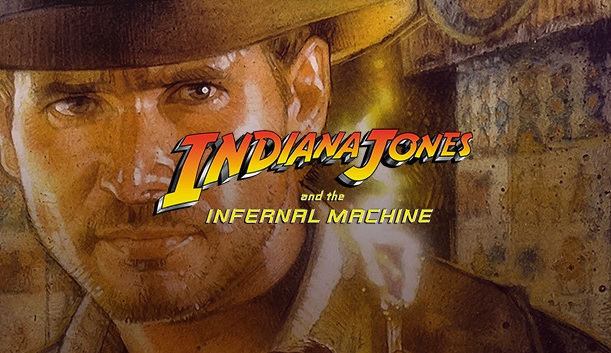
Indiana Jones & The Infernal Machine
Indiana Jones and the Infernal Machine is a 1999 action-adventure game developed by LucasArts that put the famous archaeologist in his first fully 3D gaming adventure. Set in 1947, shortly after World War II, the story follows Indy as he races against Soviet agents to prevent them from reassembling an ancient Babylonian device known as the Infernal Machine—a powerful relic said to open portals to another dimension. The game blends platforming, puzzle-solving, and combat, with players exploring temples, tombs, and exotic landscapes while using Indy’s iconic whip, revolver, and an assortment of gadgets. Though often compared to Tomb Raider at the time, the game distinguished itself with strong narrative ties to Indiana Jones’ lore, cinematic cutscenes, and a mix of historical myth and supernatural mystery, making it a cult favorite among fans of the franchise.
N64
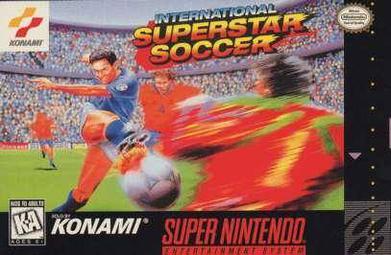
International Superstar Soccer
International Superstar Soccer for the Game Boy Advance, released in 2002 by Konami, brought the popular soccer series to Nintendo’s handheld with an impressive balance of arcade-style fun and accessible gameplay. Despite the GBA’s hardware limitations, the game featured smooth animations, responsive controls, and fast-paced matches that captured the spirit of the console versions. Players could choose from a wide range of international teams, compete in tournaments, and even enjoy a quick exhibition mode for on-the-go play. Its vibrant visuals, energetic crowd sounds, and simple yet satisfying mechanics made it one of the more polished football titles on the system. While it lacked the depth and realism of later soccer games, International Superstar Soccer on GBA stood out as a fun, portable experience that delivered the excitement of global football in the palm of your hand.
GBA
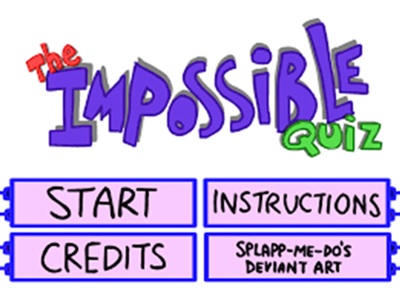
Impossible Quiz 1
The Impossible Quiz is a classic Flash-based trivia game created by Splapp-Me-Do that challenges players with a series of unconventional and often absurd multiple-choice questions. Released in the mid-2000s, it became infamous for its unpredictable humor, trick questions, and sudden game-over screens that test both logic and patience. The game’s appeal lies in its combination of clever wordplay, misleading visuals, and surprise mechanics that require players to think outside the box rather than rely on straightforward knowledge. Each mistake costs a life, adding tension as players try to progress through its 100 quirky and hilarious questions without running out of chances.
HTML5
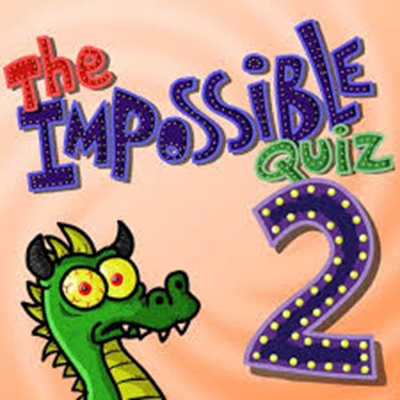
Impossible Quiz 2
The Impossible Quiz 2 is the sequel to the original mind-bending Flash game by Splapp-Me-Do, featuring 120 new questions filled with absurd humor, clever tricks, and unexpected logic twists. Released in 2007, it expands on the chaotic charm of its predecessor with even more creative visuals, bizarre scenarios, and unpredictable answers that defy normal reasoning. Players must think laterally, spot hidden clues, and memorize patterns to survive, as every wrong move costs one of their limited lives. With new power-ups like “Skip” and “Fuse Stoppers,” The Impossible Quiz 2 keeps the challenge fresh while maintaining the same mix of frustration, laughter, and pure satisfaction that made the first game a cult favorite among Flash-era players.
HTML5
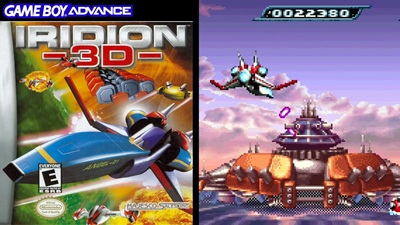
Iridion 3D
Iridion 3D, released for the Game Boy Advance in 2001, was one of the system’s earliest showcases of impressive 3D-style visuals on handheld hardware. Developed by Shin’en Multimedia, it’s a fast-paced rail shooter where players pilot a futuristic starfighter to repel an alien invasion threatening Earth. The game featured seven stages filled with enemies, obstacles, and massive boss battles, all presented with smooth scaling effects and detailed backgrounds that pushed the GBA’s graphical limits. Its thumping electronic soundtrack and clean interface added to the high-tech atmosphere, while responsive controls kept the action engaging despite the linear design. Although its gameplay was relatively simple, Iridion 3D stood out as a technical marvel for the time, proving that the GBA could deliver an arcade-style, visually striking shooter experience in the palm of your hand.
GBA
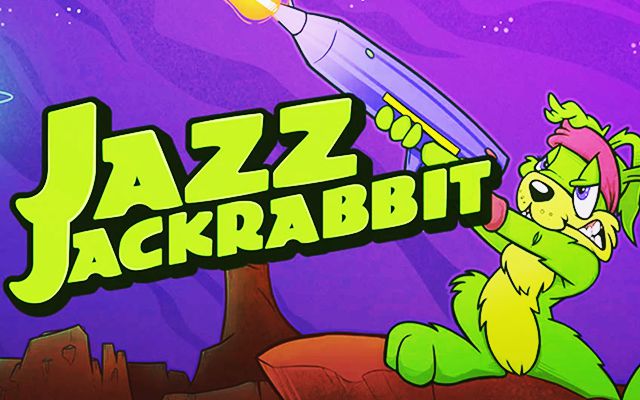
Jazz Jackrabbit
Jazz Jackrabbit is a fast-paced side-scrolling platform game developed by Epic MegaGames and released in 1994 for MS-DOS. Known for its vibrant graphics, smooth gameplay, and catchy soundtrack, the game follows the adventures of Jazz, a green anthropomorphic hare armed with a blaster, as he battles across various planets to rescue Princess Eva Earlong from his nemesis, Devan Shell. Inspired by the popularity of Sonic the Hedgehog, Jazz Jackrabbit stood out for its speed-driven mechanics, clever level design, and colorful worlds that pushed the limits of PC gaming at the time. It became a cult classic of the 90s shareware era and is still fondly remembered as one of the titles that helped put Epic Games on the map.
DOS
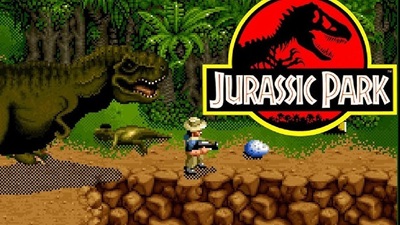
Jurassic Park 1
Jurassic Park for the Super Nintendo Entertainment System, released in 1993 by Ocean Software, was an ambitious action-adventure game that mixed top-down exploration with first-person shooter segments. Based on the blockbuster film, players controlled Dr. Alan Grant as he navigated Isla Nublar, battling dinosaurs, collecting keycards, and restoring power to the park while trying to escape alive. The game stood out for its variety—outdoor areas used an overhead perspective, while indoor sections switched to a 3D first-person view, a rare and impressive feature for its time. With atmospheric music, digitized dinosaur roars, and sprawling environments, it successfully captured the tension and danger of the movie. However, it was also notoriously difficult, with no save or password system, forcing players to finish the adventure in one go. Despite that, Jurassic Park on SNES remains a fascinating and memorable adaptation that showcased both the technical ambition and creativity of early ’90s game design.
SNES
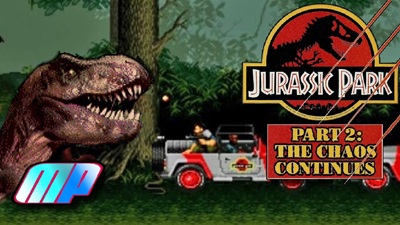
Jurassic Park 2
Jurassic Park Part 2: The Chaos Continues, released for the Super Nintendo Entertainment System in 1994 by Ocean Software, served as a non-canon sequel to the first game, offering a faster-paced, action-focused experience. Players once again stepped into the boots of Dr. Alan Grant, who returned to Isla Nublar to stop a rival corporation, BioSyn, from taking control of the surviving dinosaurs. Unlike the first game’s mix of exploration and first-person segments, this sequel adopted a full side-scrolling run-and-gun format with 18 missions spread across jungles, facilities, and caves. Players could choose between lethal and non-lethal weapons depending on whether they wanted to subdue or eliminate dinosaurs. The game featured improved graphics, smoother animations, and a memorable soundtrack that heightened the tension of each mission. While tough and unforgiving, Jurassic Park Part 2: The Chaos Continues remains a solid, adrenaline-filled SNES action title that blended sci-fi adventure with intense dinosaur combat.
SNES
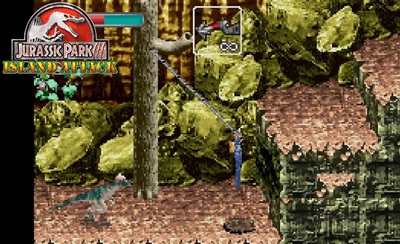
Jurassic Park 3 - Island Attack
Jurassic Park III: Island Attack, released for the Game Boy Advance in 2001 by Konami, was a top-down action-adventure game based on the third film in the franchise. Players took on the role of Dr. Alan Grant, stranded once again on Isla Sorna after a plane crash, and had to navigate through eight dinosaur-filled levels to reach safety. The gameplay combined exploration, puzzle-solving, and survival elements as players collected key items, avoided environmental hazards, and faced off against raptors, compys, and the menacing Spinosaurus. The visuals were vibrant for the GBA, with detailed jungle environments and smooth animations, while the soundtrack added a sense of tension to each encounter. Though relatively short, Jurassic Park III: Island Attack offered a surprisingly challenging experience, capturing the danger and isolation of being trapped on a dinosaur-infested island in portable form.
GBA
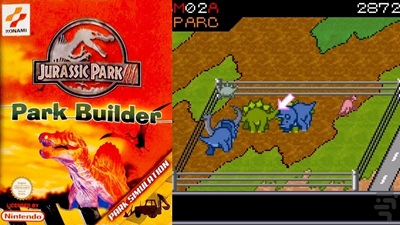
Jurassic Park 3 - Park Builder
Jurassic Park III: Park Builder, released for the Game Boy Advance in 2001 by Konami, was a surprisingly deep simulation game that let players design and manage their own dinosaur theme park. Instead of action or adventure, this title focused on construction, resource management, and genetics—allowing players to create different species of dinosaurs by excavating fossils, combining DNA samples, and carefully maintaining their habitats. Players managed everything from visitor attractions and park layouts to finances and staff, ensuring guests stayed happy while keeping the dinosaurs contained. Despite the GBA’s limited hardware, the game offered a rich and complex system that felt like a portable version of SimPark or Jurassic Park: Operation Genesis. Its relaxing pace, catchy music, and strategic gameplay made Jurassic Park III: Park Builder a standout simulation title on the handheld, appealing to fans who preferred creativity and management over combat and chaos.
GBA
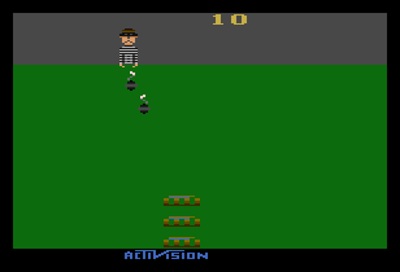
Kaboom
Kaboom! for the Atari 2600, released in 1981 by Activision, is a fast-paced, reflex-driven classic that showcases just how addictive simple gameplay can be. Players control a bucket brigade at the bottom of the screen, catching bombs dropped by the mischievous “Mad Bomber” racing back and forth above. Each level increases in speed, testing players’ reaction time and precision as a single missed bomb ends the round with a dramatic explosion. The game’s paddle controller support makes for incredibly smooth movement, and its minimalist design delivers pure arcade tension. Kaboom! became one of the Atari 2600’s defining titles — easy to learn, nearly impossible to master, and endlessly replayable.
ATARI
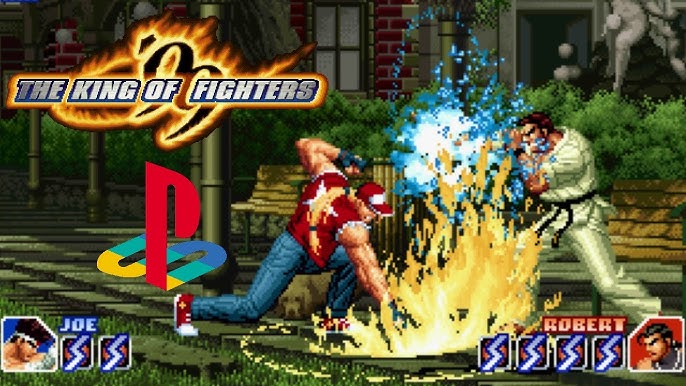
King of Fighters 99
The King of Fighters ‘99 marked a big shift in SNK’s legendary fighting game series when it debuted in arcades and on home consoles in 1999. Introducing the new “Striker” system, players could now call in an assist character mid-battle, adding fresh strategy to the already fast-paced 3-on-3 team format. It also kicked off the NESTS saga, bringing in new faces like K’ while still keeping fan favorites such as Kyo, Iori, and Terry in the spotlight. With its darker storyline, stylish art direction, and refined mechanics, KOF ‘99 stood out as one of the most memorable entries in the franchise, bridging the classic feel of earlier titles with a new era of innovation.
PSX

KL Bird
Move wings and fly away in the world KL Bird Challenge. Help KL Bird to flutter and get as far as possible in the great city of Kuala Lumpur, Malaysia. You must flapp your bird Tap the screen to flap your wings of a bird and avoid obstacles. The game is time-consuming and addictive. It is a platform with pixel graphics.The player must avoid the columns by flying them located in the gap to get the highest possible score.
HTML5
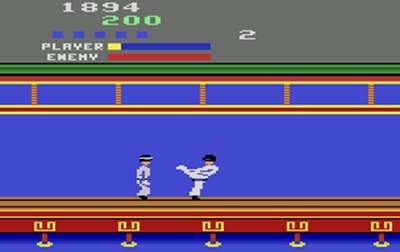
Kung Fu Master
Kung-Fu Master for the Atari 2600, released in 1989, is an adaptation of the hit arcade beat-’em-up originally developed by Irem. Despite the hardware’s severe constraints, it captures the essence of the arcade classic — players control Thomas, a kung fu expert on a mission to rescue his kidnapped girlfriend Sylvia from the evil Mr. X. Across multiple floors, Thomas faces waves of enemies, knife throwers, and bosses in fast-paced side-scrolling combat. The game’s smooth controls, recognizable sprites, and faithful stage progression make it a standout late release for the 2600, proving that even in its twilight years, the console could still deliver an enjoyable action experience.
ATARI

Last Blade 1
The Last Blade for Neo Geo is a beautifully crafted 2D weapon-based fighting game set during Japan’s late Edo period, blending historical atmosphere with fantasy elements. Developed by SNK, it’s known for its elegant swordplay, fluid animation, and deep combat mechanics that balance power and precision. Players can choose between “Speed” mode for fast combos or “Power” mode for devastating strikes, adding strategic variety to every match. The game’s rich backgrounds, traditional Japanese music, and emotionally driven storylines give it a poetic tone rarely seen in fighting games of its era. The Last Blade remains a masterpiece on the Neo Geo—an artful mix of beauty, brutality, and technical finesse.
NEOGEO

Last Blade 2
The Last Blade 2 for Neo Geo refines everything that made the original a classic, delivering one of the most visually and emotionally striking fighting games of its time. Set in the twilight of the samurai era, it expands the roster with new characters and introduces the “EX” mode, which blends the Speed and Power systems for more flexible combat styles. The gameplay is fluid and precise, emphasizing well-timed counters and elegant sword duels that feel both tactical and cinematic. Backed by stunning hand-drawn backgrounds, atmospheric music, and a somber storyline filled with themes of fate and redemption, The Last Blade 2 stands as one of SNK’s finest creations—an unforgettable blend of artistry, depth, and mastery in weapon-based fighting.
NEOGEO
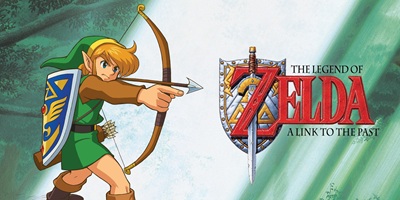
Legend of Zelda - A Link to the Past
The Legend of Zelda: A Link to the Past on the Game Boy Advance is a faithful and enhanced remake of the beloved Super Nintendo classic, bringing the epic adventure to handheld players with updated features and the bonus Four Swords multiplayer mode. Playing as Link, you journey across the Light and Dark Worlds to rescue the Seven Maidens, uncover the secrets behind Hyrule’s turmoil, and confront the evil sorcerer Agahnim and the returning menace of Ganon. With tight combat, clever dungeon design, and atmospheric exploration, the GBA version preserves everything fans love about the original while adding new content that makes the quest even more rewarding.
GBA
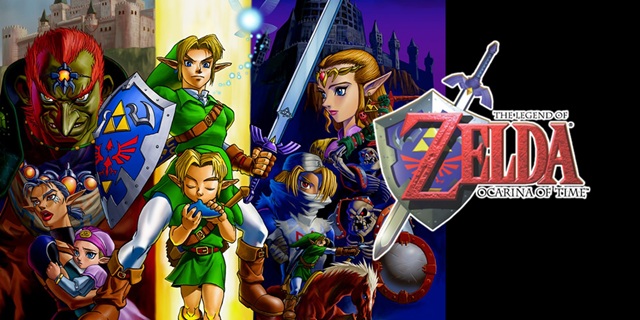
Legend of Zelda - Ocarina of Time
The Legend of Zelda: Ocarina of Time, released for the Nintendo 64 in 1998, is often hailed as one of the greatest games ever made and a landmark moment in 3D adventure design. It introduced players to an expansive Hyrule filled with dungeons, puzzles, and a sweeping narrative that followed Link’s journey from childhood to adulthood as he battled Ganondorf to save Princess Zelda and the kingdom. With innovations like Z-targeting for combat, context-sensitive actions, and time travel between two eras, the game set new standards for immersion and mechanics in action-adventures. Its memorable music, emotional storytelling, and iconic moments—such as pulling the Master Sword or exploring the Temple of Time—cemented its legacy. Ocarina of Time not only defined the Zelda series for years to come but also influenced nearly every open-world and action-adventure game that followed.
N64
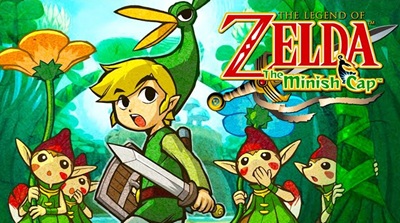
Legend of Zelda - The Minish Cap
X-Men: Reign of Apocalypse for the Game Boy Advance is a fast-paced side-scrolling beat ’em up where you control iconic mutants like Wolverine, Cyclops, Storm, and Rogue as they battle through an alternate timeline ruled by Apocalypse. Featuring classic arcade-style combat, the game takes you across destroyed cities, military bases, and futuristic strongholds while facing off against Sentinels, Four Horsemen, and familiar X-Men villains. With character-specific abilities, upgradeable powers, and cooperative multiplayer, it delivers a compact yet action-packed superhero adventure on the GBA.
GBA
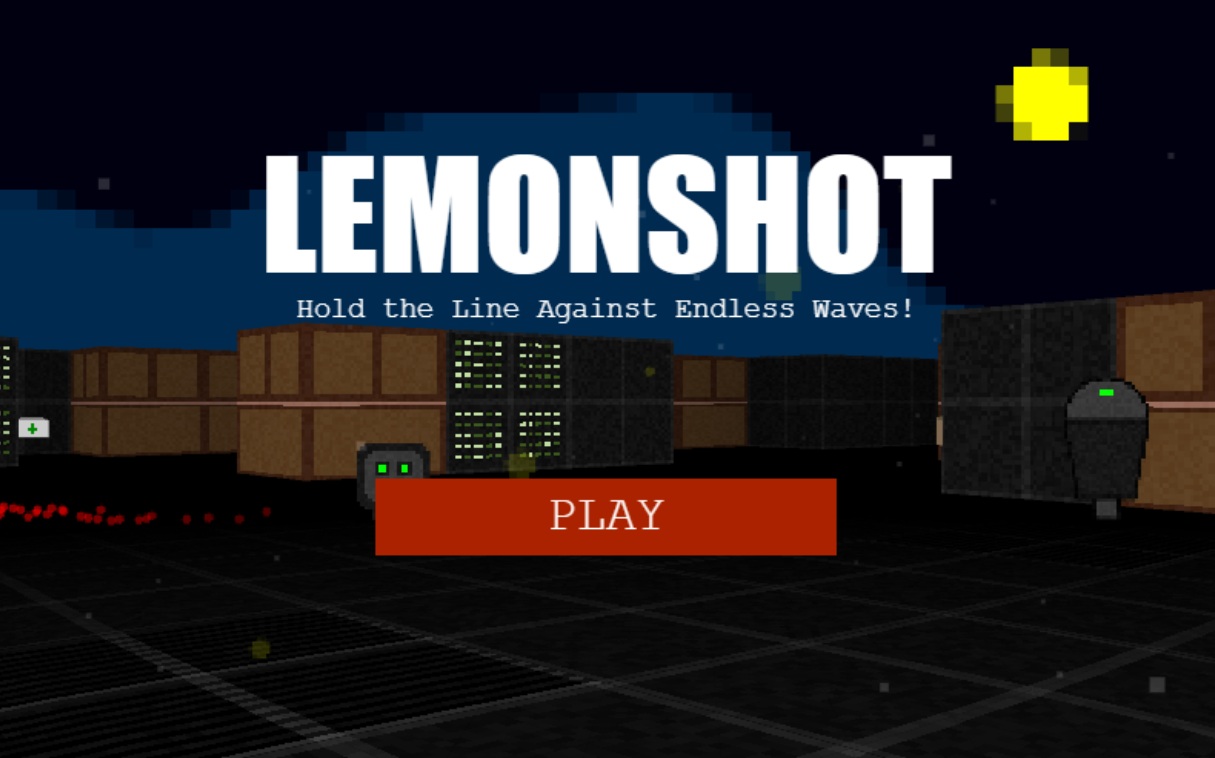
LemonShot
LemonShot is a fast-paced, adrenaline-fueled game that combines the elements of first-person shooting with quirky humor and over-the-top style. Set in a vibrant, cartoonish world where every move oozes swagger, players are thrown into chaotic arenas where style matters just as much as skill. The game’s mechanics reward not just eliminating your opponents but doing so with flair—headshots while mid-air, trick shots off walls, and taunting your enemies all earn extra points, making it a game where panache reigns supreme.
HTML5
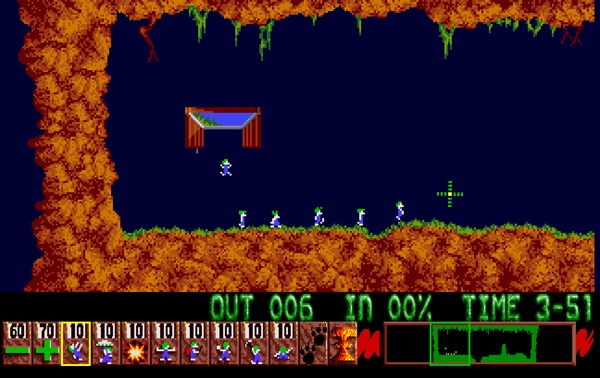
Lemmings 1
Lemmings (DOS, 1991) is a classic puzzle-platform game developed by DMA Design where players guide a group of small, green-haired creatures called Lemmings safely to an exit. Each level challenges you to save a minimum number of Lemmings by assigning them various roles—such as Builders, Diggers, Climbers, or Blockers—to overcome hazards, traps, and obstacles. With its clever level design and increasing difficulty, the game became a massive hit on DOS and other platforms, praised for its addictive mix of strategy, timing, and resource management, and is still remembered as one of the most influential puzzle games of the early 90s.
DOS
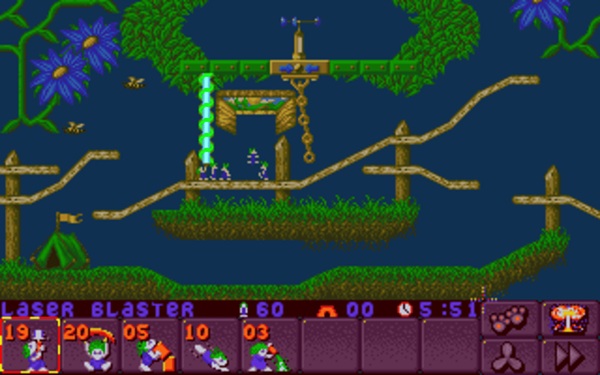
Lemmings 2
Lemmings 2: The Tribes for DOS is the sequel to the classic puzzle game, where players once again guide the quirky green-haired creatures to safety, but this time across twelve unique tribes with their own themes and music. Instead of just the handful of skills from the original, the game expands to over 50 different abilities ranging from flying with a hang glider to using flamethrowers, catapults, and even magic. Each tribe features its own levels, adding more variety and replay value while still maintaining the core challenge of timing, resource management, and creativity. The DOS version became a fan favorite thanks to its colorful graphics, diverse gameplay, and the way it pushed the series beyond its original formula.
DOS
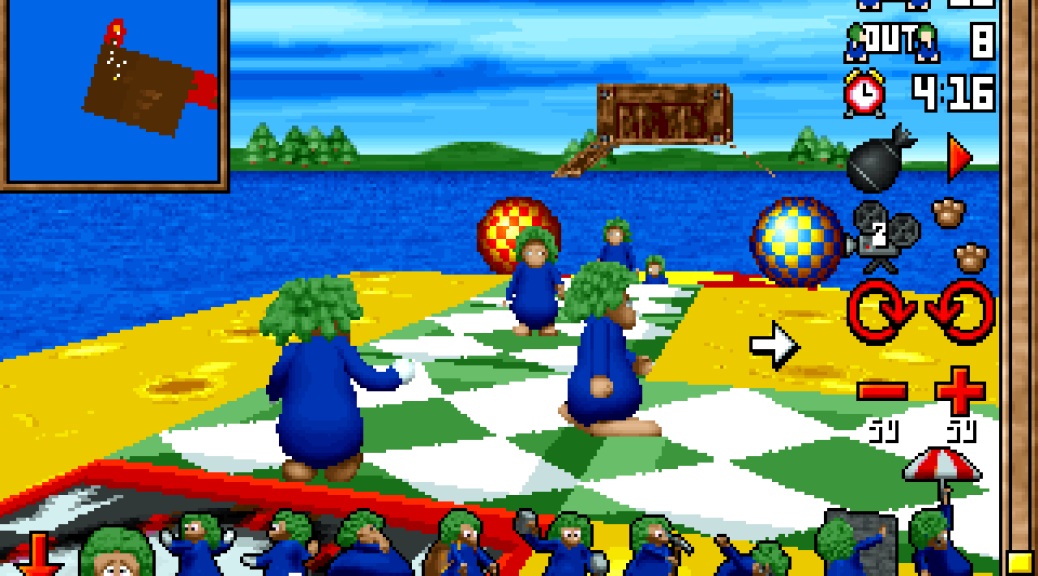
Lemmings 3D
3D Lemmings on the PlayStation (PSX), released in 1995, was the series’ first big leap from its classic 2D puzzle roots into full 3D environments. Developed by Clockwork Games and published by Psygnosis, it kept the familiar formula of guiding the little green-haired lemmings to safety by assigning them jobs like digging, building, or blocking, but now players had to manage puzzles in a fully rotatable 3D space. This new perspective added depth and challenge, as it was easy to lose track of the tiny characters or misjudge spatial layouts. While the concept was ambitious and visually impressive for its time, many players found the controls and camera system clunky, making precise management tricky. Still, it earned praise for creativity and offered a fresh take on the beloved puzzle series, standing out as one of the more experimental puzzle games of the early PlayStation era.
PSX

Lemon SkyCraft
Set in a futuristic Kuala Lumpur, this hovercraft racing game lets players speed through iconic landmarks like the Twin Towers. Neon-lit tracks twist around skyscrapers, all under vibrant holographic displays. With breathtaking visuals and immersive soundscapes, the game transforms Kuala Lumpur’s skyline into the ultimate high-speed racetrack. Advanced physics engines ensure the thrill of razor-sharp turns, turbo boosts, and epic mid-air collisions.
HTML5
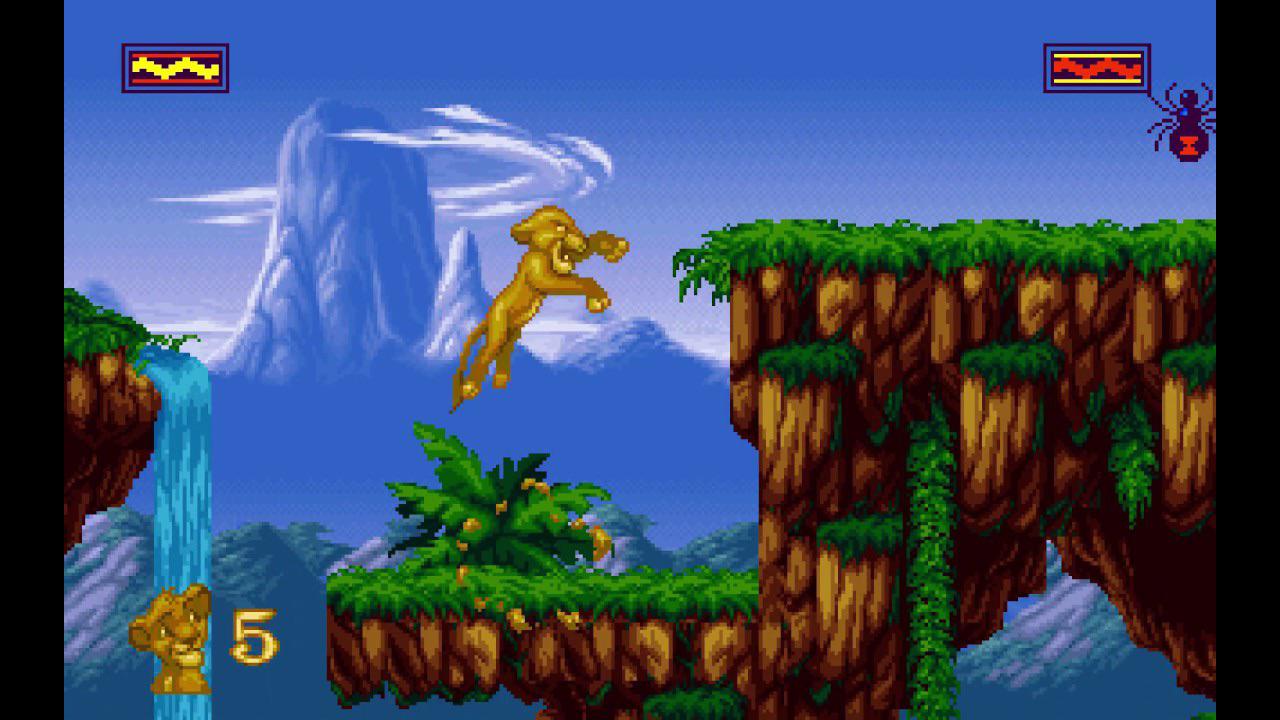
Lion King
The Lion King for the Super Nintendo Entertainment System (SNES), released in 1994 by Virgin Interactive, is a side-scrolling platformer based on Disney’s animated film. The game follows Simba’s journey from a playful cub to the powerful king of the Pride Lands, featuring levels inspired by key movie scenes, such as the wildebeest stampede and Scar’s final battle. Known for its beautiful hand-drawn graphics, fluid animation, and an atmospheric soundtrack that captures the spirit of the film, the game is also infamous for its high difficulty, with precise platforming and challenging enemy encounters. Despite its punishing nature, The Lion King remains a nostalgic classic for many SNES players.
SNES
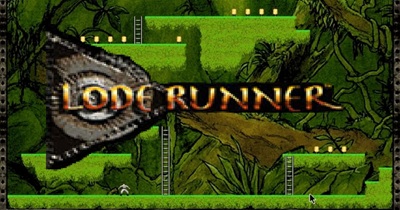
Lode Runner The Legend Returns
Lode Runner: The Legend Returns is a 1994 remake of the classic puzzle-action game, bringing back its iconic treasure-collecting and trap-setting gameplay with a fresh coat of 90s graphics and sound. The game expands on the original formula by introducing new hazards, smarter enemies, tricky puzzle layouts, and a full-featured level editor that lets players create their own devious stages. Despite the visual upgrade, it stays true to the classic Lode Runner feel – fast thinking, precise movement, and always staying one step ahead of the enemies chasing you. Whether you’re navigating collapsing floors, using bombs to break through walls, or outmaneuvering Mad Monks in labyrinth-like stages, the experience is a nostalgic but challenging return to one of gaming’s most enduring puzzle franchises.
DOS
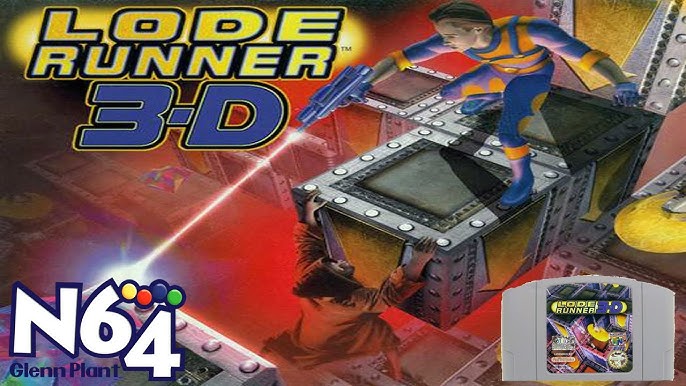
Lode Runner 3D
Lode Runner 3-D, released for the Nintendo 64 in 1999, was a modern reimagining of the classic puzzle-platforming series that first debuted in the 1980s. Developed by Big Bang and published by Infogrames, it took the traditional treasure-collecting gameplay into fully 3D environments while retaining the series’ core mechanics of digging holes, trapping enemies, and collecting gold to clear levels. Players controlled Jake Peril, an intergalactic adventurer navigating intricate mazes filled with traps, ladders, and robotic foes. The shift to 3D added a new layer of spatial puzzle-solving, requiring players to think vertically and explore multiple planes of each stage. While Lode Runner 3-D was praised for its creative level design and nostalgic charm, some fans found its slower pacing and camera controls challenging. Still, it offered a clever blend of old-school strategy and modern visuals, making it a unique entry in the N64’s puzzle-platformer library.
N64
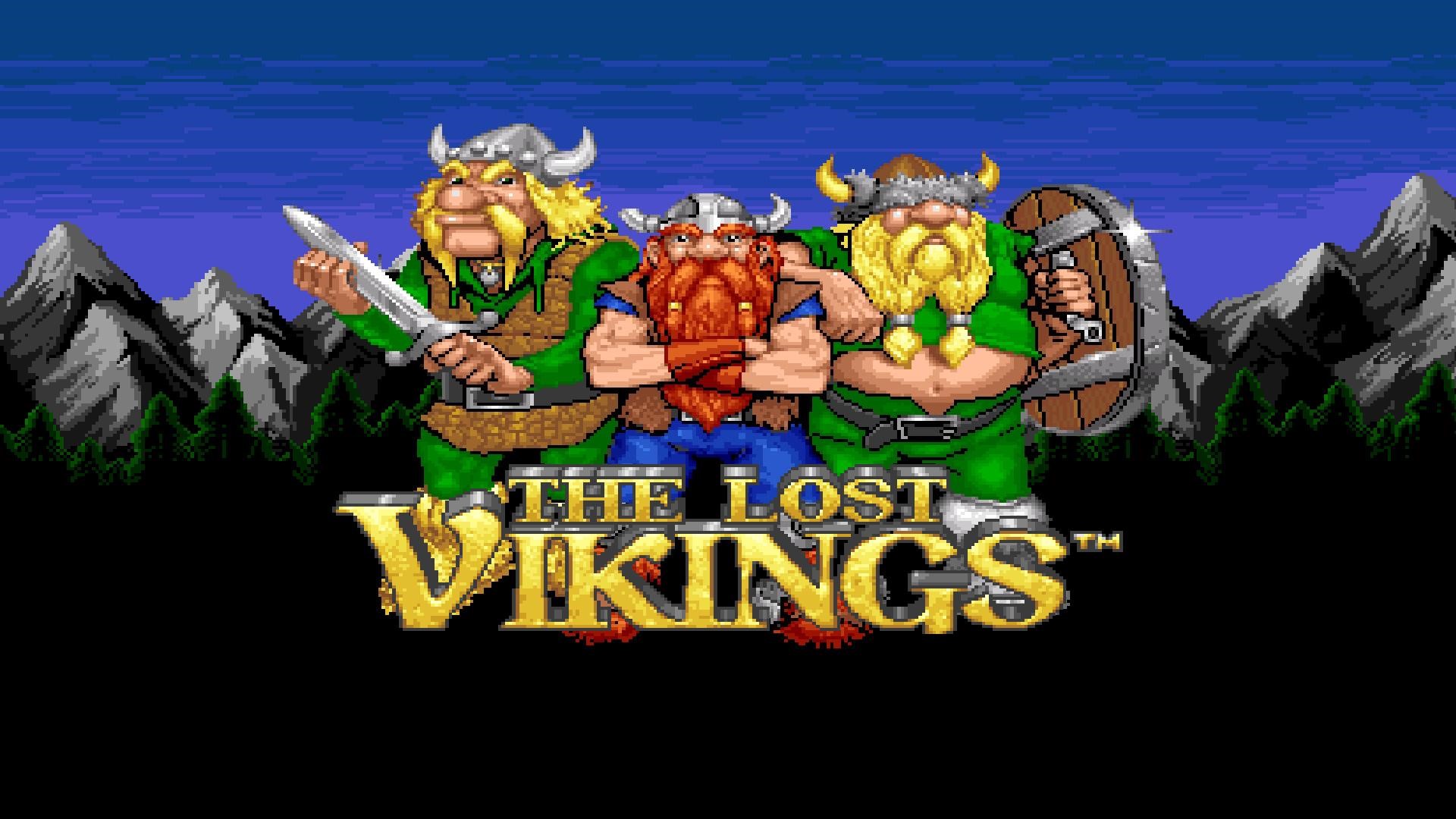
The Lost Viking 1
Released in 1992 by Silicon & Synapse (now Blizzard Entertainment), The Lost Vikings introduced a refreshing mix of puzzle-solving and action-platforming, setting itself apart from other SNES games of the time. The game follows three Viking warriors—Erik the Swift, Baleog the Fierce, and Olaf the Stout—who are kidnapped by Tomator, an evil alien emperor, and must escape by navigating through a series of challenging, multi-room levels. With hilarious character dialogue, clever puzzles, and varied environments, The Lost Vikings remains one of the most innovative and beloved puzzle-platformers of the SNES era.
SNES

The Lost Viking 2
In 1997, The Lost Vikings 2 took everything great about the original and expanded upon it, introducing two new playable characters, new power-ups, and a deeper storyline. This time, the Vikings are once again kidnapped by Tomator, but now they gain enhanced abilities thanks to futuristic upgrades. With new levels, more diverse puzzles, and an even wackier sense of humor, The Lost Vikings 2 built upon its predecessor, offering an even richer cooperative puzzle-solving experience.
SNES
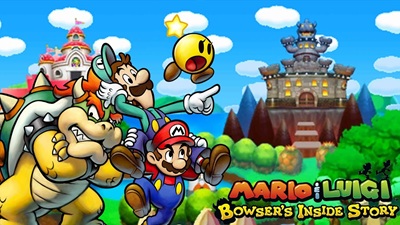
Mario and Luigi - Bowser's Inside Story
Mario & Luigi: Bowser’s Inside Story, released for the Nintendo DS in 2009, is widely regarded as one of the best entries in the Mario & Luigi RPG series. The game presents a brilliantly creative premise: Mario and Luigi are accidentally inhaled by Bowser after a strange disease called the Blorbs strikes the Mushroom Kingdom, forcing the unlikely trio to work together from inside and outside Bowser’s body. Players switch between controlling the brothers inside Bowser’s internal world—solving puzzles, battling enemies, and enhancing his abilities—and Bowser himself, who stomps through the overworld using his brute strength. The turn-based combat combines precise timing and action-based inputs, keeping battles dynamic and engaging. With witty dialogue, sharp humor, and polished visuals, Bowser’s Inside Story masterfully blends comedy, strategy, and heart, making it one of the DS’s standout RPGs and a fan favorite among both Mario fans and RPG enthusiasts.
NDS
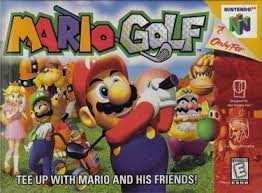
Mario Golf 64
Mario Golf, released for the Nintendo 64 in 1999, brought Nintendo’s signature charm and accessibility to the world of golf, turning a traditionally slow-paced sport into a fun and competitive party experience. Developed by Camelot Software Planning, the game featured a roster of beloved characters like Mario, Luigi, Peach, and Yoshi—alongside newcomers such as Plum and Charlie—each with their own stats and play styles. With intuitive swing mechanics, realistic physics, and a mix of whimsical and challenging courses, Mario Golf 64 struck a perfect balance between arcade fun and genuine golf simulation. It also included multiple modes, such as tournament play, ring shot challenges, and multiplayer matches that made it a hit at gatherings. With its clean visuals, relaxing soundtrack, and surprisingly deep gameplay, Mario Golf 64 became one of the standout sports titles on the N64 and laid the foundation for a long-running and beloved subseries in the Mario franchise.
N64
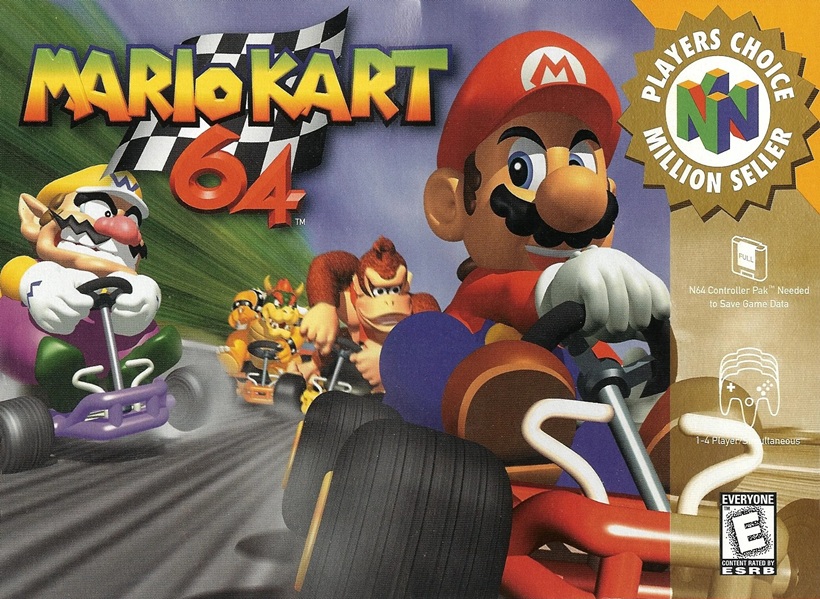
Mario Kart 64
Released in 1996 by Nintendo, Mario Kart 64 was a groundbreaking sequel to Super Mario Kart on the SNES, bringing the beloved kart-racing experience into full 3D environments with smoother animations, larger tracks, and four-player multiplayer support.Featuring a roster of eight iconic Nintendo characters, players can race as Mario, Luigi, Bowser, Peach, Yoshi, Donkey Kong, Toad, and Wario, each with their own kart handling and speed. With 16 diverse tracks, including fan-favorites like Rainbow Road, Bowser's Castle, and Yoshi Valley, the game offers an exciting and unpredictable racing experience. Players can collect power-ups such as red shells, banana peels, lightning bolts, and invincibility stars to gain an edge over their opponents. Whether competing in Grand Prix, Time Trials, or the legendary Battle Mode, Mario Kart 64 remains one of the most fun and addictive racing games ever made.
N64
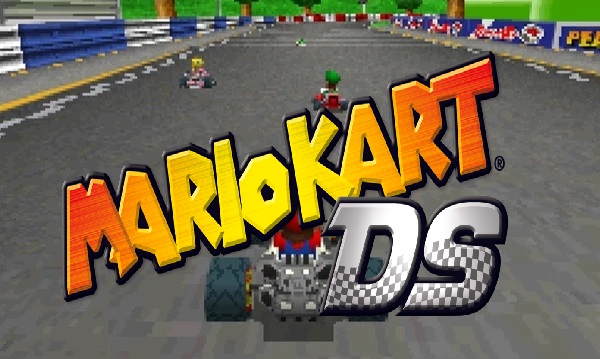
Mario Kart DS
Mario Kart DS, released in 2005 for the Nintendo DS, was a landmark entry in the beloved kart-racing series, bringing the fun of Mario Kart to handheld players with impressive depth and features. It included 32 tracks—16 brand new ones plus 16 retro classics from earlier games—making it one of the most content-rich entries at the time. The game introduced the Mission Mode, where players completed unique challenges like collecting coins, hitting item boxes, or racing bosses, adding a fresh single-player experience. It also marked the series’ first online play via Nintendo Wi-Fi Connection, letting players race against others worldwide. With tight controls, clever track design, and the always-chaotic mix of items like shells, bananas, and the infamous Blue Shell, Mario Kart DS quickly became a fan favorite and is still praised as one of the best handheld racing games ever made.
NDS
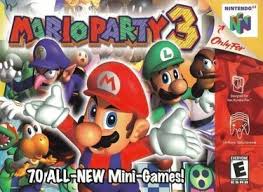
Mario Party 64
Mario Party, released for the Nintendo 64 in 1998, kicked off one of Nintendo’s most popular multiplayer series with a mix of board game strategy and frantic mini-game action. Up to four players could choose from characters like Mario, Luigi, Peach, Yoshi, Wario, and Donkey Kong, rolling dice to move around colorful themed boards while collecting coins and stars. After each round, players competed in a wide variety of mini-games—ranging from button-mashing contests to skill-based challenges—that could turn the tide of the match at any moment. The game’s blend of luck, competition, and sabotage made it both hilarious and infuriating among friends, perfectly capturing the spirit of friendly rivalry. Though infamous for its “rotate-the-stick” mini-games that left many players with sore palms, Mario Party 64 became an instant classic and laid the foundation for one of Nintendo’s most enduring and party-friendly franchises.
N64
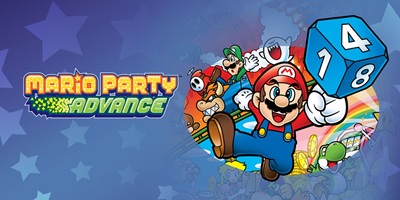
Mario Party Advance
Mario Party Advance for the Game Boy Advance delivers a unique handheld twist on the classic party-game formula, focusing more on quests and mini-games than traditional multiplayer board play. Set in Shroom City, you take on the role of Mario, Luigi, Peach, or Yoshi as you complete a wide range of missions to recover lost “Gaddgets” scattered by Bowser’s mischief. The game blends light-hearted humor, quirky characters, and over 100 mini-games into a portable adventure designed for solo play, offering a fun and compact Mario Party experience on the go.
GBA
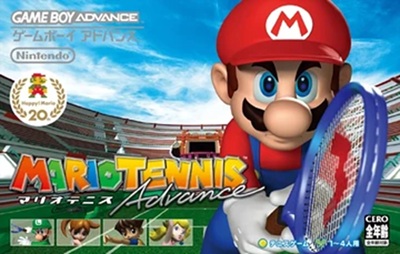
Mario Tennis Power Tour
Mario Tennis: Power Tour for the Game Boy Advance blends arcade-style tennis action with a full RPG adventure set at the Royal Tennis Academy. You play as either Clay or Ace, training, leveling up, and improving your skills as you rise through the academy ranks and take on tougher rivals. Along the way, you’ll meet quirky characters, explore campus areas, unlock special shots, and eventually challenge Mario and friends themselves. With its mix of engaging story progression and satisfying, fast-paced tennis gameplay, Power Tour stands out as one of the GBA’s most unique and polished sports titles.
GBA
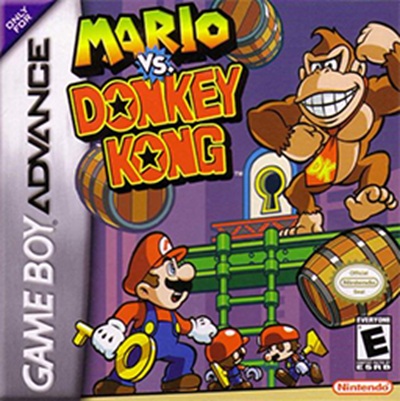
Mario Vs Donkey Kong
Mario vs. Donkey Kong, released for the Game Boy Advance in 2004, was a clever puzzle-platformer that paid homage to the classic Donkey Kong arcade roots while adding modern twists. The game followed Mario as he tried to retrieve stolen Mini-Mario toys from the mischievous Donkey Kong, leading to a series of trap-filled, puzzle-based levels. Each stage required players to hit switches, move platforms, and outsmart enemies to collect keys and reach the exit, combining platforming skill with strategic thinking. Its crisp graphics, charming animations, and catchy, upbeat soundtrack perfectly captured the spirit of the Mario universe. With over 90 levels, unlockable bonus challenges, and boss battles that tested both reflexes and timing, Mario vs. Donkey Kong became one of the standout puzzle titles on the GBA—bridging the gap between classic arcade action and modern handheld creativity.
GBA

Maze of Space Goblin
Maze of Space Goblin is a fun and challenging game where players guide a mischievous goblin through intricate mazes set in a mysterious cosmic world. With each level, the puzzles become trickier, testing your problem-solving skills and quick thinking as you dodge obstacles and find your way to the exit. The game’s vibrant visuals and smooth controls make it an enjoyable adventure for players of all ages, combining strategy and entertainment in a unique space-themed journey.
HTML5
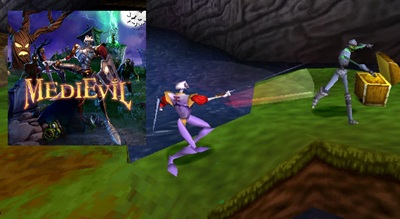
MediEvil 1
MediEvil, released for the PlayStation in 1998, was a gothic action-adventure game that quickly became a cult classic thanks to its dark humor and quirky charm. Players took control of Sir Daniel Fortesque, a skeletal knight accidentally resurrected after dying in his first battle, who now seeks redemption by defeating the evil sorcerer Zarok. The game mixed hack-and-slash combat, puzzle-solving, and exploration across eerie graveyards, haunted villages, and twisted castles, all wrapped in a spooky yet cartoonish art style reminiscent of Tim Burton’s works. Its orchestral-inspired soundtrack added to the atmospheric tone, while Sir Dan’s clumsy, comedic personality made him an unlikely but lovable hero. Though the controls and camera could be a bit clunky by modern standards, MediEvil stood out for its originality and personality, earning its place as one of the most memorable PlayStation-era exclusives.
PSX
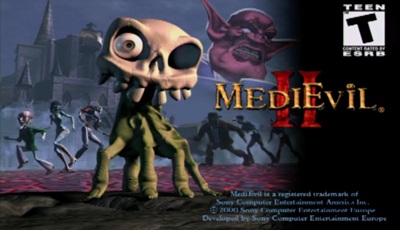
MediEvil 2
MediEvil 2, released for the PlayStation in 2000, continued the adventures of the skeletal knight Sir Daniel Fortesque in a new setting: Victorian-era London. This time, Dan is resurrected by a meddling professor and must once again prove his heroism by battling an evil sorcerer and an army of monsters unleashed upon the city. The sequel expanded on the original’s hack-and-slash gameplay with new weapons, puzzles, and more varied level designs, ranging from museums and catacombs to eerie streets filled with undead. Sir Dan even got a quirky companion in Winston the ghost, who offered guidance along the way. While the core mechanics and slightly clunky controls carried over from the first game, MediEvil 2 was praised for its humor, imaginative setting, and charmingly spooky atmosphere. Though not as groundbreaking as the original, it cemented Sir Dan’s place as one of PlayStation’s most beloved cult heroes.
PSX
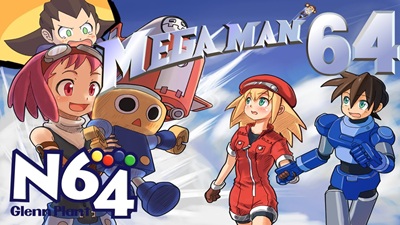
Megaman 64
MegaMan 64 is the Nintendo 64 version of MegaMan Legends, a 3D action-adventure game that takes the blue bomber into a fully explorable world filled with towns, dungeons, and robotic enemies known as Reaverbots. You play as MegaMan Volnutt, a young digger who uncovers ancient ruins and battles the air-pirate Bonne family while searching for the mythical Mother Lode. Instead of traditional side-scrolling stages, the game focuses on free-roaming exploration, light RPG elements, quirky characters, and a charming Saturday-morning-cartoon atmosphere. Despite its dated controls, MegaMan 64 remains beloved for its story, worldbuilding, and the unique direction it took the MegaMan series.
N64

Megaman X1
Mega Man X (1993) is the first game in the Mega Man X series, introducing a faster-paced, more advanced evolution of the classic Mega Man formula. Set in the 22nd century, it follows X, a highly advanced reploid created by Dr. Light, as he battles against the rogue Maverick leader Sigma and his army. With new gameplay mechanics like wall-jumping, armor upgrades, and a darker, more mature story, Mega Man X revolutionized the franchise, becoming one of the most beloved action-platformers on the SNES.
SNES
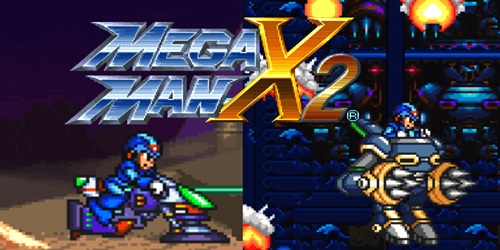
Megaman X2
Mega Man X2 is a fast-paced action-platformer released by Capcom in 1994 for the Super Nintendo Entertainment System (SNES), serving as the direct sequel to Mega Man X. Set in a futuristic world where Maverick Hunters battle rogue Reploids, the game follows X as he fights against the X-Hunters, a group seeking to resurrect his fallen comrade, Zero. Mega Man X2 expands on its predecessor with smoother gameplay, new armor upgrades, and the innovative "CX4" chip, which enables pseudo-3D effects. With its tight controls, challenging bosses, and secrets that reward exploration, Mega Man X2 remains a fan-favorite entry in the franchise.
SNES

Megaman X3
Mega Man X3 (1995) is the third installment in the Mega Man X series, bringing new gameplay elements and an expanded storyline. X once again faces the Maverick rebellion, this time led by Dr. Doppler, a scientist whose creations have turned against humanity. The game introduces the ability to play as Zero for the first time, though in a limited capacity, and features new armor upgrades, ride armors, and hidden enhancements. With its challenging levels, multiple endings, and improved graphics and music, Mega Man X3 is a standout title on the SNES and one of the most ambitious entries in the series.
SNES
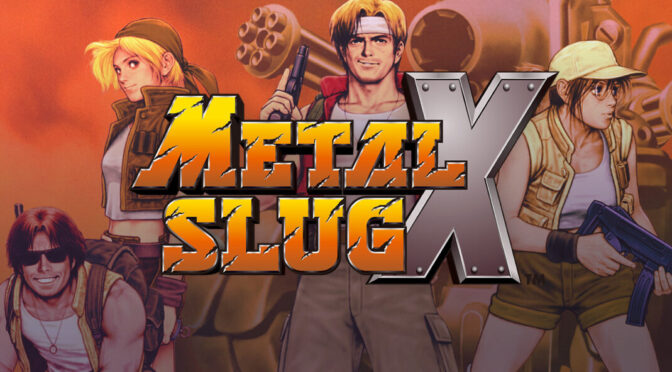
Metal Slug X
In Metal Slug X, the “Super Vehicle” refers to the SV-001 Metal Slug, the series’ trademark combat tank. It’s a compact but powerful machine armed with a Vulcan cannon (infinite ammo) and a heavy-hitting cannon with limited shells. The tank can also jump, crouch, and even crush enemies by landing on them, which makes it both versatile and fun to use. In Metal Slug X, variations of the Super Vehicle appear too, such as the Camel Slug (a camel fitted with a Vulcan gun), the Slug Flyer (a small fighter jet with missiles and rapid-fire guns), and the Slug Marine for underwater combat. These “super vehicles” not only boost firepower but also add unique twists to gameplay, turning already chaotic battles into over-the-top arcade madness.
SNES
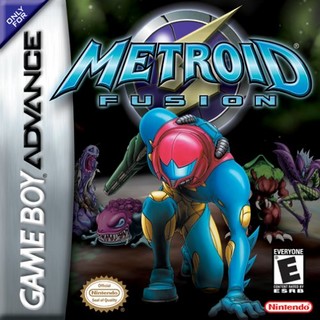
Metroid Fusion
Metroid Fusion for the Game Boy Advance is a story-driven, action-packed evolution of the classic Metroid formula, offering a more narrative-heavy and intense experience than its predecessors. Released in 2002, it follows Samus Aran after a near-fatal infection by a parasitic organism known as the X. Saved by a vaccine made from Metroid DNA, she awakens with new abilities and vulnerabilities—and a mission to investigate an outbreak aboard the Biologic Space Laboratories (B.S.L.) station. The game features tight controls, fluid animations, and atmospheric pixel art that perfectly capture the sense of isolation and danger. Its interconnected map design encourages exploration and backtracking, while the relentless SA-X (a clone of Samus infected by the X Parasite) adds a survival-horror edge. Metroid Fusion blends storytelling, tension, and gameplay into one of the most memorable and refined entries in the series, cementing its place as a GBA classic.
GBA
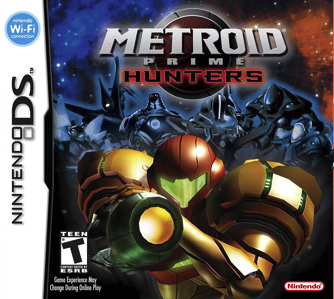
Metroid Prime: Hunters
Metroid Prime: Hunters for the Nintendo DS takes the series’ signature exploration and combat into a handheld first-person shooter format, delivering one of the most impressive technical feats on the system. Released in 2006, it follows Samus Aran as she responds to a mysterious telepathic message known as “The Ultimate Power,” leading her to a remote sector filled with alien rivals—other bounty hunters each vying for the same prize. The game features a full single-player campaign with classic Metroid elements like scanning, platforming, and power-ups, but it truly shines in its fast-paced multiplayer mode, which supports both local and online play. With precise stylus-based aiming, 3D environments, and the ability to play as different hunters with unique weapons, Metroid Prime: Hunters stands as a bold and innovative entry that pushed the limits of what the DS could do.
NDS

Midnight Club 1
Midnight Club for the Game Boy Advance brings the street-racing excitement of the console series into a compact handheld form, focusing on fast-paced, checkpoint-driven races across stylized city streets. You’ll choose from a lineup of customizable cars and take on rival racers in increasingly tougher challenges, all while navigating tight corners, traffic, and shortcuts. Though simplified compared to its console counterparts, the GBA version still captures the core Midnight Club feel—speed, risk-taking, and urban racing attitude—making it a fun on-the-go experience for fans of arcade-style racing games.
GBA
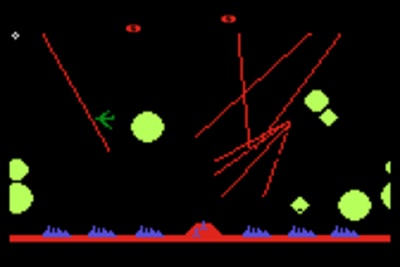
Missile Command
Missile Command for the Atari 2600, released in 1981, is one of the most intense and memorable games of the early 8-bit era. Adapted from Atari’s arcade hit, it puts players in charge of defending six cities from relentless waves of incoming enemy missiles. Using a fast-moving cursor and timed shots, players must intercept and destroy threats before they reach the ground, juggling limited ammunition and increasing speed with each round. While the arcade version used a trackball, the 2600 port cleverly reworked the controls for the joystick, maintaining the same sense of urgency and chaos. The game’s bleak, no-win premise — where eventual defeat is inevitable — made Missile Command a chilling reflection of Cold War fears and one of the Atari 2600’s most thematically powerful and addictive titles.
ATARI
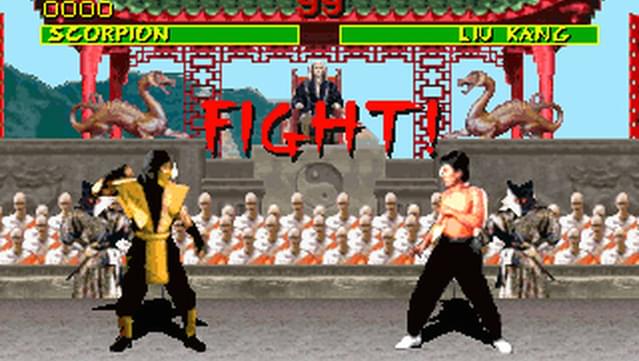
Mortal Kombat 1
Mortal Kombat 1 on the Super Nintendo Entertainment System (SNES) was released in 1993 as part of the global fighting game craze sparked by arcades. While it retained the core roster of iconic characters like Scorpion, Sub-Zero, Raiden, and Liu Kang, along with the same one-on-one martial arts combat style, the SNES version is best remembered for its censorship. Nintendo removed the franchise’s infamous blood and toned down the graphic fatalities, replacing them with “sweat” and less violent finishing moves, which frustrated fans who had embraced the series’ shock value in arcades. Despite this, the game was still popular on SNES due to its tight controls, recognizable characters, and the cultural impact Mortal Kombat had in shaping the fighting genre, though many players at the time gravitated toward the Sega Genesis version for its more faithful arcade violence.
SNES
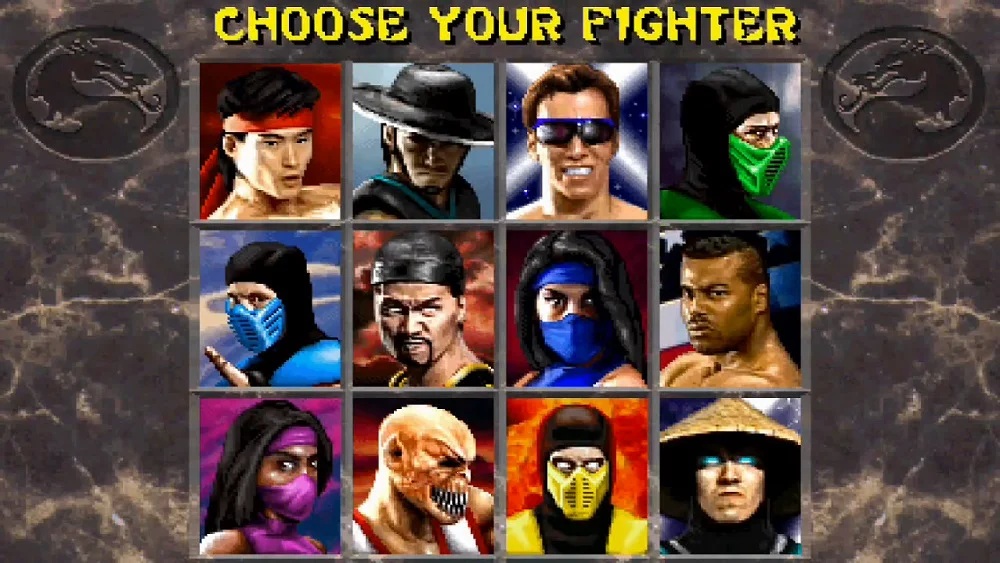
Mortal Kombat 2
Mortal Kombat II on the Sega Mega Drive (Genesis) came out in 1994 and, much like the SNES version, aimed to deliver a faithful home experience of the arcade hit. The Mega Drive port was praised for keeping the violence, blood, and fatalities intact right out of the box, unlike the heavily censored SNES version of the first game. While the graphics and sound were a bit more limited compared to the SNES version—thanks to the Mega Drive’s color palette and audio hardware—the gameplay was smooth, fast, and responsive, which many fans actually preferred. With its expanded roster, darker atmosphere, and brutal finishing moves, Mortal Kombat II on the Mega Drive stood as one of the best fighting game ports on the system and was a must-have for Sega fans eager for the true Mortal Kombat experience at home.
SNES
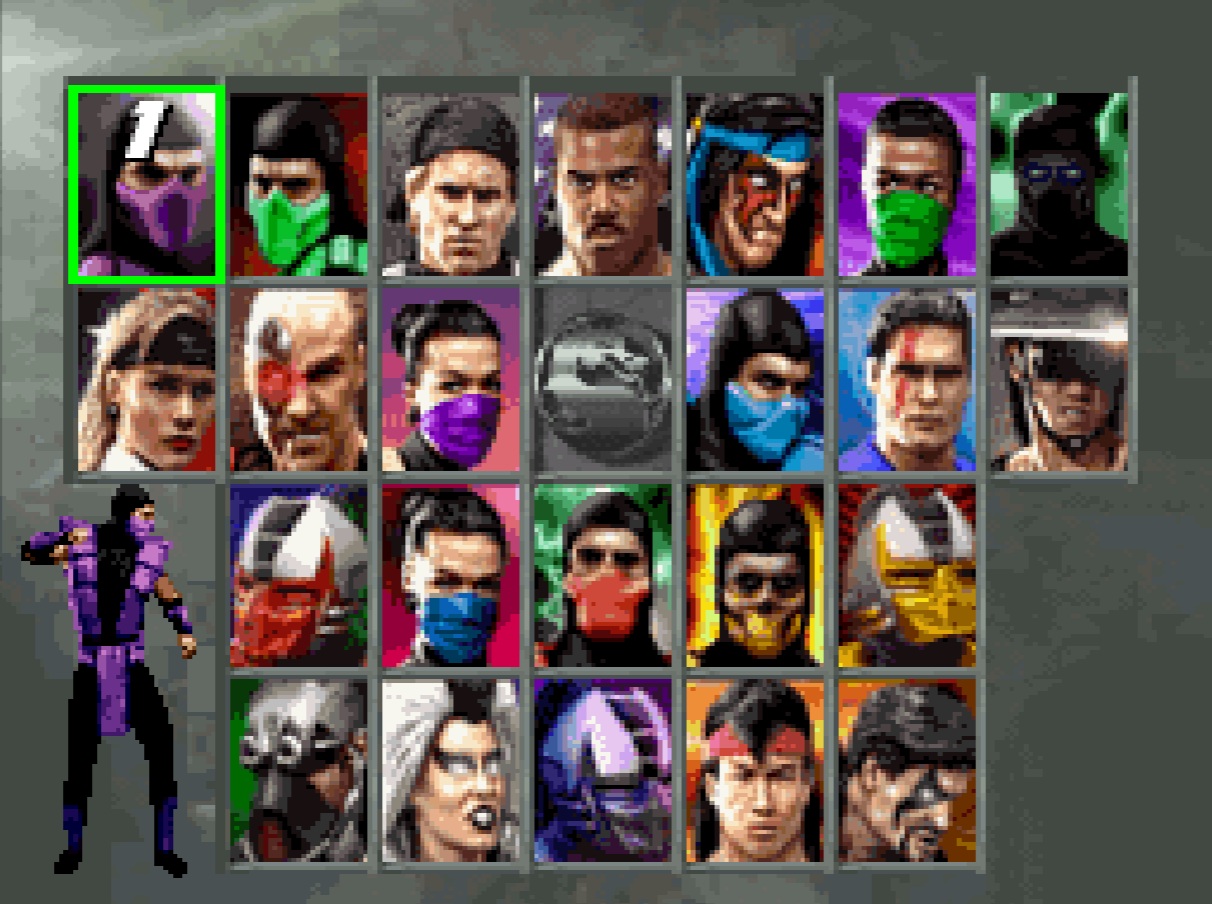
Mortal Kombat 3
Mortal Kombat 3 is a 1995 DOS and arcade fighting game that continued Midway’s iconic series with faster gameplay, new mechanics, and an expanded roster. Unlike its predecessors, MK3 introduced a “Run” button that sped up matches, along with chain combos that demanded quicker reflexes and strategy. The game featured both returning fighters like Liu Kang, Sonya, and Sub-Zero, and newcomers such as Stryker, Sindel, Nightwolf, and Sheeva. A darker storyline pushed the saga forward, with Shao Kahn resurrecting Queen Sindel and merging Earthrealm with Outworld, forcing Earth’s warriors into battle for survival. Known for its brutal finishing moves, including Fatalities, Animalities, and brutal new stage finishers, Mortal Kombat 3 cemented itself as one of the most memorable fighting games of the 1990s, blending gory spectacle with competitive gameplay.
SNES
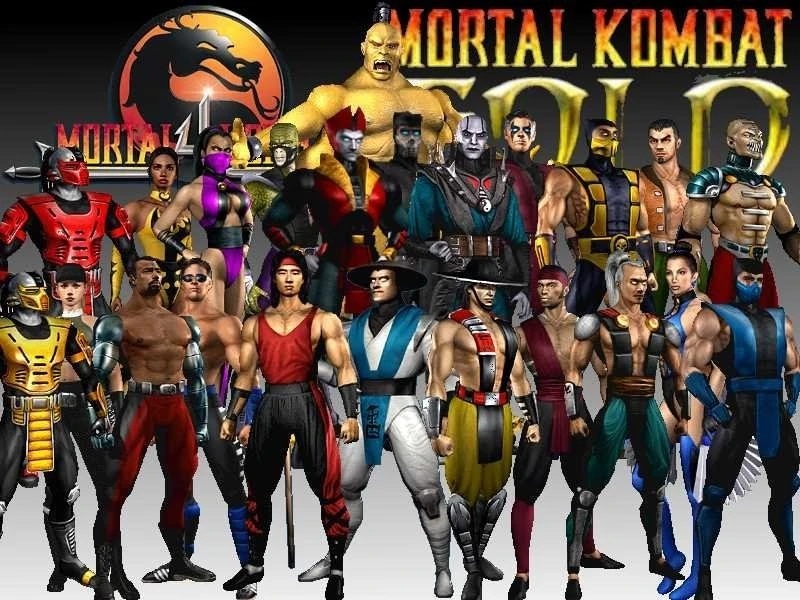
Mortal Kombat 4
Mortal Kombat 4 on the PlayStation (PSX), released in 1997, marked a major shift for the series as it was the first Mortal Kombat game to move from 2D sprites into fully 3D polygon-based graphics. The PSX version delivered the arcade experience fairly well, with all the fast-paced combat, fatalities, and new mechanics intact. It introduced weapon-based combat, where fighters could pull out unique weapons during battle, adding a new layer of strategy. The roster featured classics like Scorpion, Sub-Zero, Raiden, and Liu Kang, alongside newcomers such as Quan Chi, Shinnok, and Fujin. While the graphics looked dated compared to other 3D fighters of the time like Tekken or Soulcalibur, Mortal Kombat 4 stood out for keeping the brutal identity of the series alive with its violent finishers and dark tone. On PSX, it became a popular entry for fans eager to see Mortal Kombat’s leap into the 3D era.
PSX
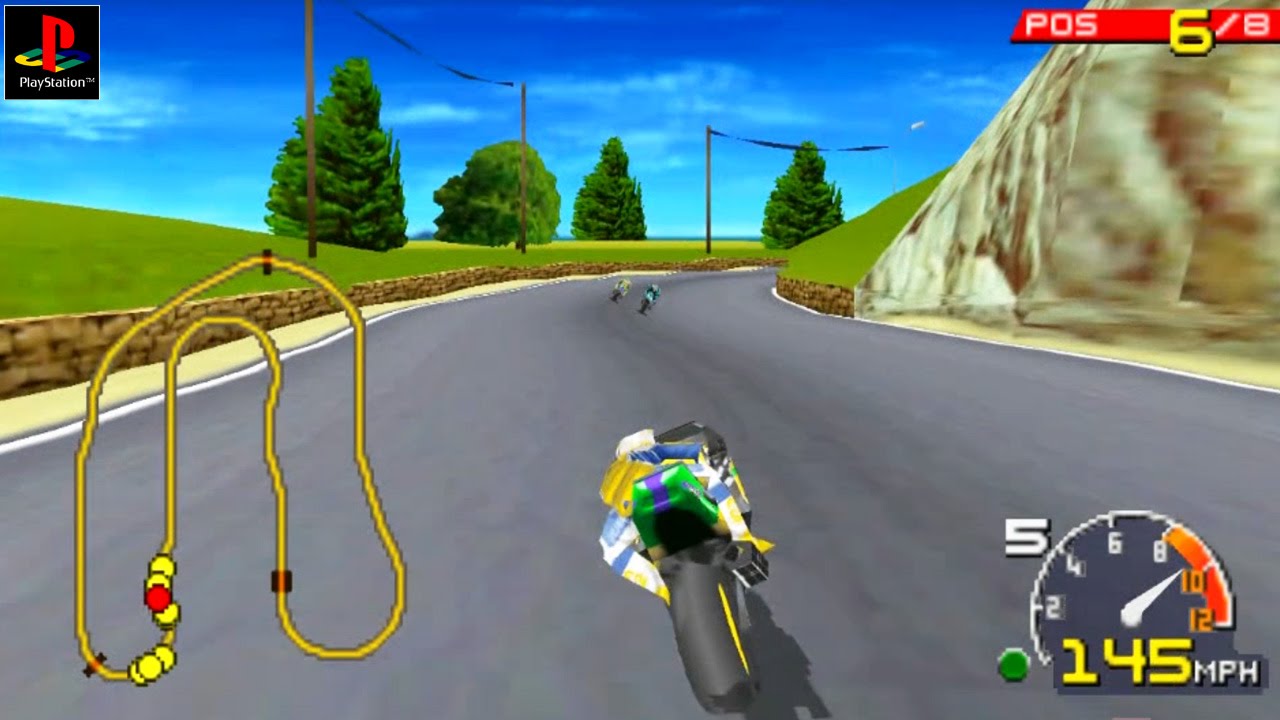
Moto Racer
Moto Racer is a 1997 motorcycle racing game developed by Delphine Software and published by Electronic Arts that became one of the most popular PC racing titles of its time. The game stood out for offering both high-speed road racing on superbikes and thrilling off-road motocross action, giving players two distinct racing experiences in one package. With arcade-style controls, colorful tracks, and split-screen or online multiplayer support, Moto Racer delivered fast, accessible fun that appealed to casual and competitive players alike. Its smooth graphics, catchy soundtrack, and responsive gameplay helped it gain a strong following, spawning sequels and cementing its place as a classic in the late ’90s racing game scene.
PSX
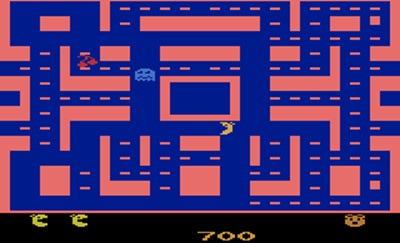
Ms. Pacman
Ms. Pac-Man for the Atari 2600, released in 1982 by Atari under license from Midway, is a standout example of how to successfully adapt an arcade hit to limited home hardware. As the sequel to the original Pac-Man, it improved on nearly every aspect — offering multiple mazes, smarter ghost behavior, and smoother gameplay. Players guide Ms. Pac-Man through colorful labyrinths, munching pellets and fruit while evading four persistent ghosts. Unlike the notoriously disappointing Pac-Man port, Ms. Pac-Man received widespread praise for its faithful visuals, tight controls, and engaging level variety. It demonstrated that with care and clever coding, the Atari 2600 could deliver an authentic arcade feel — and gave the system one of its most beloved and enduring titles.
ATARI
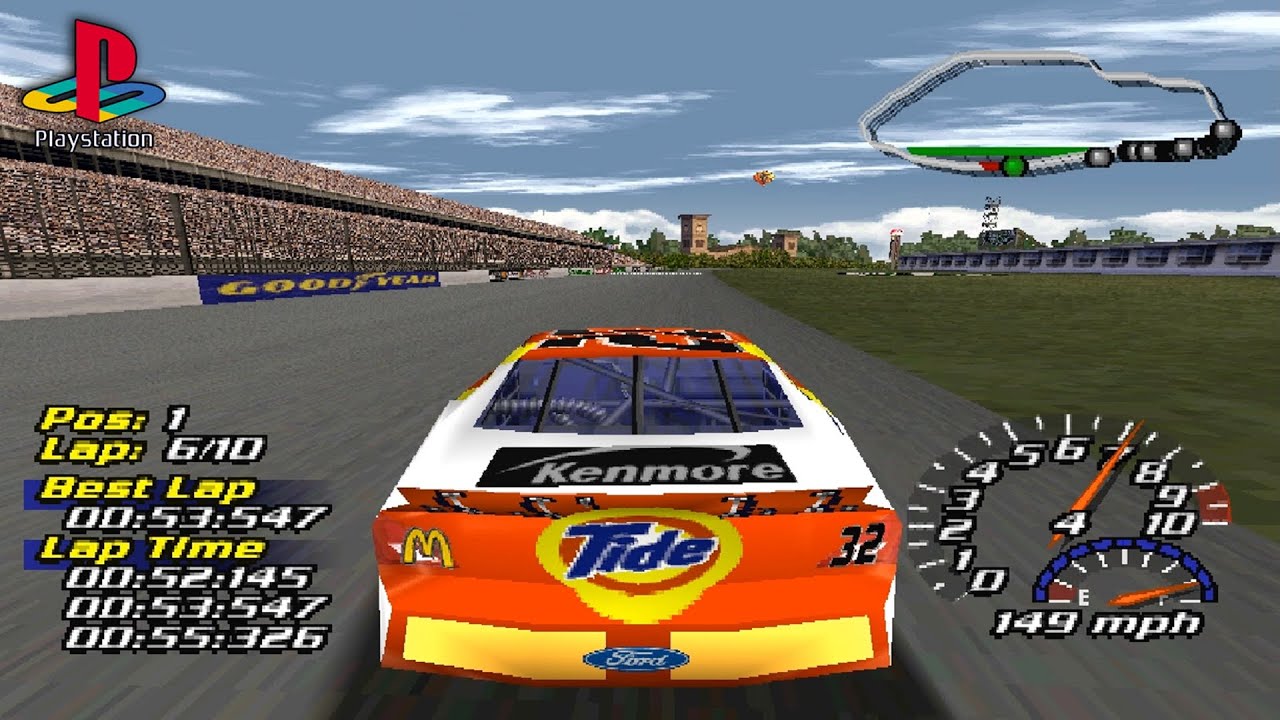
Nascar 2001
NASCAR 2001 on the PlayStation (PSX) is a stock car racing game by EA Sports, released in 2000, featuring official drivers, cars, and tracks from the 2000 Winston Cup season. Players could race as legends like Dale Earnhardt and Jeff Gordon across authentic circuits, with modes including single races, full championships, and time trials. While its graphics and performance were limited compared to the PlayStation 2 version, the PSX release still captured the thrill of high-speed drafting, pit strategies, and tight oval racing, making it a solid choice for NASCAR fans on the original PlayStation.
PSX
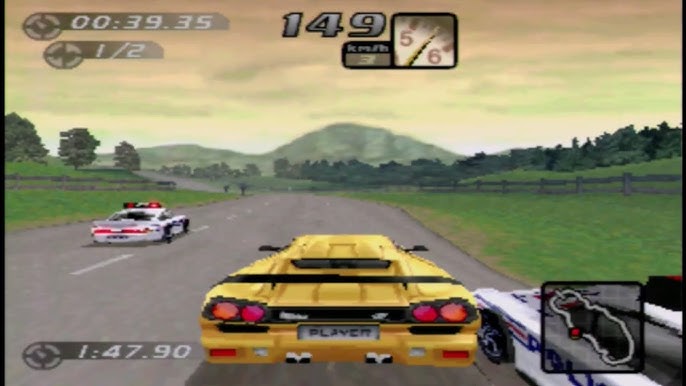
Need for Speed 1
Need for Speed on the PlayStation, released in 1995, was the first entry in the long-running racing franchise and set the foundation for what the series would become. The game focused on delivering a realistic driving experience, featuring a lineup of exotic sports cars like the Lamborghini Diablo, Ferrari 512TR, and Acura NSX, each with detailed stats and handling differences. Races took place across scenic open roads with traffic and police pursuits, giving it a more thrilling edge compared to standard circuit racers of the time. With its mix of speed, danger, and car culture, Need for Speed on PSX became a landmark title that helped define the racing genre for the next generation.
PSX
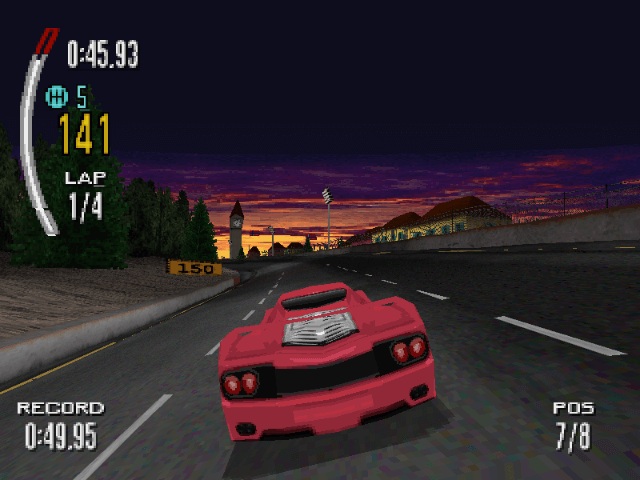
Need for Speed 2
Need for Speed on the PlayStation, released in 1995, was the first entry in the long-running racing franchise and set the foundation for what the series would become. The game focused on delivering a realistic driving experience, featuring a lineup of exotic sports cars like the Lamborghini Diablo, Ferrari 512TR, and Acura NSX, each with detailed stats and handling differences. Races took place across scenic open roads with traffic and police pursuits, giving it a more thrilling edge compared to standard circuit racers of the time. With its mix of speed, danger, and car culture, Need for Speed on PSX became a landmark title that helped define the racing genre for the next generation.
PSX
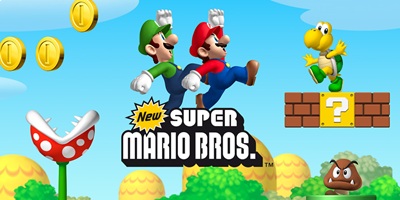
New Super Mario Bros.
New Super Mario Bros., released for the Nintendo DS in 2006, marked Mario’s triumphant return to classic 2D platforming after more than a decade of 3D adventures. Blending nostalgic gameplay with modern design, it reimagined the original Super Mario Bros. formula with vibrant 3D-rendered characters, smooth animations, and creative new power-ups like the Mega Mushroom, which lets Mario grow to giant size and smash through everything in his path. The game’s worlds—spanning grasslands, deserts, icy mountains, and Bowser’s fiery castles—offered tight, responsive controls and a perfect balance of challenge and accessibility. Its two-player Mario vs. Luigi mode added a fun, competitive twist, letting friends battle it out over coin collection. With over 30 million copies sold, New Super Mario Bros. became one of the DS’s best-selling titles and revitalized the 2D Mario series for a new generation, paving the way for future entries on the Wii and beyond.
NDS
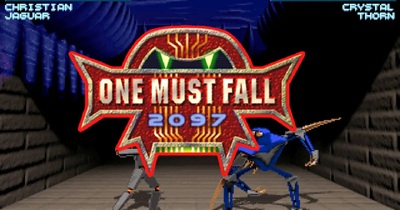
One Must Fall 2097
One Must Fall 2097 is a cult-favorite 1994 fighting game that swapped human fighters for towering, customizable robots powered by human pilots. Set in a futuristic arena-combat world, matches are fast, flashy, and packed with heavy metallic impact as you smash opponents into hazards, pull off special moves, and upgrade your machine between fights. What made it stand out was its deep tournament mode, RPG-style progression, and surprisingly strategic combat system where pilot stats, robot types, and hidden secrets all influenced the outcome. With its energetic soundtrack, smooth animations, and addictive loop of fighting, upgrading, and unlocking new abilities, One Must Fall 2097 remains one of the most beloved and replayable DOS fighting games of the era.
DOS
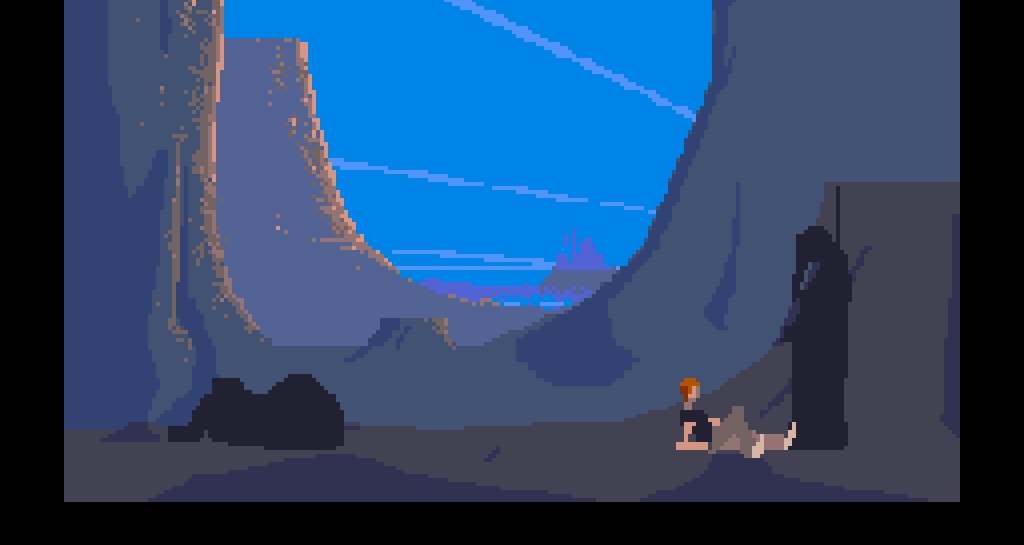
Out of This World
Out of This World (also known as Another World outside North America) is a cinematic platformer developed by Éric Chahi and released in 1991, later ported to the SNES in 1992. The game follows Lester Knight Chaykin, a young scientist who, after a botched experiment, finds himself teleported to an alien planet filled with hostile creatures and dangers. Renowned for its minimalist storytelling, rotoscoped animation, and challenging gameplay, Out of This World relies on environmental puzzles and precise timing rather than traditional action mechanics. The game's unique art style, atmospheric soundtrack, and emotional depth helped solidify its status as one of the most influential and innovative games of its era, inspiring many cinematic adventure games that followed.
SNES
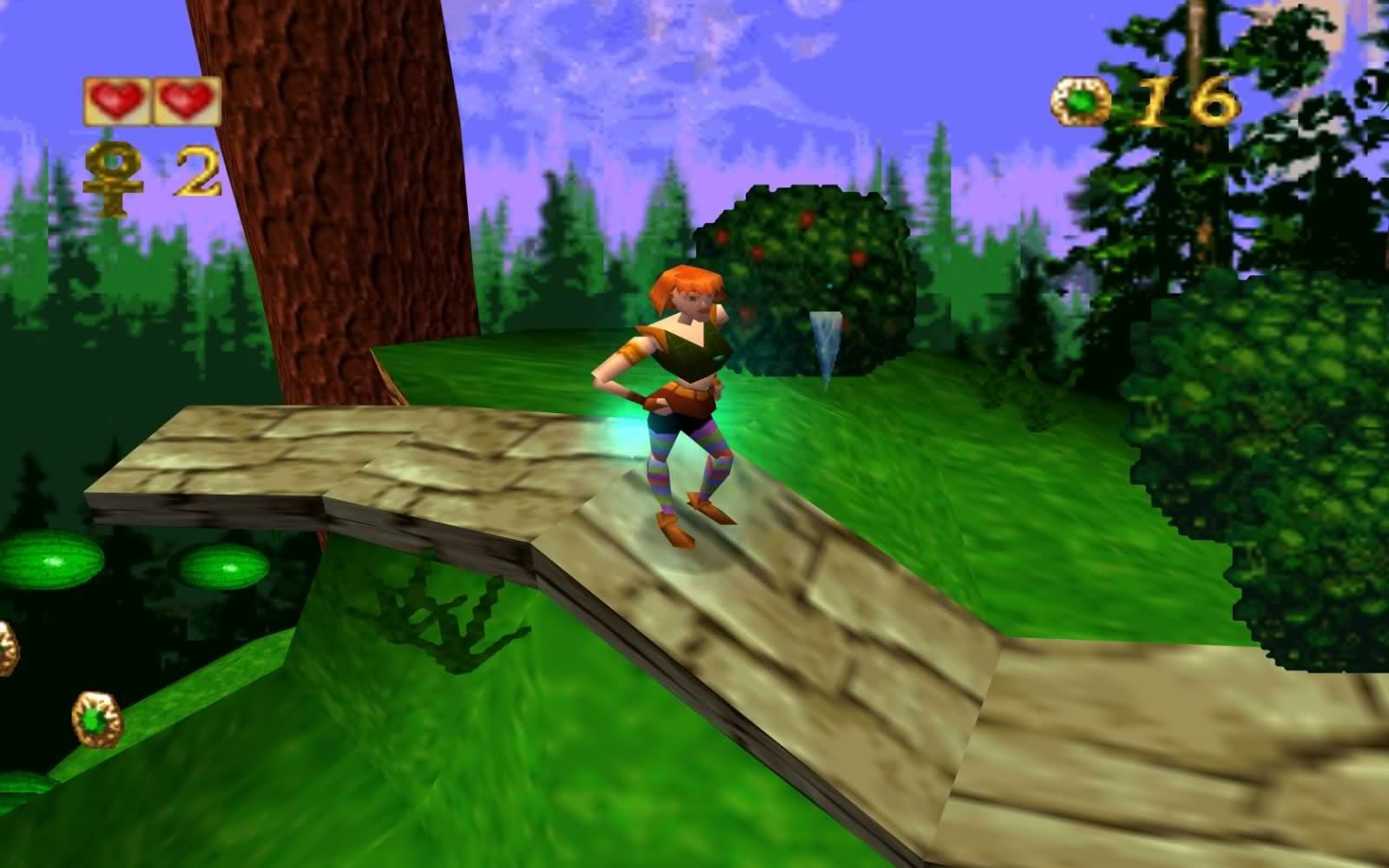
Pandemonium
Pandemonium for the PlayStation is a colorful 2.5D platformer released in 1996 that mixes side-scrolling gameplay with a fully 3D-rendered world. Players control Nikki, a sorceress, or Fargus, a mischievous court jester, each with unique abilities, as they set out to undo the chaos caused by a spell gone wrong. The game is known for its whimsical environments, imaginative enemies, and shifting camera angles that bring depth to the otherwise traditional platforming action. With its quirky humor, smooth controls, and lively presentation, Pandemonium stood out as one of the more charming and inventive early PlayStation platformers.
PSX
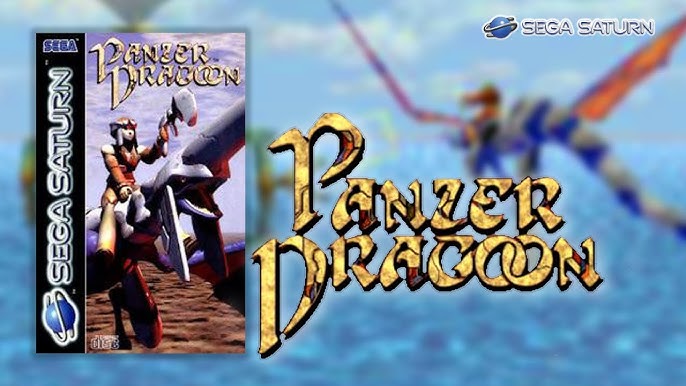
Panzer Dragoon
Panzer Dragoon for the Sega Saturn is a landmark rail shooter developed by Team Andromeda and published by Sega in 1995, known for its atmospheric world, haunting soundtrack, and innovative gameplay. Set in a mysterious post-apocalyptic future, players ride a dragon through vast 3D environments, locking onto enemies and unleashing homing attacks in all directions — an impressive technical showcase for the Saturn’s early 3D capabilities. Its art style, inspired by European fantasy and biomechanical design, combined with cinematic storytelling, made Panzer Dragoon one of the Saturn’s defining titles and a cult classic that laid the foundation for sequels like Panzer Dragoon II Zwei and the beloved RPG spin-off Panzer Dragoon Saga.
SegaSaturn
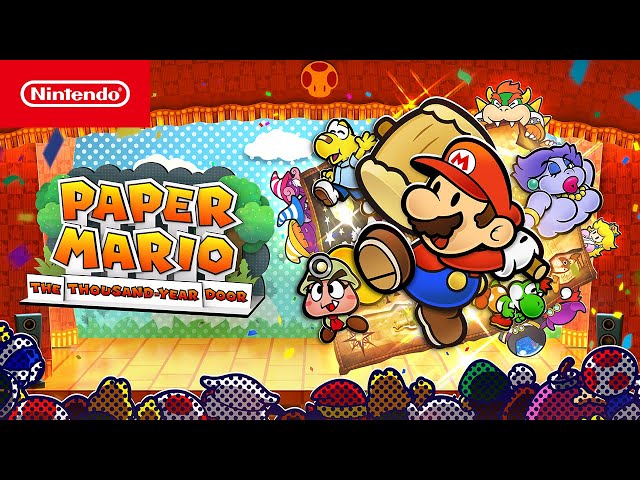
Paper Mario
Paper Mario for the Nintendo 64, released in 2000, brought a fresh twist to the Mario franchise by blending traditional role-playing mechanics with a unique “paper cutout” art style that gave the game a storybook charm. Unlike Mario’s usual fast-paced platforming, this adventure leaned into turn-based combat, puzzle-solving, and witty dialogue, with Mario teaming up with quirky partners like Goombario and Bombette, each offering their own special abilities in and out of battle. The game’s lighthearted humor, colorful worlds, and accessible RPG systems made it approachable for newcomers while still offering depth for longtime fans. Paper Mario stood out not only for its originality and charm but also for proving that Mario could successfully branch into different genres, becoming a cult classic and the start of a beloved spin-off series.
N64
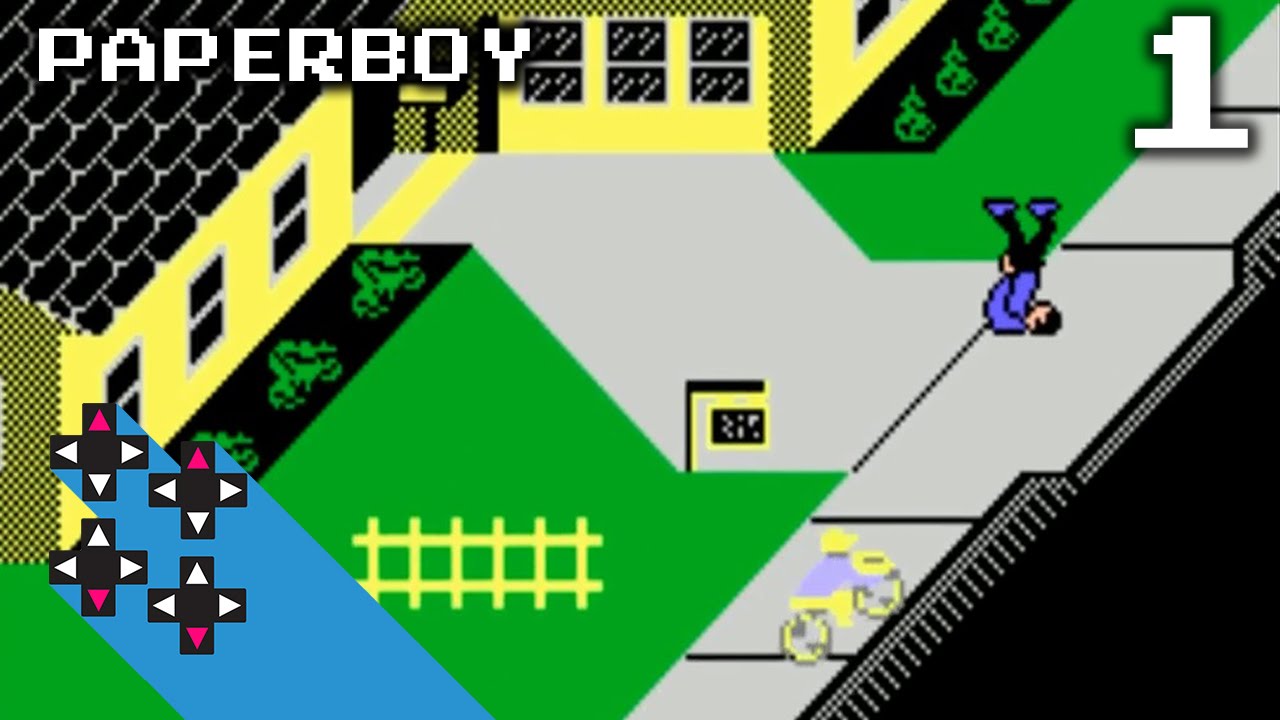
Paperboy 1
Paperboy for the NES is a quirky and challenging arcade-style game where players take on the role of a suburban paper delivery kid trying to survive a week on their route. The objective is to toss newspapers into the mailboxes of subscribers while avoiding obstacles like cars, dogs, breakdancers, and even runaway lawnmowers. Points are earned for accurate deliveries and bonus stunts, while breaking windows or missing deliveries can cost you subscribers. With its isometric perspective and chaotic suburban hazards, Paperboy on NES captured the humor and difficulty of balancing precision with mayhem, making it a memorable title of the 8-bit era.
SNES

Paperboy 2
Paperboy 2 is a 1991 sequel to the classic arcade game Paperboy, developed by Tengen and released for various home consoles and computers. It retains the core gameplay of delivering newspapers while avoiding obstacles, but expands on the original by allowing players to throw papers to both the left and right sides of the street. The game introduces new hazards, including runaway baby strollers, ghosts, and wacky neighborhood antics, as well as the ability to perform good deeds, such as knocking away burglars or helping people in need, which can earn bonus points. With its expanded suburban chaos and quirky sense of humor, Paperboy 2 builds upon its predecessor while keeping the simple, yet addictive, gameplay intact.
SNES
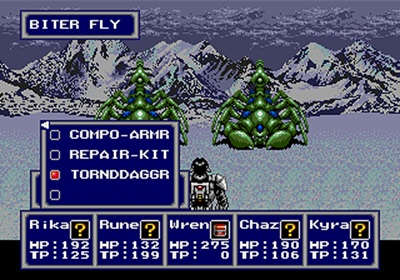
Phantasy Star 4
Phantasy Star IV: The End of the Millennium, released for the Sega Mega Drive in 1993 (Japan) and 1995 (North America/Europe), is widely regarded as the crown jewel of Sega’s classic RPG series. Set in the Algol star system, it follows Chaz Ashley, Alys Brangwin, and a group of allies as they uncover an ancient evil threatening the galaxy. The game featured turn-based combat enhanced by macro commands that let players pre-set combination attacks, as well as stunning manga-style cutscenes that pushed the storytelling beyond most 16-bit RPGs of its time. Its world blended sci-fi and fantasy elements—futuristic tech, space travel, and traditional magic—creating a distinctive setting that stood apart from other RPGs like Final Fantasy and Dragon Quest. With rich character development, an emotional storyline, and a memorable soundtrack, Phantasy Star IV is remembered as one of the best role-playing games on the Mega Drive and a fitting finale to the original saga.
SegaMD
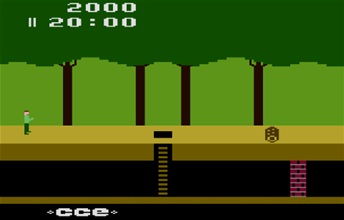
Pitfall
Pitfall! for the Atari 2600, released in 1982 by Activision and designed by the legendary David Crane, is often considered one of the greatest games ever made for the system. Players control the daring adventurer Pitfall Harry as he races through a 20-minute quest across a jungle filled with deadly pits, rolling logs, snakes, scorpions, and crocodile-filled lakes. The goal is to collect all 32 treasures scattered across 255 screens, each seamlessly connected to form one massive side-scrolling world—an incredible technical feat for its time. Pitfall! introduced smooth animation, precise controls, and exploration-driven gameplay that laid the foundation for the modern platforming genre. It became a massive hit for Activision and remains a timeless showcase of creativity and skill on the Atari 2600.
ATARI
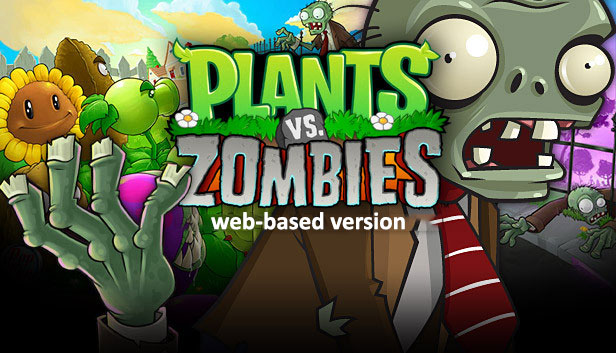
Plants vs Zombies
Plants vs. Zombies (2009) is a tower defense strategy game developed by PopCap Games where players defend their home from waves of quirky zombies using an arsenal of unique plants. Each plant has its own abilities—from shooting peas to exploding on impact—while zombies vary in speed, strength, and tactics. Set across different environments like the front yard, backyard, and rooftop, the game blends humor, creativity, and strategy as players balance sunlight resources, plan layouts, and adapt to evolving challenges. Its charming art style, catchy soundtrack, and addictive gameplay made it an instant classic and one of the most beloved casual games of all time.
HTML5
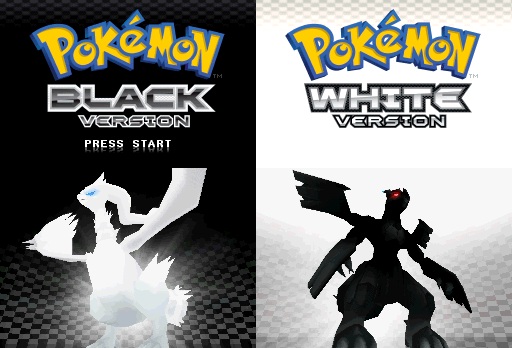
Pokemon Black & White
Pokémon Black and White, released for the Nintendo DS in 2010, brought a fresh evolution to the series with a new region called Unova, 156 entirely new Pokémon, and a more mature storyline that questioned the ethics of battling and capturing Pokémon. Set apart by its dynamic 2D-3D visuals, animated battle sprites, and cinematic presentation, the game pushed the DS hardware to its limits while introducing new mechanics like triple battles, rotation battles, and changing seasons. With its deeper narrative, memorable characters like N, and a complete Pokédex reset that forced players to discover every creature anew, Pokémon Black and White stood out as one of the most ambitious and thought-provoking entries in the franchise.
NDS
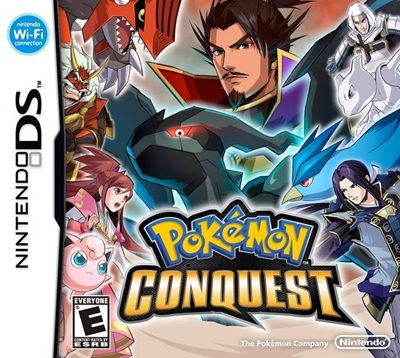
Pokemon Conquest
Pokémon Conquest, released for the Nintendo DS in 2012, was a bold crossover between Pokémon and the tactical RPG series Nobunaga’s Ambition. Set in the feudal-inspired Ransei region, players took on the role of a young warlord aiming to unite 17 kingdoms, each aligned with different Pokémon types. Instead of traditional turn-based battles, combat played out on grid-based maps where warriors and their partner Pokémon moved strategically to attack enemies and capture strongholds. The game featured a unique “link” system for bonding with Pokémon and recruiting new allies, blending strategy and monster training in a way the series had never done before. With its beautiful art style, deep tactical gameplay, and refreshing twist on the Pokémon formula, Pokémon Conquest became a standout spin-off that still holds a cult following among fans of both franchises.
NDS

Pokemon Leaf Green
Pokémon LeafGreen for the Game Boy Advance is a modernized remake of the classic Kanto adventure, bringing enhanced visuals, refined gameplay, and updated mechanics while preserving the nostalgic charm of the original. You begin your journey in Pallet Town, traveling across Kanto to collect Gym Badges, outwit the troublesome Team Rocket, and complete the Pokédex alongside your rival. With iconic locations like Viridian Forest, Lavender Town, and the Safari Zone, plus the added Sevii Islands post-game content, LeafGreen offers a polished blend of exploration, strategy, and classic Pokémon storytelling.
GBA
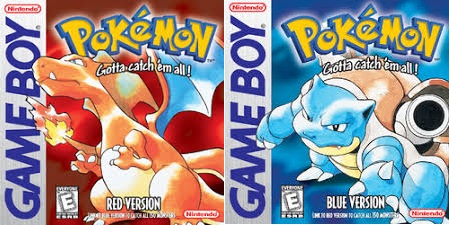
Pokemon Red & Blue
Pokémon Red and Blue, released in 1996 in Japan (as Red and Green) and 1998 internationally, were the first entries in the Pokémon series and introduced players to the Kanto region, home to the original 151 Pokémon. The games follow a young trainer’s journey to collect Gym Badges, challenge the Elite Four, and ultimately become the Pokémon Champion, all while working to complete the Pokédex for Professor Oak. Each version featured certain exclusive Pokémon, encouraging players to trade between cartridges using the Game Boy Link Cable, which was revolutionary at the time and fostered a social aspect around the games. With turn-based battles, exploration, and the iconic “Gotta Catch ’Em All” mantra, Red and Blue laid the foundation for what would become one of the most influential and best-selling gaming franchises in history.
GBA
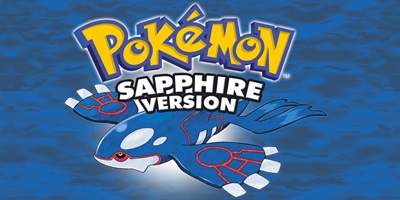
Pokemon Sapphire
Pokémon Sapphire for the Game Boy Advance brings players into the vibrant Hoenn region, where you begin your journey as a young trainer determined to become a Pokémon Champion. With a strong focus on exploration, strategic battles, and team-building, the game introduces new creatures, exciting double battles, and the legendary Pokémon Kyogre at the heart of its story. Along the way, you'll challenge eight Gym Leaders, foil the plans of the villainous Team Aqua, and uncover the mysteries of Hoenn’s diverse landscapes—from oceans and rainforests to ancient ruins.
GBA

Prince of Persia 1
Feel nostalgic and enjoy the classic game Prince of Persia 1 in your browser. Set in ancient Persia, Grand Vizier Jaffar rules in tyranny. He wants to claim the throne by forcefully marrying the Sultan's daughter. She now has 60 minutes before the marriage. The princess' lover is not going to stand still... Even though he is imprisoned in the dungeon, he has an absolute will to free her. Avoid countless traps and defeat all guards in a sword combat to reach higher levels, and finally, face to face with Jaffar himself. Hurry up before the time runs out!
DOS
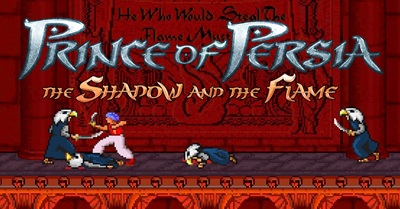
Prince of Persia 2
Similar to the first Prince of Persia, the character explores various deadly areas by running, jumping, crawling, avoiding traps, solving puzzles and drinking magic potions. Prince of Persia 2 is, however, more combat-heavy than its predecessor. In the first game, enemies appear only occasionally and are always alone, while in the sequel, up to four enemies may appear at once, sometimes flanking the player, and may even be instantly replaced by reinforcements when they are killed. As in Prince of Persia, the trick is to complete the game under a strict time limit that passes in real time. Lives are unlimited, but time cannot be regained (except by reverting to a previously saved game). In other areas, more significant improvements have been made. The graphics are far more complex than the simple look of the game's predecessor, the areas explored are larger, and the variety of backdrops is greater.
DOS
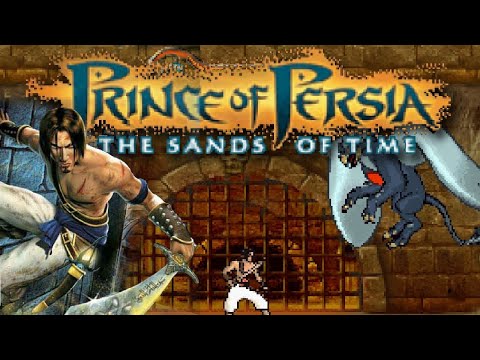
Prince of Persia Sands of Time
Prince of Persia: The Sands of Time on the Game Boy Advance, released in 2003 alongside its console counterparts, offered a surprisingly solid handheld adaptation of the beloved action-adventure title. Instead of trying to replicate the full 3D experience, the GBA version went back to the franchise’s roots with a side-scrolling 2D platformer style. Players guided the Prince through traps, puzzles, and sword-fighting sequences while still incorporating the series’ signature time-rewind mechanic, which allowed you to undo fatal mistakes. The game balanced tight platforming with combat and puzzle-solving, creating a portable experience that felt both nostalgic and fresh. While it couldn’t match the cinematic scope of the console versions, the GBA Sands of Time earned praise for its crisp visuals, smooth controls, and faithful reimagining of the core gameplay on a handheld system.
GBA
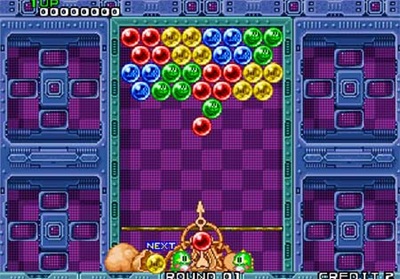
Puzzle Bobble
Puzzle Bobble, known as Bust-A-Move outside Japan, is a classic Neo Geo arcade puzzle game developed by Taito and released in 1994. It features the beloved Bubble Bobble characters, Bub and Bob, who shoot colorful bubbles from a cannon at the bottom of the screen. The goal is to match and pop groups of three or more bubbles before the ceiling slowly descends, adding tension to every shot. Simple to learn yet surprisingly strategic, Puzzle Bobble became one of the Neo Geo’s most popular non-fighting titles, praised for its addictive gameplay loop, cheerful sound effects, and competitive two-player mode. Its fast-paced, color-matching puzzle action helped define an entire genre of bubble-shooting games that continue to appear on modern platforms today.
NEOGEO
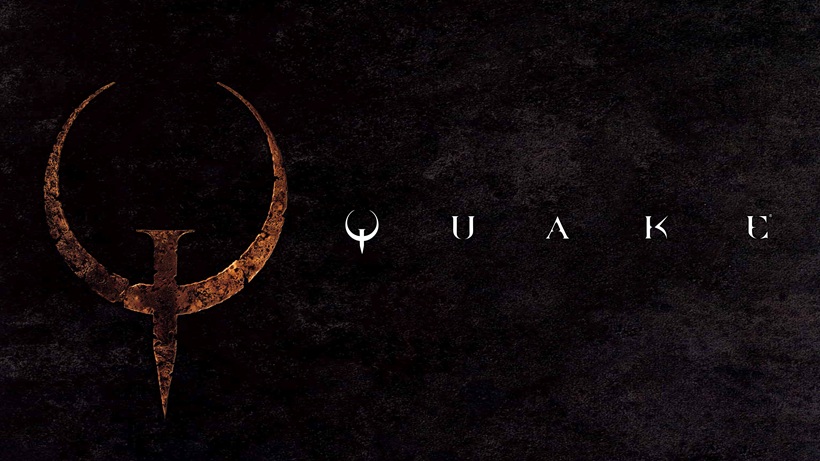
Quake 1
Experience the dark and brutal world of Quake, the game that revolutionized 3D first-person shooters, now fully playable in your web browser! Thanks to modern web technology, this MS-DOS classic has been ported using DOS-JS, allowing players to enjoy fast-paced shooting, gothic environments, and intense multiplayer action without needing an emulator or special setup. Whether you're playing on desktop, mobile, or tablet, you can now blast through Quake's nightmarish world anytime, anywhere, with touchscreen support for mobile users.
- Original is the groundbreaking first-person shooter from id Software that introduced dark gothic environments, true 3D graphics, and fast-paced multiplayer combat.
- Its first mission pack, Scourge of Armagon, expands the game with new levels, enemies, and weapons, culminating in a battle against the cybernetic overlord Armagon.
- The second expansion, Dissolution of Eternity, takes players through time-bending realms with fresh weapons, power-ups, and a finale against the formidable Eidolon.
HTML5
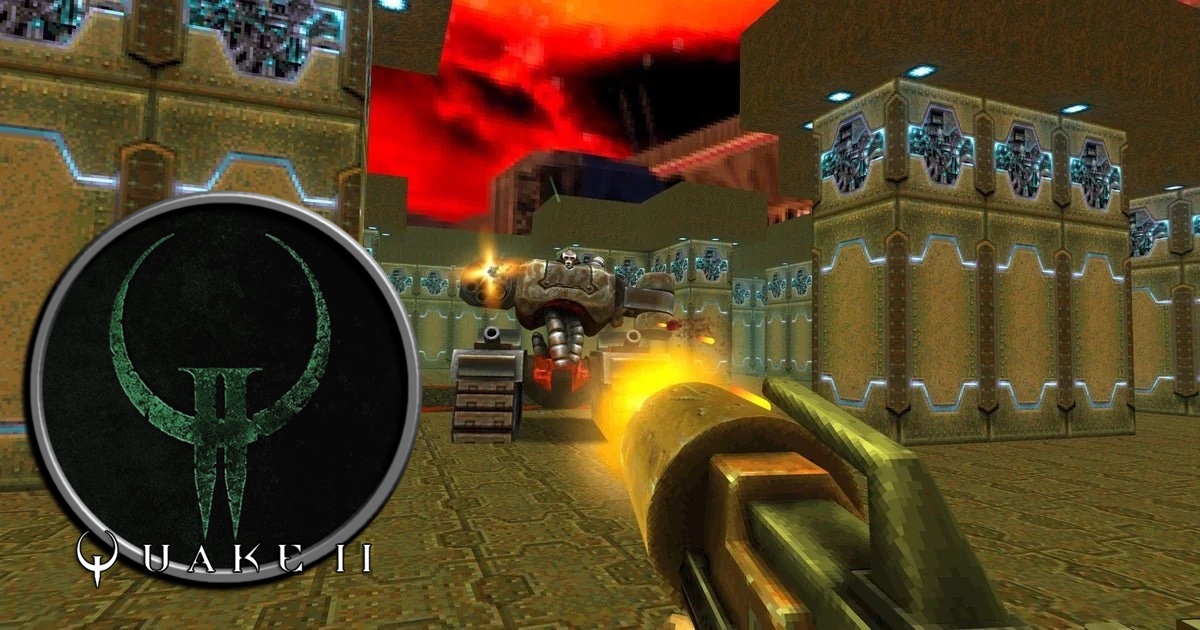
Quake 2
Quake II, released in 1997 by id Software, is a fast-paced first-person shooter that built upon the foundation of its predecessor while shifting away from the Lovecraftian horror style of Quake into a sci-fi setting. Players take on the role of a lone Marine, part of a failed invasion force against the alien Strogg, and must battle through hostile environments to sabotage their war machine and ultimately confront their leader, the Makron. Known for its refined graphics powered by the id Tech 2 engine, dynamic lighting, improved 3D models, and smooth multiplayer modes, Quake II quickly became a landmark in both single-player campaigns and online deathmatches, cementing its place as one of the classic shooters of the late ’90s.
HTML5
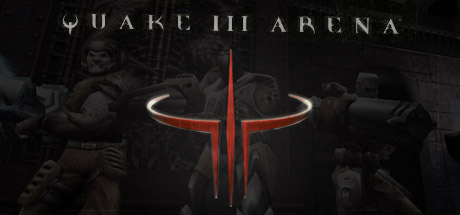
Quake 3
Quake III Arena (HTML5 Web Edition) is a modern browser-based adaptation of id Software’s legendary 1999 arena shooter, rebuilt using WebAssembly and WebGL so it runs entirely online—no installation required. It faithfully recreates the fast-paced, skill-driven gameplay of the original, where players face off in tight, vertical arenas with an arsenal of iconic weapons like the rocket launcher, railgun, and lightning gun. The web version retains the original maps, models, and physics, delivering smooth 60+ FPS performance directly in a browser while supporting multiplayer lobbies, bot matches, and customizable settings. With HTML5 and WASM optimizations, Quake 3 Web captures the adrenaline of classic LAN fragfests while making it instantly accessible across modern platforms—Windows, macOS, Linux, and even mobile browsers. It’s both a nostalgic revival for veterans and a technical showcase of how far web gaming has come.
HTML5
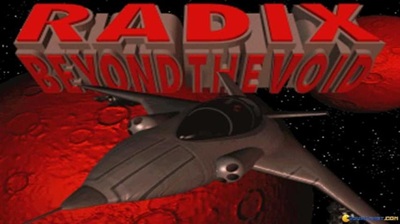
Radix
Radix: Beyond the Void for DOS is a fast-paced first-person space shooter where you pilot a sleek combat craft through maze-like alien bases, blasting enemies across sprawling, Doom-inspired levels. Known for its blend of 6-degrees-of-freedom movement and classic 90s FPS design, the game lets you strafe, dive, and flip through tight corridors while managing weapons, shields, and power-ups. With atmospheric sci-fi visuals, challenging enemy waves, and a distinct techno-industrial vibe, Radix delivers an intense, immersive flight-combat experience that stood out as one of the more ambitious DOS shooters of its era.
DOS

Raptor - Call of Shadows
Raptor: Call of the Shadows is a 2D vertical-scroller single player game developed by Cygnus Studios and published by Apogee Software. Its working title was "Mercenary 2029". It was released on April 1, 1994 for DOS. The game is divided into three "sectors": Bravo Sector, Tango Sector, and Outer Regions, all of which have nine sub-missions called "waves", making for a total of 27 levels (9 per sector). The full version of Raptor allows players to start out in any of the three campaigns, though playing them in order helps the player to more easily accumulate money for weapon and shield upgrades. Once a player beats a sector, they can replay it with all the money and weapons that they have accumulated. The difficulty is increased when the player does this however, e.g. if the player beats the sector on Rookie and replays it, the difficulty will be set to Veteran.
DOS
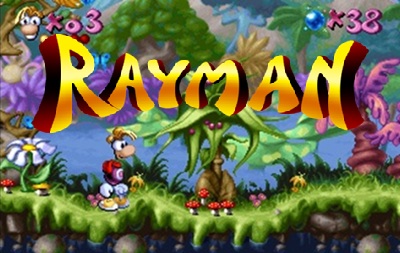
Rayman 1
Rayman, released for the PlayStation in 1995, was a vibrant 2D platformer that introduced players to Ubisoft’s now-iconic limbless hero. Known for its hand-drawn art style, colorful environments, and whimsical music, the game stood out at a time when 3D graphics were beginning to dominate. Players guided Rayman through beautifully animated worlds like The Dream Forest, Band Land, and Picture City, each filled with tricky platforming challenges, enemies, and Lums to collect. Despite its charming look, the game was notoriously difficult, requiring precise jumps and patience to progress. What made Rayman special was not only its polished visuals and atmosphere but also its unique protagonist, who attacked enemies with floating fists and gained new powers as the adventure unfolded. While brutally tough, it became a beloved classic that laid the foundation for one of Ubisoft’s most enduring franchises.
PSX
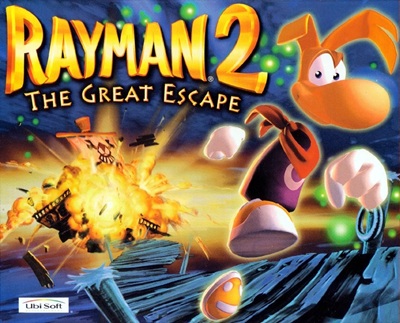
Rayman 2
Rayman 2: The Great Escape on the Nintendo 64 is a vibrant 3D platformer that follows Rayman as he tries to free his world from robot pirate invaders led by Admiral Razorbeard. Known for its smooth gameplay, imaginative worlds, and expressive characters, the game shifts away from the original’s 2D roots and delivers a fully realized 3D adventure filled with clever puzzles, fast-paced action, and memorable set pieces. The N64 version is often praised for its clean visuals, fluid performance, and excellent atmosphere, making it one of the standout platformers of its era and a fan-favorite entry in the series.
N64
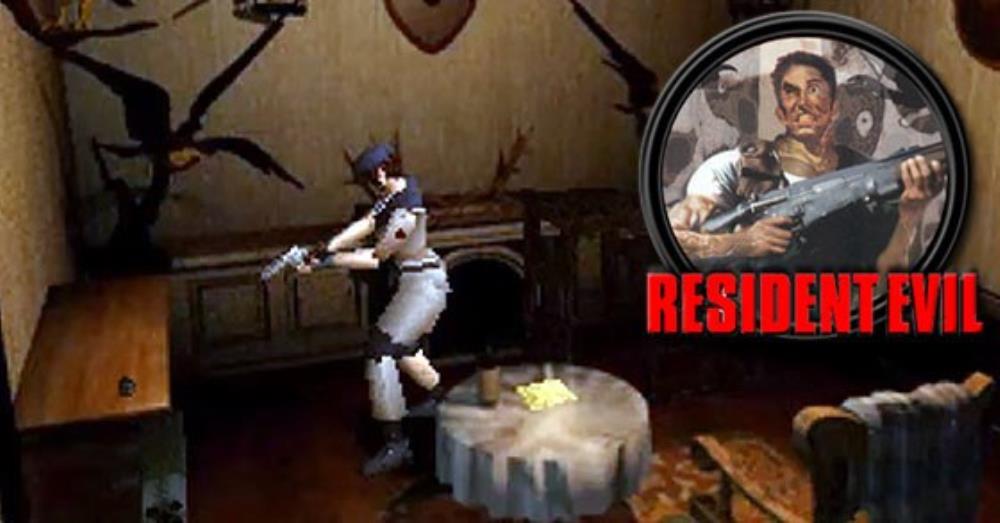
Resident Evil 1
Resident Evil 1, originally released for the PlayStation in 1996, is the game that defined the survival horror genre and launched one of Capcom’s most successful franchises. Set in the eerie Spencer Mansion on the outskirts of Raccoon City, players take on the role of S.T.A.R.S. members Chris Redfield or Jill Valentine as they investigate strange murders and uncover the terrifying truth behind the Umbrella Corporation’s experiments. The game is known for its tense atmosphere, fixed camera angles, limited resources, and puzzle-solving elements, all of which heightened the sense of dread. Iconic enemies like the shambling zombies, the terrifying dogs, and the first appearance of the Tyrant cemented its legacy. Despite its famously cheesy voice acting, Resident Evil 1 captivated audiences worldwide and set the standard for survival horror games for years to come.
PSX
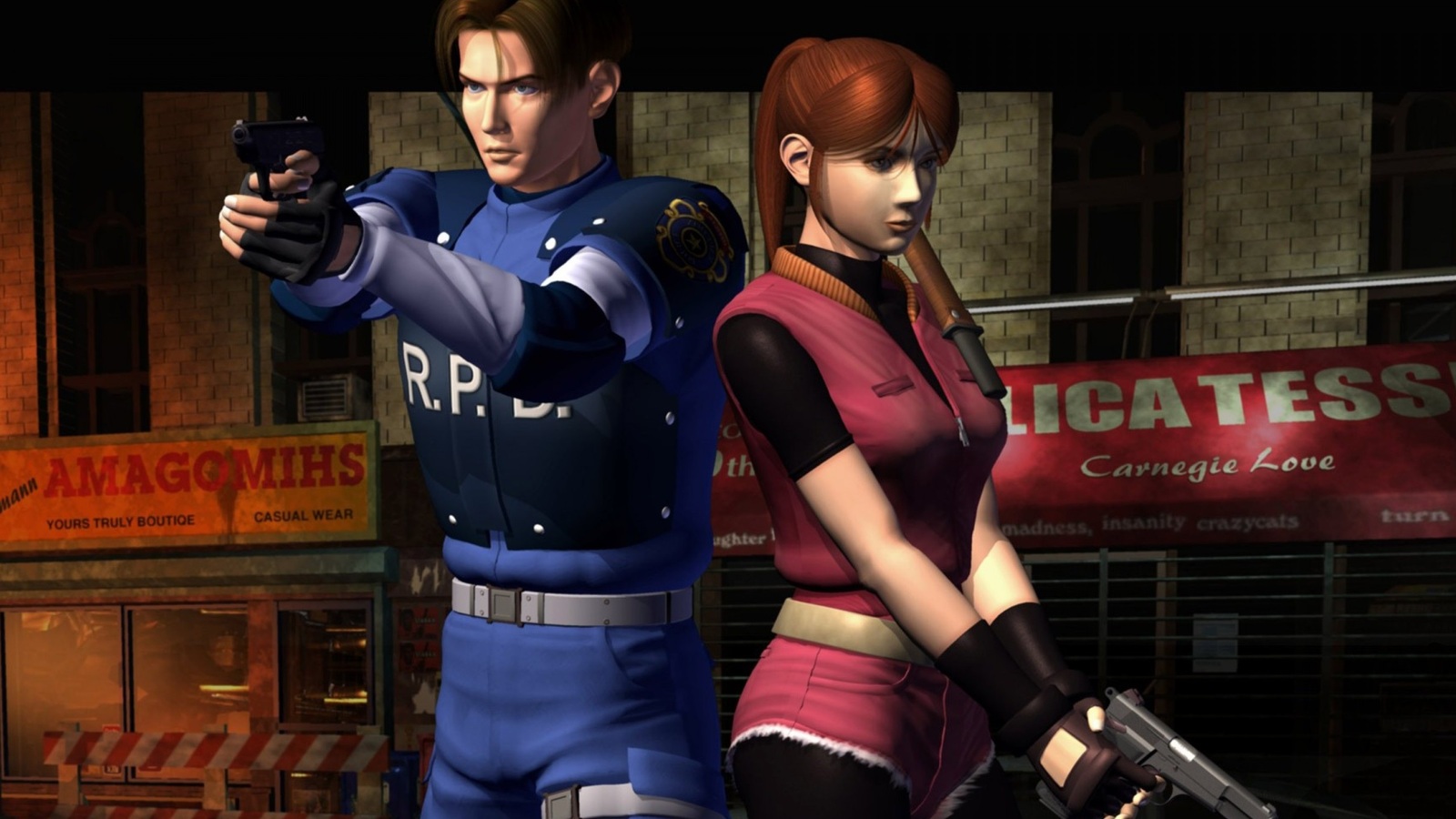
Resident Evil 2
Resident Evil 2, released for the PlayStation in 1998, took the survival horror formula of the first game and expanded it into a larger, more cinematic experience. Set in Raccoon City during a devastating viral outbreak, players follow rookie cop Leon S. Kennedy and college student Claire Redfield as they battle through hordes of zombies and uncover Umbrella Corporation’s sinister experiments. The game introduced the innovative “zapping system,” where events in one character’s scenario could affect the other’s playthrough, giving it immense replay value. With improved graphics, atmospheric environments like the Raccoon City Police Department, and more refined gameplay mechanics, Resident Evil 2 delivered both tension and action in equal measure. It is often hailed as one of the greatest survival horror games ever made and a high point of the series’ PlayStation era.
PSX
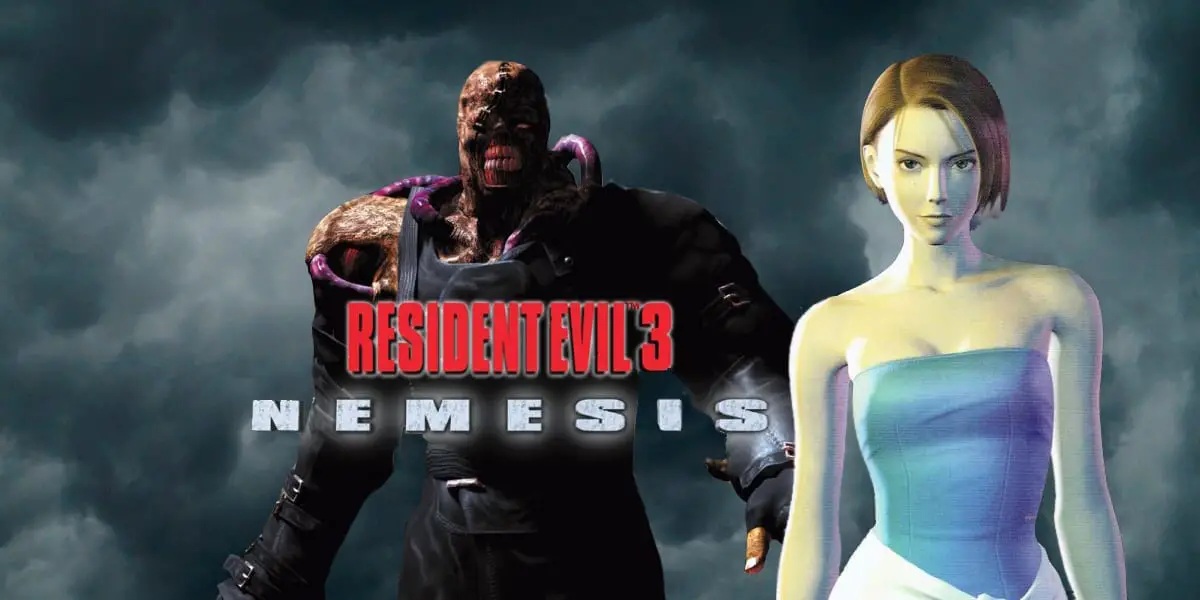
Resident Evil 3
Resident Evil 3: Nemesis, released for the PlayStation in 1999, continued Capcom’s survival horror legacy with a more action-oriented twist. Set during the chaotic outbreak in Raccoon City, the game follows Jill Valentine as she attempts to escape the city while being relentlessly pursued by the terrifying bioweapon Nemesis. Unlike its predecessors, Resident Evil 3 introduced features like the dodge mechanic, quick 180-degree turns, and ammo crafting through the reloading tool, giving players more flexibility in combat. The atmosphere is tense and unpredictable, as Nemesis can appear at any time, smashing through walls and chasing Jill across different areas, adding a new layer of fear and urgency. With its mix of classic puzzle-solving, resource management, and heightened action, Resident Evil 3: Nemesis became a standout entry in the series and a fan favorite on the PSX.
PSX

RetroHaunt
Retrohaunt HTML5 Games is a captivating collection of browser-based games that blend nostalgic retro aesthetics with modern gameplay mechanics. Designed for seamless play across devices, these games deliver pixel-perfect graphics, chiptune-inspired soundtracks, and engaging challenges reminiscent of classic arcade and console experiences. Whether you're chasing high scores, solving puzzles, or navigating thrilling adventures, Retrohaunt offers an immersive gaming journey that pays homage to the golden age of gaming while embracing the accessibility and innovation of HTML5 technology. Perfect for casual players and retro enthusiasts alike, it's where the past meets the future of gaming.
HTML5
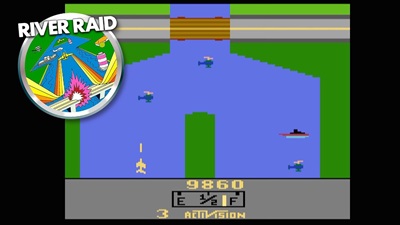
River Raid
River Raid for the Atari 2600, released in 1982 by Activision and designed by Carol Shaw, is often hailed as one of the console’s greatest technical and gameplay achievements. Players pilot a fighter jet down a twisting river filled with bridges, fuel depots, enemy helicopters, and ships, all while carefully managing fuel and avoiding collisions. What made River Raid remarkable was its procedurally generated terrain — each playthrough featured a consistent yet endlessly engaging landscape without using much memory. The game balanced action and strategy perfectly, rewarding precision flying and quick reflexes. Its smooth scrolling, crisp visuals, and addictive gameplay made it a must-have title, and it remains a shining example of how creative programming could turn the Atari 2600’s limitations into thrilling gameplay depth.
ATARI
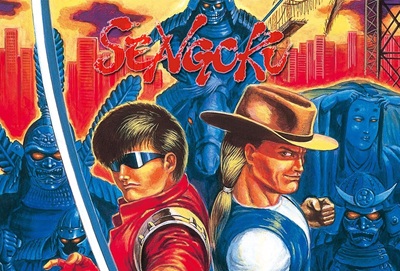
Sengoku
Sengoku for the Neo Geo is a side-scrolling beat ’em up that blends samurai legend with supernatural chaos in classic SNK fashion. Set in a modern city haunted by resurrected warlords from Japan’s feudal past, players battle through hordes of demons using swords, martial arts, and mystical transformations into spirit warriors, dogs, and ninja forms. Its eerie soundtrack, dark tone, and distinctive art style give it a unique identity among early Neo Geo titles. Known for its challenging gameplay and atmospheric design, Sengoku remains a memorable entry in SNK’s arcade legacy, paving the way for its acclaimed sequels.
NEOGEO
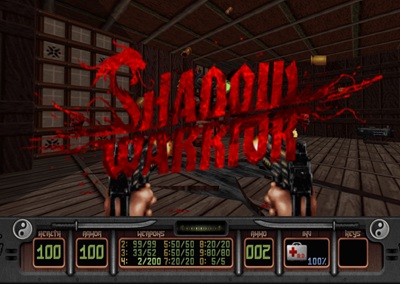
Shadow Warrior
Shadow Warrior is a fast-paced first-person shooter from 1997 that blends over-the-top action, martial-arts attitude, and classic Build-engine chaos into one unforgettable experience. Playing as Lo Wang, a wise-cracking assassin armed with katanas, shurikens, Uzis, shotguns, and explosive firepower, you slice and blast your way through Yakuza thugs, supernatural creatures, and bizarre sci-fi enemies across sprawling, highly interactive levels. Known for its humor, secret-packed maps, and surprisingly advanced game mechanics for its time, Shadow Warrior delivers that signature 90s FPS energy—loud, wild, irreverent, and endlessly fun.
DOS
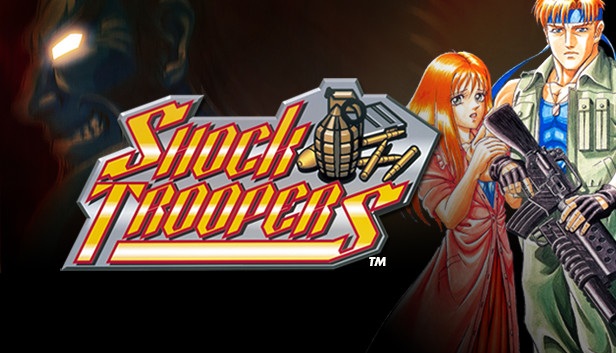
Shock Troopers
Shock Troopers for the Neo Geo is a top-down run-and-gun shooter that delivers relentless arcade action and pure adrenaline from start to finish. Players choose from a squad of elite commandos, each with unique abilities, to take on a terrorist organization threatening global security. The game stands out for its fast-paced gameplay, branching mission paths, and cooperative two-player mode that doubles the chaos and fun. With vibrant graphics, smooth controls, and explosive sound effects, Shock Troopers captures the essence of 90s arcade excitement, earning its reputation as one of SNK’s finest action titles on the Neo Geo platform.
NEOGEO
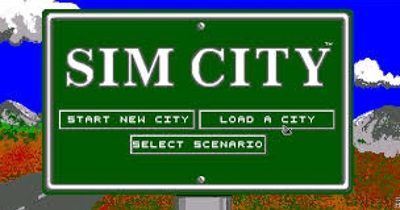
Sim City
SimCity for DOS is a pioneering city-building simulation that lets you step into the role of a mayor tasked with transforming an empty plot of land into a thriving metropolis. Released in the late 80s and adapted for DOS in the early 90s, the game blends strategy, creativity, and resource management as you zone residential, commercial, and industrial areas, build essential infrastructure, manage taxes, and respond to disasters like fires, floods, and monster attacks. Its minimalist graphics and simple interface may look retro today, but the depth of its simulation laid the foundation for an entire genre, giving players endless freedom to experiment with city layouts and watch their creations evolve, prosper, or crumble based on their decisions.
DOS
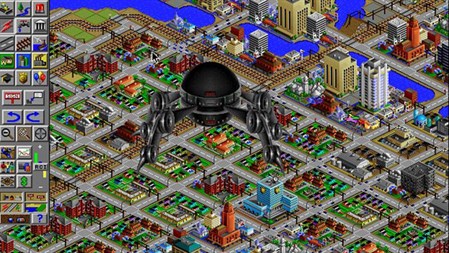
Sim City 2000
SimCity 2000 for DOS, released in 1993, was the highly ambitious sequel to the original SimCity and quickly became one of the most beloved city-building games of the ’90s. It expanded on the formula with isometric 3D-style graphics, giving players a more detailed view of their growing metropolis. The game introduced new systems like water pipes, subways, schools, libraries, and hospitals, making city management far more complex and realistic. Players could also terraform the land—raising hills, digging rivers, or flattening terrain—before laying out zones for residential, commercial, and industrial growth. Balancing budgets, taxes, and public services was key, while disasters such as earthquakes, floods, and alien invasions kept mayors on their toes. With its mix of strategy, creativity, and freedom, SimCity 2000 became a PC classic that defined the city-building genre and remains a nostalgic favorite for simulation fans.
DOS
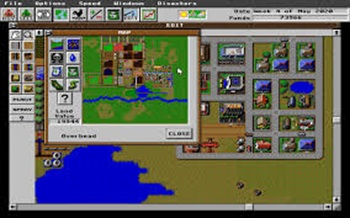
Sim Farm
SimFarm for DOS, released in 1993 by Maxis, was a farming simulation that let players build and manage their own agricultural empire. Acting as both farmer and business manager, you chose crops to plant, raised livestock, and dealt with the unpredictable forces of nature like droughts, floods, and locust swarms. The game required careful planning—rotating crops to maintain soil quality, investing in irrigation, and buying equipment like tractors or harvesters to keep the farm running smoothly. Beyond farming, you also had to manage finances, sell produce on the market, and even influence the growth of a nearby town that expanded based on your farm’s success. With its isometric graphics and open-ended gameplay, SimFarm offered a mix of education and entertainment, capturing the complexity of rural life in a way that was accessible to players of all ages. It became a cult favorite among fans of Maxis titles, standing alongside classics like SimCity and SimAnt.
DOS
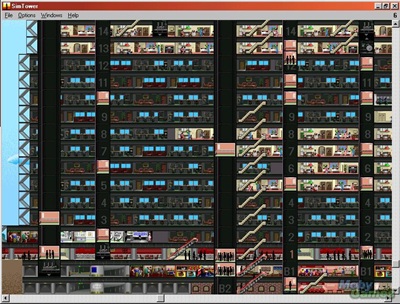
Sim Tower
SimTower is a classic real-time simulation game where you take on the role of a skyscraper developer, starting with a modest plot of land and gradually building upward into a bustling vertical city. From offices and hotel rooms to restaurants, apartments, and entertainment facilities, every floor you add brings new challenges in managing traffic flow, elevator efficiency, tenant satisfaction, and overall tower prestige. As your building grows, you'll balance construction costs, resident needs, and unexpected events while striving to earn the ultimate five-star status—all within a charming and surprisingly complex 2D environment that defined an era of simulation gaming.
WIN3.11

Skydiver
Skydiver on the Atari 2600 is a fast, timing-based action game that perfectly captures the tension of parachuting from a plane using just a joystick and a bit of nerve. You control a little skydiver who jumps out of a plane flying back and forth overhead, and your goal is to open your parachute at just the right time and land safely on a tiny moving landing pad below. Too early, and you drift away; too late, and you splat. The challenge ramps up as wind speed and plane height vary, forcing quick reactions and perfect timing. It’s one of those simple yet addictive Atari titles that test pure reflexes and nerve, with every jump feeling like a split-second gamble between glory and a crash landing.
ATARI
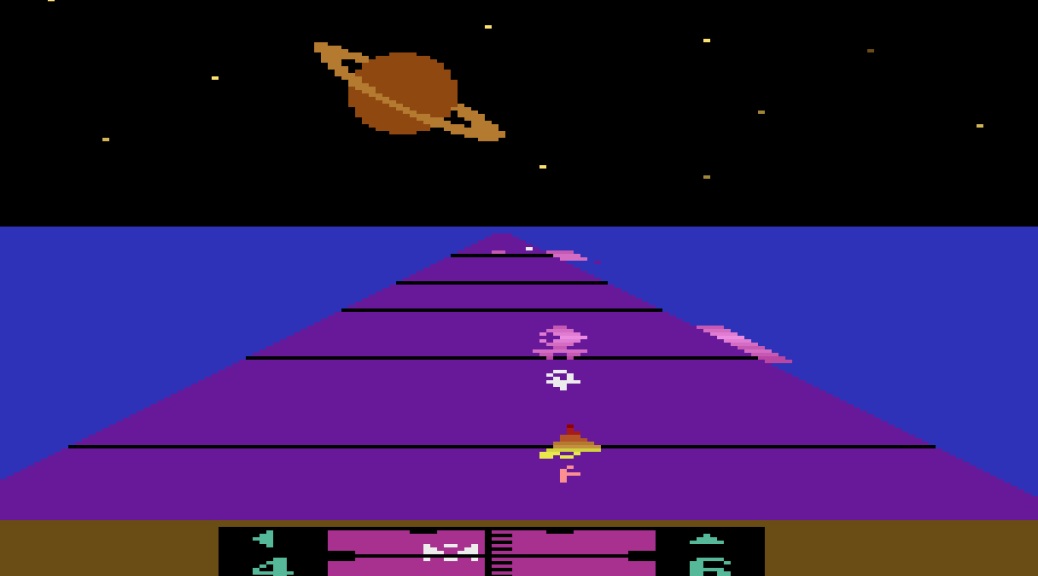
Solaris
Solaris for the Atari 2600, released in 1986, is one of the console’s most technically impressive and ambitious games. Designed by Doug Neubauer, the same developer behind Star Raiders, it pushes the aging hardware to its limits with smooth pseudo-3D space flight, detailed star maps, and fast-paced combat. Players pilot a starship through a sprawling galaxy, rescuing planets, engaging enemy fleets, and managing limited fuel across dozens of sectors. Despite the Atari 2600’s modest capabilities, Solaris delivers a surprisingly deep experience, blending strategy and reflex-driven action in what many fans consider one of the system’s finest late-era titles.
ATARI
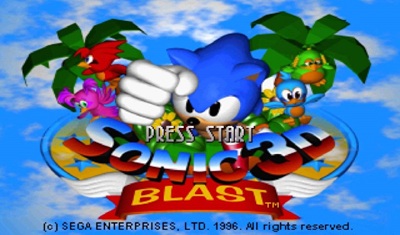
Sonic 3D Blast
Sonic 3D Blast for the Sega Genesis is a unique twist on the classic Sonic formula, shifting from the traditional side-scrolling platforming to an isometric 3D-style perspective. Developed by Traveller’s Tales, it features Sonic racing through vibrant, pseudo-3D environments to rescue Flickies—tiny birds trapped inside robotic enemies by Dr. Robotnik. While the gameplay emphasizes exploration and collecting Flickies rather than pure speed, the game stands out for its impressive graphics and smooth animation that pushed the Genesis hardware to its limits. Though divisive among fans, it remains a memorable experiment in bringing Sonic into a new dimension.
SegaMD
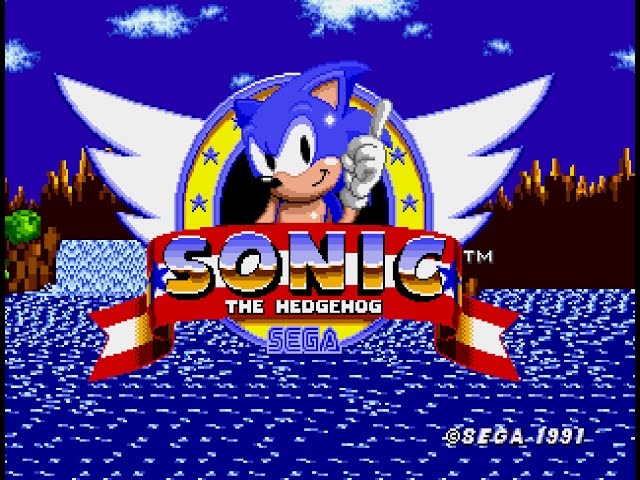
Sonic The Hedgehog 1
Sonic the Hedgehog, released for the Sega Mega Drive in 1991, was the game that introduced the world to Sega’s blue blur and cemented him as the company’s mascot. Designed to showcase the speed and power of the Mega Drive, it featured fast-paced platforming across colorful zones like Green Hill, Marble, and Starlight, each filled with loops, springs, and enemies created by the evil Dr. Robotnik. Sonic’s ability to curl into a ball and attack while zipping through levels gave the game a thrilling sense of momentum that set it apart from slower-paced platformers of the time. Its catchy soundtrack, vibrant graphics, and smooth gameplay wowed players and critics alike, helping Sega compete directly with Nintendo’s Mario. Beyond just a hit game, Sonic the Hedgehog became a cultural icon and kicked off one of the most successful franchises in gaming history.
SegaMD
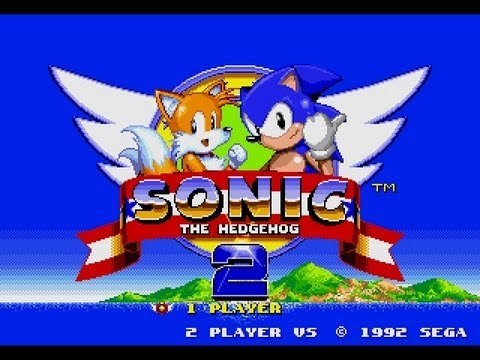
Sonic The Hedgehog 2
Sonic the Hedgehog 2, released on the Sega Mega Drive in 1992, took everything fans loved about the original and turned it up a notch, quickly becoming one of the best-selling titles on the system. It introduced Sonic’s trusty sidekick, Miles “Tails” Prower, who could join in for cooperative two-player action or be controlled by the AI, adding a fresh dynamic to the gameplay. Levels were bigger, faster, and more varied, with iconic zones like Chemical Plant, Casino Night, and Emerald Hill showcasing Sega’s knack for vibrant design and catchy music. The game also introduced the legendary Spin Dash move, letting Sonic blast off from a standstill and making the action even more fluid. Culminating in a thrilling showdown with Dr. Robotnik’s massive Death Egg Robot, Sonic 2 refined the formula into near perfection and solidified the franchise’s place as Nintendo’s fiercest rival in the 16-bit era.
SegaMD
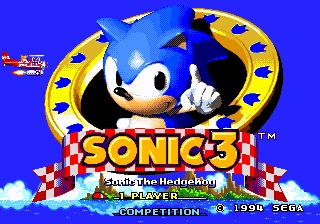
Sonic The Hedgehog 3
Sonic the Hedgehog 2, released on the Sega Mega Drive in 1992, took everything fans loved about the original and turned it up a notch, quickly becoming one of the best-selling titles on the system. It introduced Sonic’s trusty sidekick, Miles “Tails” Prower, who could join in for cooperative two-player action or be controlled by the AI, adding a fresh dynamic to the gameplay. Levels were bigger, faster, and more varied, with iconic zones like Chemical Plant, Casino Night, and Emerald Hill showcasing Sega’s knack for vibrant design and catchy music. The game also introduced the legendary Spin Dash move, letting Sonic blast off from a standstill and making the action even more fluid. Culminating in a thrilling showdown with Dr. Robotnik’s massive Death Egg Robot, Sonic 2 refined the formula into near perfection and solidified the franchise’s place as Nintendo’s fiercest rival in the 16-bit era.
SegaMD
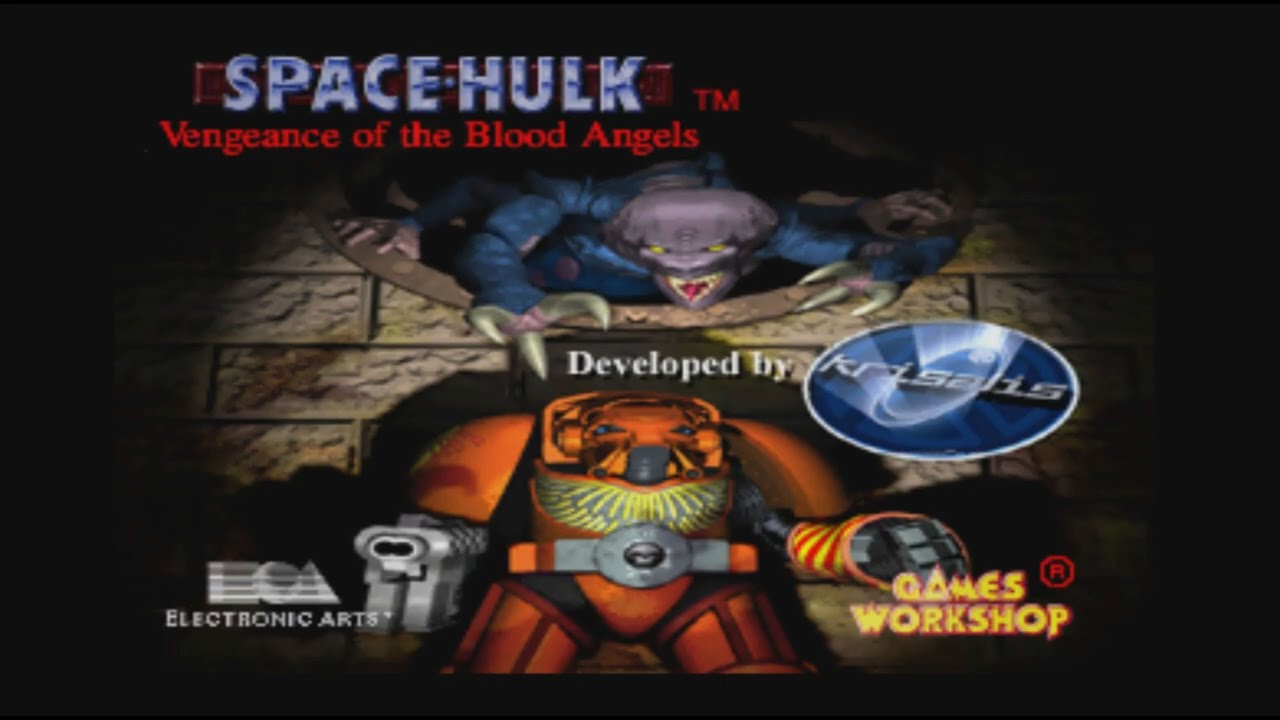
Space Hulk
Space Hulk: Vengeance of the Blood Angels for the PlayStation (PSX), released in 1996, is a first-person tactical shooter based on Games Workshop’s Warhammer 40,000 universe. The game puts players in command of a squad of Space Marine Terminators tasked with boarding derelict space hulks infested with vicious Genestealers. Gameplay blends real-time shooting with strategic squad management—you can issue commands to your team while also directly controlling a Marine in combat. The claustrophobic corridors, eerie atmosphere, and sudden Genestealer ambushes create a tense survival-horror feel, making it stand out from other PSX shooters. Though its controls and graphics were considered clunky compared to more mainstream titles, it remains a cult classic among fans of Warhammer 40K and tactical shooters.
PSX
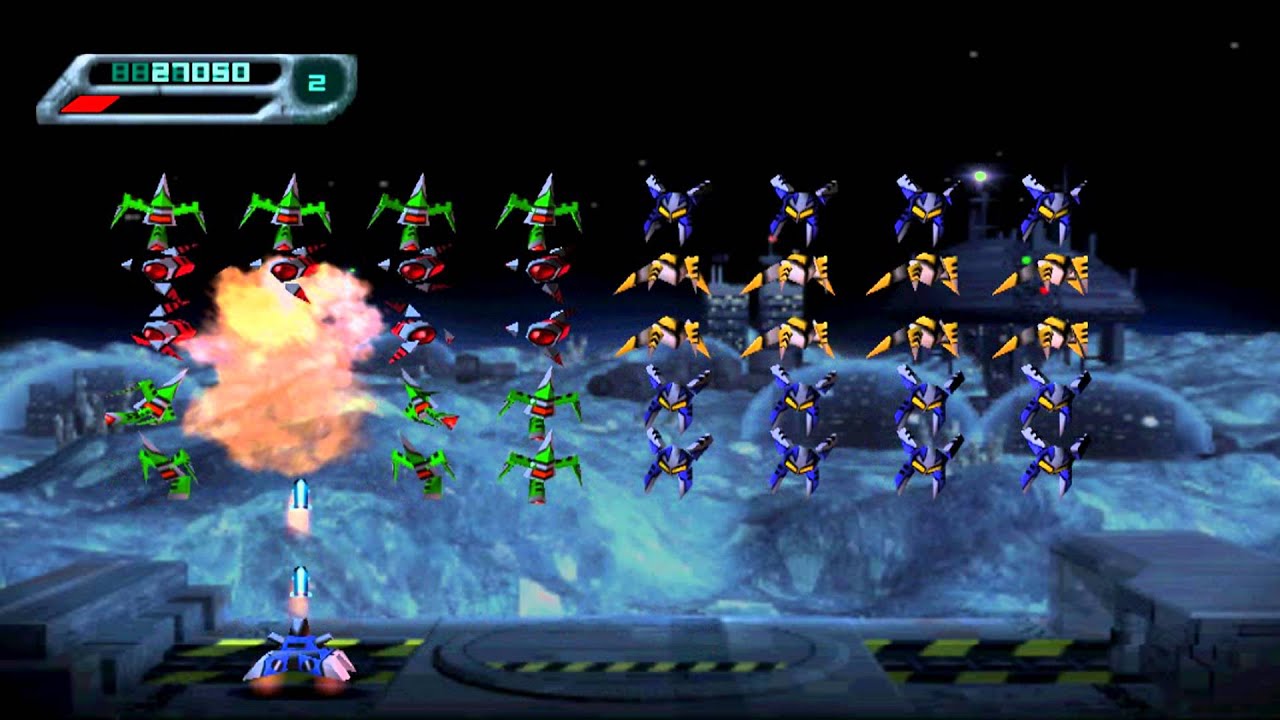
Space Invaders
Space Invaders on the PlayStation (PSX), released in 1999, is a modern reimagining of the legendary 1978 arcade shooter. Developed by Taito and Activision, it keeps the core concept of defending Earth from descending waves of alien invaders but upgrades the formula with full 3D graphics, animated backdrops, and new power-ups. Players blast through stages set across different planets and space environments, each introducing unique enemy formations and boss battles that expand the original’s simple wave-based design. The game includes both a revamped single-player campaign and a two-player cooperative mode, making it more dynamic and replayable. While some purists felt it strayed too far from the minimalistic charm of the original, the PSX version gave the franchise a flashy arcade facelift for a late-90s audience hungry for retro revivals.
PSX
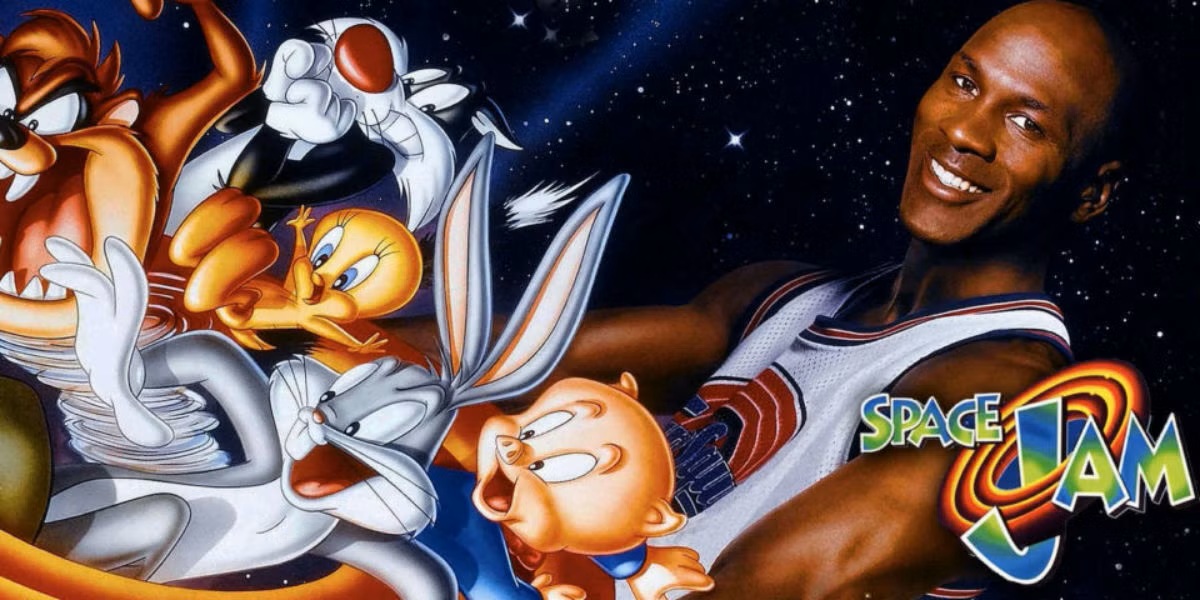
Space Jam
Space Jam for the PlayStation (PSX), released in 1996 alongside the Michael Jordan and Looney Tunes movie, is a basketball game that mixes arcade-style sports with cartoon antics. The core gameplay is a 2-on-2 basketball match where players can take control of Jordan and various Looney Tunes characters like Bugs Bunny, Daffy Duck, or Lola Bunny as they face off against the Monstars. It features exaggerated dunks, slapstick animations, and power-ups that give it a lighthearted, party-game vibe rather than aiming for realistic basketball. In addition to the main matches, the game also includes several mini-games inspired by scenes from the film, such as helping Bugs retrieve his shorts or shooting free throws under pressure. While not as polished as other PSX sports titles, Space Jam holds nostalgic value for fans of the movie and 90s arcade-style sports games.
PSX
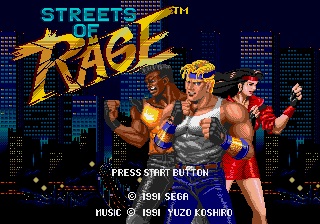
Streets of Rage 1
Streets of Rage, released for the Sega Mega Drive in 1991, is a side-scrolling beat ’em up that became one of Sega’s most iconic franchises. Players take control of ex-police officers Axel, Blaze, and Adam as they battle through crime-ridden streets to take down the sinister crime syndicate led by the mysterious Mr. X. The game is remembered for its gritty urban atmosphere, fluid combat, and cooperative two-player mode that made brawling through hordes of thugs even more fun. Each character had their own strengths—Axel’s balanced style, Blaze’s agility, and Adam’s power—and players could call in a police car special attack that unleashed a screen-clearing rocket barrage. With its memorable Yuzo Koshiro soundtrack mixing electronic, house, and dance beats, Streets of Rage not only captured the style of the early ’90s but also set the stage for one of the most beloved beat ’em up trilogies in gaming history.
SegaMD
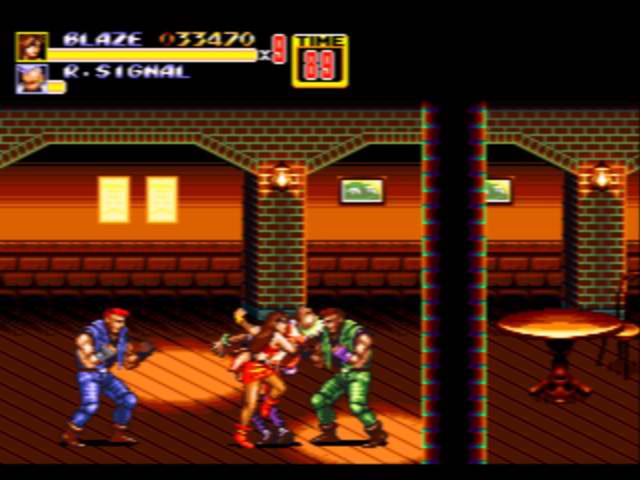
Streets of Rage 2
Streets of Rage 2, released for the Sega Mega Drive in 1992, is widely regarded as one of the greatest beat ’em ups of all time. Building on the foundation of the first game, it expanded the roster with returning heroes Axel and Blaze, joined by the powerhouse wrestler Max and Adam’s younger brother, Skate, who brought speed and agility to the fight. The game featured bigger sprites, smoother animations, and more complex movesets, giving each character a distinct fighting style that kept gameplay fresh. Its stages ranged from neon-lit city streets to arcades, bars, and even a moving elevator battle, all packed with tough enemies and memorable bosses. The special police call from the first game was replaced by powerful character-specific attacks, making combat more personal and satisfying. Combined with Yuzo Koshiro’s legendary electronic/techno soundtrack, Streets of Rage 2 became an instant classic and remains a benchmark for the genre.
SegaMD
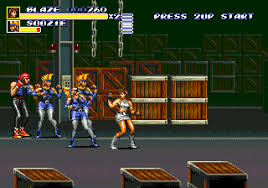
Streets of Rage 3
Streets of Rage 3, released for the Sega Mega Drive in 1994, pushed the series into darker territory with a grittier story, faster gameplay, and more advanced mechanics. Axel and Blaze returned, joined by Dr. Zan, a cyborg with electric-powered attacks, while Skate reprised his role as the speedy fighter. The game introduced a running ability, dodge rolls, and the ability to perform stronger special moves without draining health when executed perfectly, adding depth to the combat. Stages included branching paths and multiple endings, giving players more replay value than ever before. However, the Western release was heavily altered from the Japanese version (Bare Knuckle III), with higher difficulty, censored content, and story changes that sparked mixed reactions. Despite that, Streets of Rage 3 is still remembered for its ambitious design, intense challenge, and another stellar Yuzo Koshiro soundtrack, keeping it a cult favorite among fans of the series.
SegaMD

Stonekeep
Stonekeep is a classic first-person dungeon-crawling RPG released by Interplay in 1995, famous for blending pre-rendered 3D environments, digitized actors, and live-action cinematic cutscenes at a time when such production value was rare. You play as Drake, the lone survivor of the destruction of the fortress Stonekeep, who embarks on a quest guided by the goddess Thera to free imprisoned deities and defeat the evil god Khull-Khuum. Unlike many RPGs of its era, the game featured real-time combat on a grid-based system, an innovative rune-based magick system where players combined symbols to create spells, and a strong narrative atmosphere. While development was notoriously long and costly, Stonekeep remains a nostalgic favorite for many players thanks to its ambitious design, unique mechanics, and the immersive sense of exploration it brought to mid-’90s PC gaming.
DOS
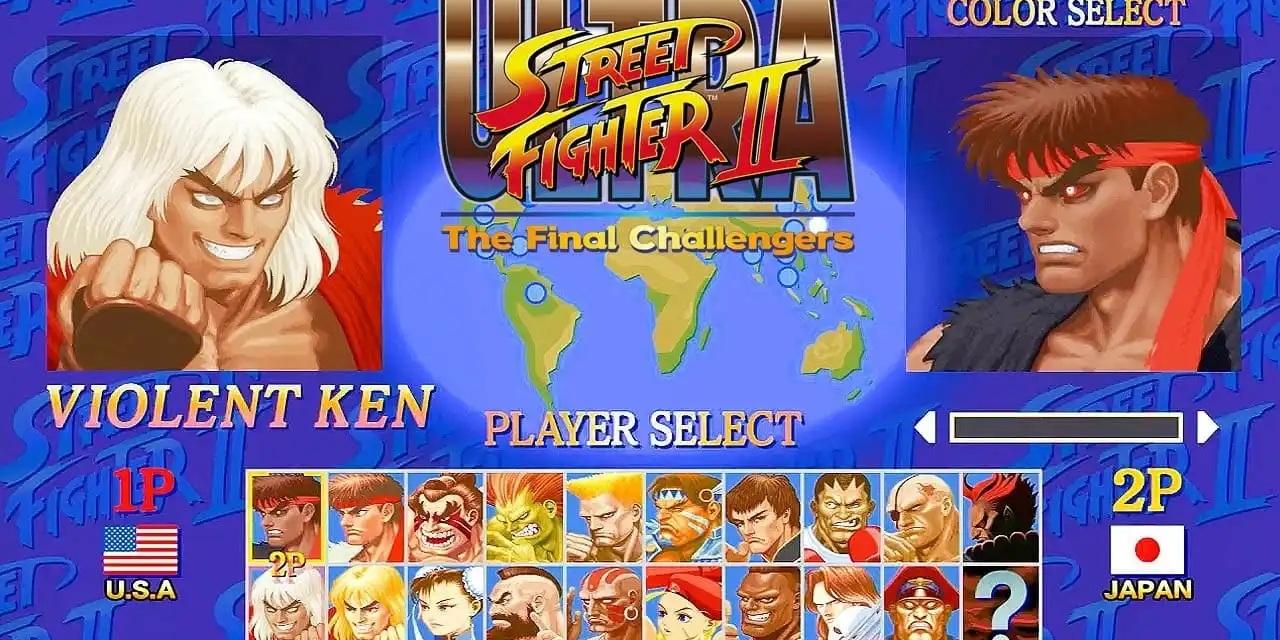
Street Fighter 2
Step into the arena of world warriors—Street Fighter II, one of the most legendary fighting games of all time, is now fully playable in your web browser! Thanks to modern web technology, this Super Nintendo Entertainment System (SNES) classic has been ported using EmulatorJS, allowing players to experience iconic battles, special moves, and intense one-on-one combat without needing an emulator or special setup. Whether you're playing on desktop, mobile, or tablet, you can now unleash Hadoukens and Shoryukens anytime, anywhere, with touchscreen support for mobile users.
SNES
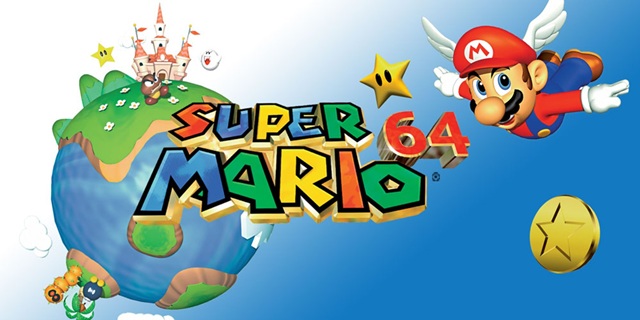
Super Mario 64
Super Mario 64 for the Nintendo 64 redefined what a 3D platformer could be when it launched in 1996. As Mario’s first fully 3D adventure, it gave players an open-world playground inside Princess Peach’s castle, where each painting led to a different level packed with stars to collect, secrets to uncover, and creative challenges to master. The game introduced fluid analog controls, a dynamic camera system, and moves like triple jumps, wall kicks, and long jumps that gave Mario unmatched freedom of movement for its time. Beyond its technical achievements, Super Mario 64 set the gold standard for 3D game design, inspiring countless titles that followed and remaining one of the most beloved and influential games ever made.
N64
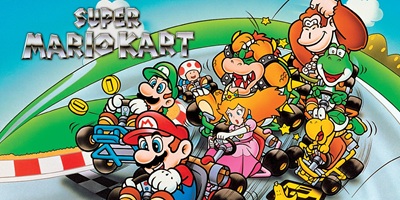
Super Mario Kart
Super Mario Kart, released in 1992 for the Super Nintendo Entertainment System, was the game that launched one of Nintendo’s most successful and enduring franchises. It introduced players to a new kind of racing experience—combining fast-paced kart driving with chaotic power-ups and iconic characters from the Mario universe. Featuring eight racers including Mario, Luigi, Peach, Bowser, and Yoshi, the game offered 20 unique tracks across colorful themed cups, from the grassy curves of Mario Circuit to the fiery chaos of Bowser Castle. Its innovative Mode 7 graphics gave the illusion of 3D movement, creating a smooth and immersive racing experience for its time. The real magic, however, came from the multiplayer Battle Mode, where players dueled with shells and bananas in balloon-popping mayhem. With its catchy soundtrack, tight controls, and perfect blend of fun and frustration, Super Mario Kart became a timeless classic and the blueprint for all kart racers that followed.
SNES
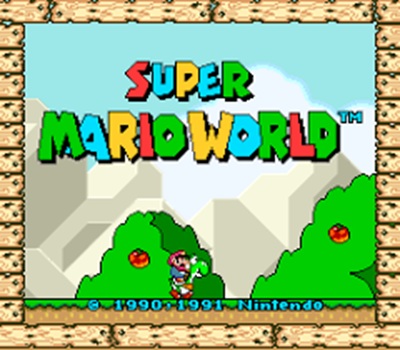
Super Mario World 1
Jump into the colorful and adventure-filled world of Super Mario—Super Mario World, one of the most beloved platformers of all time, is now fully playable in your web browser! Thanks to modern web technology, this Super Nintendo Entertainment System (SNES) classic has been ported using EmulatorJS, allowing players to experience smooth platforming, exciting power-ups, and Yoshi-riding action without needing an emulator or special setup. Whether you're playing on desktop, mobile, or tablet, you can now explore Dinosaur Land and save Princess Peach anytime, anywhere, with touchscreen support for mobile users.
SNES
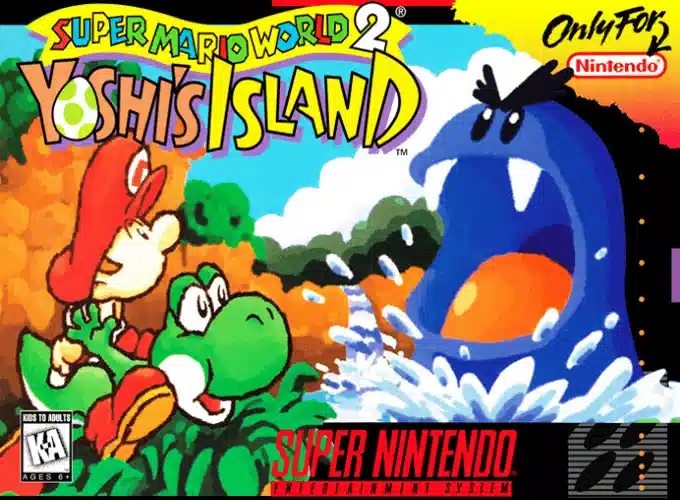
Super Mario World 2
Super Mario World 2: Yoshi’s Island, released for the Super Nintendo Entertainment System in 1995, was a charming and innovative prequel to Super Mario World. Instead of playing as Mario, players controlled Yoshi, who carried Baby Mario on his back through beautifully hand-drawn, pastel-colored levels. The game introduced new mechanics like Yoshi’s flutter jump, egg throwing, and enemy-eating abilities, giving the platforming a fresh and creative feel. Its unique art style, powered by the Super FX2 chip, made it one of the most visually striking SNES games ever, blending childlike whimsy with advanced graphical effects. Each level was filled with secrets, collectibles, and clever puzzles that rewarded exploration and skill. With its joyful music, tight controls, and inventive boss battles, Yoshi’s Island not only stood out as a masterpiece of 16-bit game design but also became one of the most beloved and timeless entries in the Mario universe.
SNES
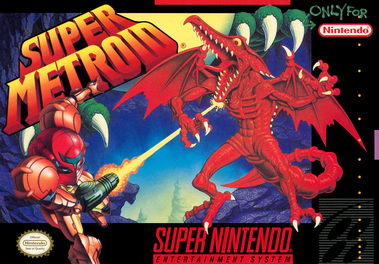
Super Metroid
Super Metroid for the Super Nintendo Entertainment System (SNES) is often hailed as one of the greatest 16-bit games ever created, blending atmospheric exploration, tight controls, and cinematic storytelling into a masterpiece of game design. Released in 1994, the game follows bounty hunter Samus Aran as she journeys to the planet Zebes to rescue a stolen baby Metroid from the Space Pirates. Its massive, interconnected world encourages non-linear exploration, with upgrades like the Morph Ball, Grapple Beam, and Space Jump unlocking new areas and hidden secrets. Combined with haunting music, moody visuals, and a near-perfect balance of action and discovery, Super Metroid defined the “Metroidvania” genre and set the gold standard for atmospheric adventure games that followed.
SNES
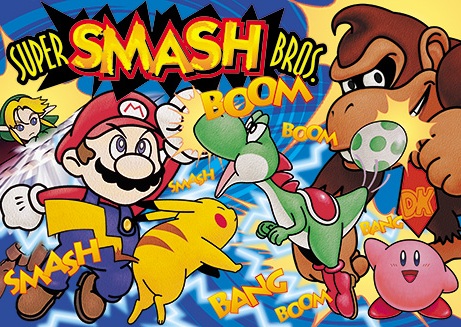
Super Smash Bros
Super Smash Bros. is a crossover fighting game series developed by Nintendo that brings together characters from across its most iconic franchises, as well as guest fighters from other popular game series. Unlike traditional fighting games, it features a unique gameplay style where players try to knock opponents off the stage rather than deplete a health bar, creating fast-paced and chaotic battles. The series debuted on the Nintendo 64 in 1999 and has since grown into one of Nintendo’s most successful franchises, with each new installment introducing larger rosters, more stages, and deeper competitive mechanics. Known for its accessibility to casual players and depth for competitive play, Super Smash Bros. has become both a party favorite and a mainstay in esports tournaments worldwide.
N64
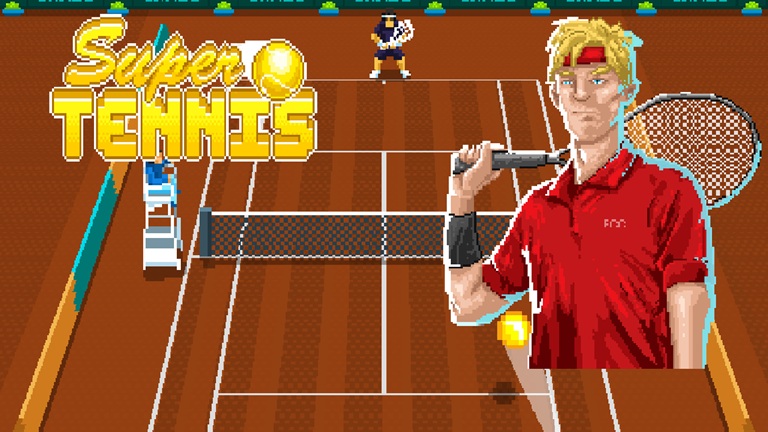
Super Tennis
Step onto the tennis court and relive one of the greatest sports games of the 16-bit era—Super Tennis is now fully playable in your web browser! Thanks to modern web technology, this Super Nintendo Entertainment System (SNES) classic has been ported to a web-based format, allowing players to experience its fast-paced gameplay, realistic ball physics, and exciting tournaments without needing an emulator or special setup. Whether you're playing on desktop, mobile, or tablet, you can now serve, volley, and smash your way to victory with just a click!
SNES
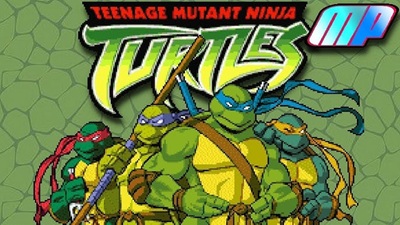
Teenage Mutant Ninja Turtles
Teenage Mutant Ninja Turtles for the Game Boy Advance is a fast-paced action-platformer based on the 2003 animated series, letting you take control of Leonardo, Raphael, Donatello, and Michelangelo as they battle their way through Foot Clan soldiers, mutant enemies, and iconic villains like Shredder. Each turtle features unique weapons and fighting styles, giving every stage a slightly different feel. With its comic-style cutscenes, tight side-scrolling combat, and faithful adaptation of the show’s tone and characters, the game delivers a fun, energetic TMNT adventure perfectly suited for handheld play.
GBA
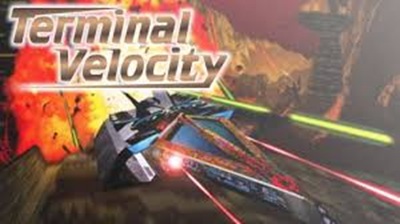
Terminal Velocity
Terminal Velocity for DOS is a high-speed, arcade-style sci-fi shooter where you pilot a heavily armed fighter craft through massive open environments filled with enemy ships, ground defenses, and hidden tunnels. Known for its smooth, fast engine and free-roaming levels, the game lets you fly in any direction—dive, roll, strafe, and blast targets across sprawling planets while dodging incoming fire. With its explosive weapons, energetic pacing, and signature 360-degree movement, Terminal Velocity delivers a pure, adrenaline-fueled 90s PC action experience that still stands out as one of the era’s most exhilarating combat flight games.
DOS
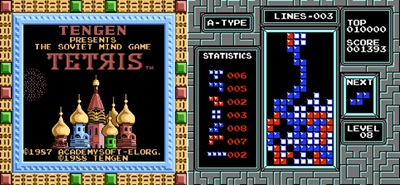
Tetris 1
Tetris for the Nintendo Entertainment System (NES), released in 1989, is one of the most iconic puzzle games ever made and helped solidify the NES as a must-own console. Based on Alexey Pajitnov’s original Soviet computer game, the NES version delivered simple but addictive gameplay: rotate and drop falling tetrominoes to clear horizontal lines and prevent the screen from filling up. Its easy-to-learn yet hard-to-master design made it endlessly replayable, appealing to both casual and hardcore gamers. The NES release also featured a memorable, catchy soundtrack and became especially famous for its competitive two-player mode in later versions. While multiple versions of Tetris existed at the time, the NES port became one of the most popular and enduring, cementing the game’s place in gaming history as the ultimate test of reflexes, planning, and endurance.
NES
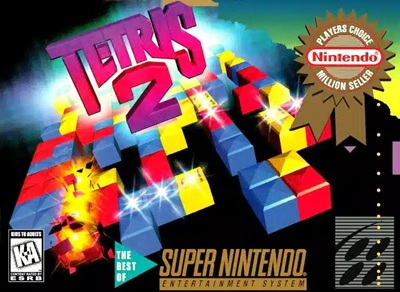
Tetris 2
Tetris 2 for the Super Nintendo Entertainment System, released in 1993, took the legendary puzzle formula of the original Tetris and added new twists to shake up the gameplay. Instead of focusing purely on clearing lines, the game introduced color-matching mechanics, where players had to align falling pieces with color-coded blocks already on the board to make them disappear. This gave the experience more of a puzzle-like, strategic feel compared to the pure reflex challenge of the original. The game offered multiple modes, including standard puzzle play, competitive two-player battles, and a story-driven puzzle mode with set challenges. While some fans missed the straightforward elegance of the first Tetris, Tetris 2 found its audience with those looking for a fresh take on the classic, combining the familiar block-dropping action with more complex problem-solving elements.
SNES
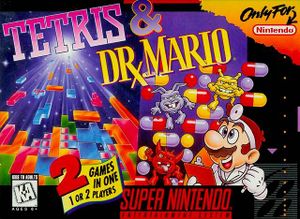
Tetris & Dr Mario
Tetris & Dr. Mario for the Super Nintendo Entertainment System (SNES) is a classic puzzle game compilation that combines two of Nintendo’s most iconic titles into one cartridge. Released in 1994, it features the timeless block-stacking challenge of Tetris alongside the color-matching, capsule-dropping fun of Dr. Mario. Players can enjoy each game separately or engage in the unique “Mixed Match” mode, which alternates between rounds of Tetris and Dr. Mario for added intensity. With vibrant 16-bit visuals, catchy remixed music, and multiplayer options that heighten the competition, this SNES combo delivers endless replay value and showcases Nintendo’s mastery in crafting simple yet addictive puzzle experiences.
SNES
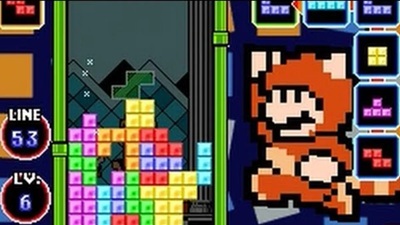
Tetris DS
Tetris DS, released for the Nintendo DS in 2006, was a brilliant and nostalgic reimagining of the classic puzzle game, infused with Nintendo’s signature charm. Developed by Nintendo and The Tetris Company, it featured the same addictive block-stacking gameplay but wrapped it in themes and visuals inspired by iconic Nintendo franchises like Super Mario Bros., The Legend of Zelda, Metroid, and Donkey Kong. Each mode brought unique twists—such as Touch Mode, where players used the stylus to move pieces, and Mission Mode, which added objectives beyond just clearing lines. The game also offered robust local and online multiplayer via Nintendo Wi-Fi Connection, allowing up to ten players to compete at once. With its slick presentation, energetic remixes of classic Nintendo tunes, and endless replayability, Tetris DS became one of the most beloved puzzle games on the handheld, perfectly blending timeless gameplay with Nintendo nostalgia.
NDS
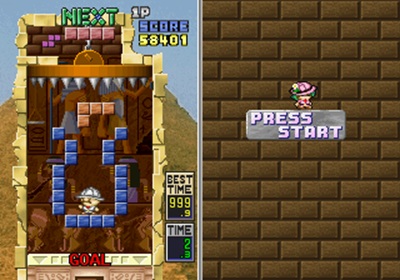
Tetris Plus
Tetris Plus for Neo Geo takes the timeless block-stacking formula of the original Tetris and gives it a creative twist with puzzle-solving adventure elements. The game features two main modes—Classic and Puzzle. In Classic mode, players enjoy traditional Tetris gameplay with smooth controls and colorful graphics, while Puzzle mode introduces a new challenge: guiding an explorer safely to the bottom by clearing blocks strategically before a deadly trap catches him. The result is a mix of skill, timing, and strategy that keeps the experience fresh. With its charming characters, upbeat music, and addictive replayability, Tetris Plus stands out as one of the most imaginative and fun puzzle games on the Neo Geo.
NEOGEO
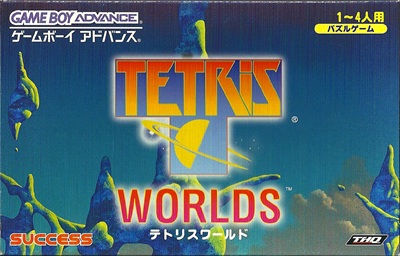
Tetris Worlds
Tetris Worlds for the Game Boy Advance reimagines the classic block-stacking formula with colorful visuals, upbeat music, and multiple gameplay variations that expand on traditional Tetris rules. Featuring modes like Square Tetris, Cascade, and Sticky, the game introduces fresh mechanics that challenge players to think differently while still keeping the timeless goal of clearing lines. With its accessible controls, fast-paced action, and a progression system set across themed “worlds,” Tetris Worlds offers a modern, portable twist on one of gaming’s most iconic puzzle experiences.
GBA
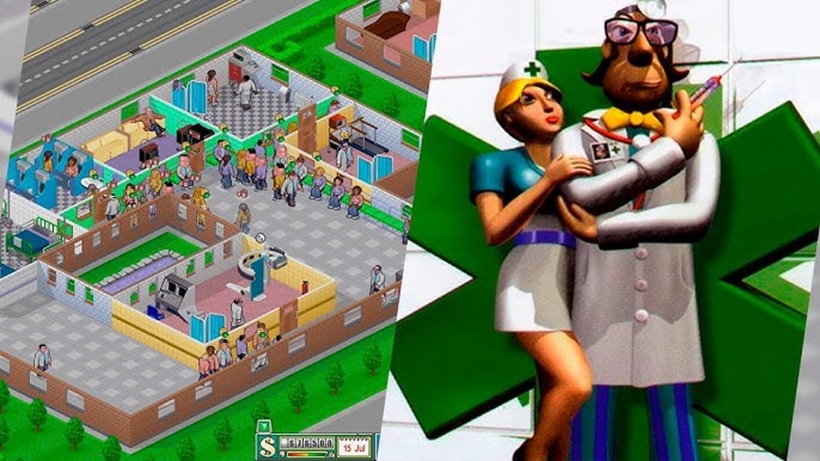
Theme Hospital
Theme Hospital, the classic hospital management simulation from 1997, is now playable directly in your web browser, thanks to DOS-JS. This desktop-only version allows players to build, manage, and operate a fully functioning hospital, treating hilarious and bizarre illnesses like Bloaty Head Syndrome and Slack Tongue while balancing staff management, finances, and patient satisfaction. With save/load functionality, detailed strategy mechanics, and a signature blend of humor and challenge, this web-based port provides the ultimate way to experience Theme Hospital without needing downloads or emulators.
DOS
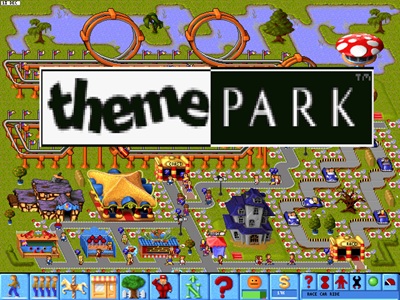
Theme Park
Theme Park (DOS) is a classic 1994 management simulation game by Bullfrog Productions where you build, customize, and run your very own amusement park from the ground up. You’re in charge of everything: designing rides, placing shops, hiring staff, setting ticket prices, balancing customer happiness, and keeping the park profitable. The charm comes from its quirky animations, humorous visitor reactions, and the surprisingly deep economic system that lets you tinker with research, global expansion, and fine-tuning every ride’s performance. With its blend of strategy, creativity, and comedic chaos, Theme Park remains one of the most iconic management sims of the DOS era.
DOS
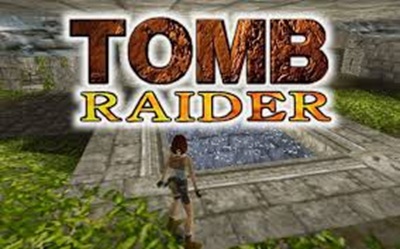
Tomb Raider 1
Tomb Raider, released for the PlayStation in 1996, redefined 3D adventure gaming and introduced one of the most iconic characters in video game history—Lara Croft. Players explored vast ancient tombs, temples, and lost cities filled with traps, puzzles, and wild animals, blending action, platforming, and exploration in a way few games had before. Its 3D environments were groundbreaking for the time, offering a true sense of depth and freedom as players guided Lara through perilous jumps, underwater passages, and secret-filled ruins. Armed with her signature dual pistols and athletic agility, Lara became a symbol of confidence and independence in gaming culture. With its atmospheric soundtrack, clever level design, and cinematic presentation, Tomb Raider set the gold standard for adventure games and laid the foundation for one of the most enduring franchises in gaming history.
PSX
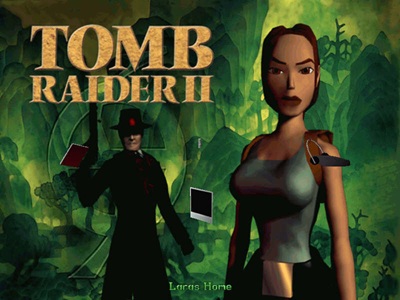
Tomb Raider 2
Tomb Raider II, released for the PlayStation in 1997, built upon the success of the original with larger environments, smoother controls, and even more ambitious level design. Once again starring Lara Croft, the adventure took players across the globe—from the Great Wall of China and Venetian canals to sunken shipwrecks and Himalayan monasteries—in search of the mystical Dagger of Xian. The sequel expanded Lara’s arsenal with new weapons like the grenade launcher and harpoon gun, and added vehicles such as boats and snowmobiles for more dynamic gameplay. Its mix of intricate puzzles, acrobatic platforming, and intense combat offered a challenging but rewarding experience. With improved graphics, better lighting effects, and a stronger sense of cinematic adventure, Tomb Raider II cemented Lara Croft’s status as a gaming icon and remains one of the most beloved entries in the franchise’s classic era.
PSX
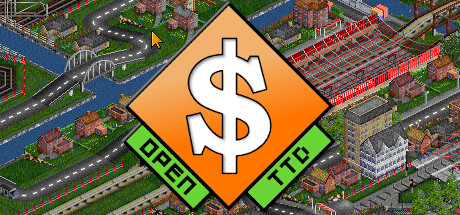
Transport Tycoon Deluxe
OpenTTD on the web is a browser-based version of the classic Transport Tycoon Deluxe, letting players build and manage sprawling transport networks without needing downloads or installations. It faithfully recreates the original strategy gameplay, where you design railways, roads, airports, and shipping routes to grow cities and generate profit, but with the added convenience of modern web technologies like WebAssembly. This means you can jump straight into managing trains, buses, and planes directly from your browser, making it an accessible way to relive the nostalgia of Transport Tycoon anywhere, anytime.
HTML5
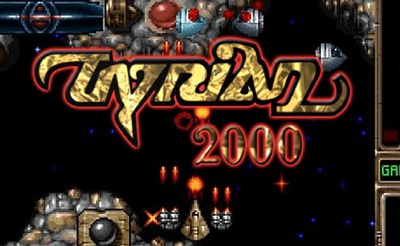
Tyrian 2000
Tyrian 2000 is a fast-paced vertical-scrolling DOS shoot ’em up originally released in the late 90s and later reissued as a freeware enhanced edition. Set in a colorful sci-fi universe, the game follows ace pilot Trent Hawkins as he battles corrupt megacorporations, alien threats, and an ever-expanding conspiracy across multiple star systems. What makes Tyrian 2000 stand out is its deep customization system, letting players upgrade ships, weapons, shields, and special devices to create wild, overpowered builds. Combined with its energetic soundtrack, hidden modes, rich lore, and arcade-style action, it remains one of the most beloved classic PC shooters—even today.
DOS

Trolls
Troll is a 1992 action-platformer game developed by Capstone Software. It was released for MS-DOS and featured a whimsical, fantasy-themed world. Players control a small, mischievous troll who must navigate various colorful levels, collecting items, avoiding hazards, and defeating enemies. The game had a charming yet simplistic design, with side-scrolling platform mechanics and puzzles that required quick reflexes. Though not as well-known as other platformers of its time, Troll had a quirky appeal and is remembered by retro gaming enthusiasts.
DOS
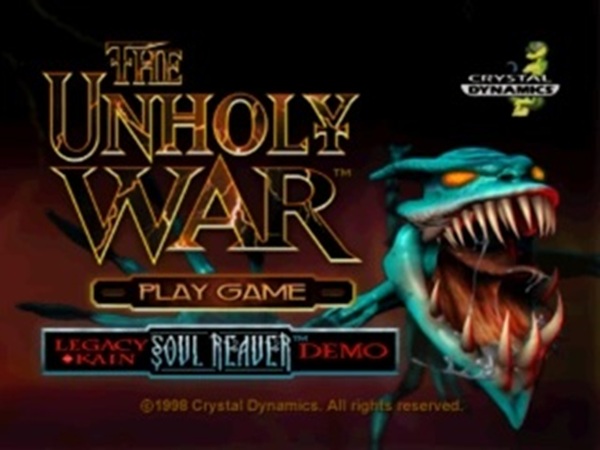
Unholy War
The Unholy War for PlayStation is a fast-paced 3D strategy and fighting hybrid developed by Toys for Bob and released in 1998. The game combines two modes: Mayhem, where players battle in real-time one-on-one combat using a variety of unique alien warriors, each with distinct abilities and playstyles; and Strategy, which adds a board-game-like layer where players maneuver units across a map to control territory and resources before clashing in combat. Its mix of tactical planning and intense action gave it a unique identity among late-90s PSX titles, earning a cult following for its depth and replay value.
PSX
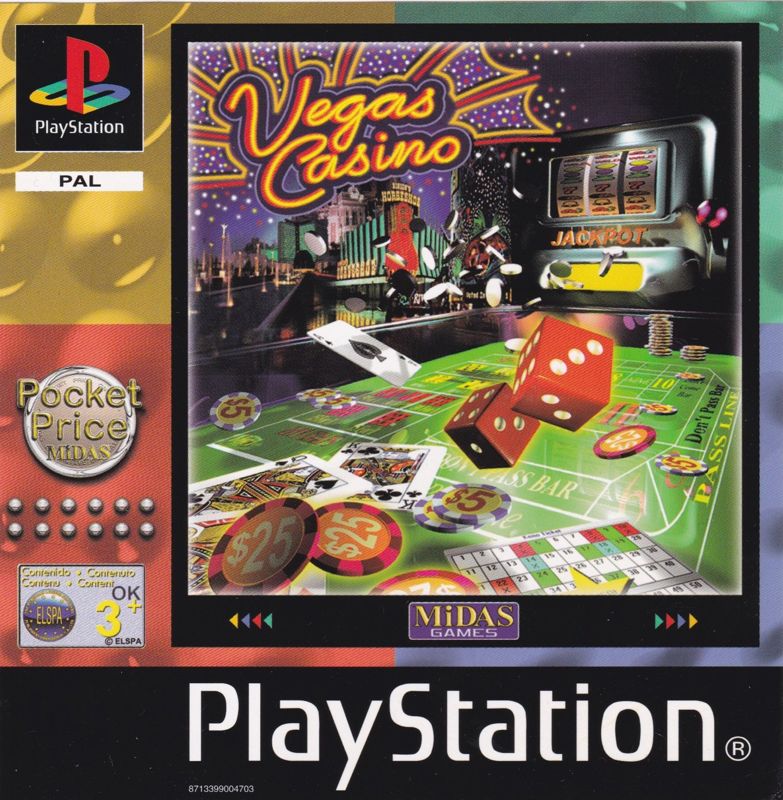
Vegas Casino
Vegas Casino on PlayStation is a gambling simulation game that recreates the atmosphere of Las Vegas casinos by offering a variety of popular games such as blackjack, poker, roulette, baccarat, and slot machines. Designed for casual play, it allows players to test their luck with realistic rules and simple controls, while capturing the neon-lit vibe of a Vegas floor. Although not as flashy as modern casino simulators, it served as an accessible way for PSX players to enjoy the thrill of casino gaming without real money on the line.
The game also includes tournament-style modes and challenges, giving players goals beyond just casual betting. By earning virtual winnings, players can unlock higher-stakes tables and more difficult opponents, which adds a sense of progression. While the graphics and presentation are relatively simple compared to other late-era PSX titles, Vegas Casino succeeded in offering a laid-back, pick-up-and-play experience that appealed to both gambling enthusiasts and players looking for a different type of game on their PlayStation library.
PSX
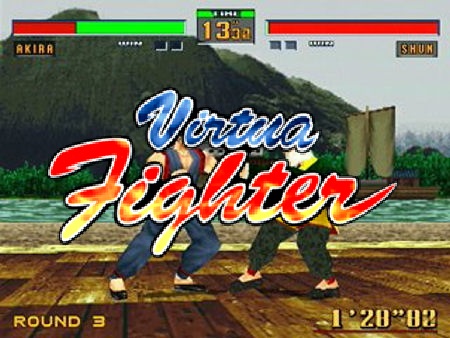
Virtua Fighter 1
Virtua Fighter for the Sega Saturn, released in 1995, was Sega’s groundbreaking 3D fighting game that helped define the genre’s future. Originally developed by AM2 under Yu Suzuki, it was the first fully polygonal fighter, introducing players to a realistic combat system focused on timing, movement, and precision rather than flashy special moves. Featuring a roster of eight distinct martial artists, each with authentic fighting styles, Virtua Fighter showcased the Saturn’s 3D capabilities and set a new standard for depth and realism in fighting games. Though its early Saturn port suffered from rough visuals and lower frame rates compared to the arcade version, its gameplay remained intact — and it became a cornerstone of Sega’s legacy, influencing nearly every 3D fighting game that followed.
SegaSaturn
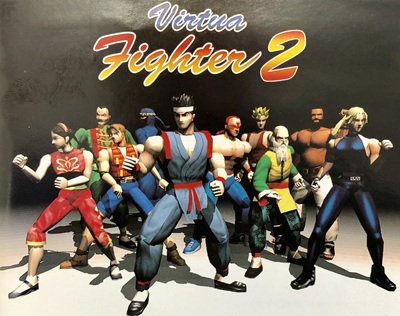
Virtua Fighter 2
Virtua Fighter 2 for the Sega Saturn, released in 1995, was a massive leap forward from the original, showcasing just how far Sega’s AM2 team could push the system’s 3D capabilities. Built on a new engine that doubled the frame rate to a silky-smooth 60 fps, it delivered stunningly fluid animation, crisp high-resolution visuals, and more refined character models that were a technical marvel for the time. The gameplay deepened with tighter controls, new moves, and improved balance, making each fighter feel distinct and responsive. With its fast-paced, strategic combat and near-perfect arcade fidelity, Virtua Fighter 2 became both a system-seller and a landmark title that proved the Saturn could deliver true 3D excellence despite the hardware’s complexities.
SegaSaturn
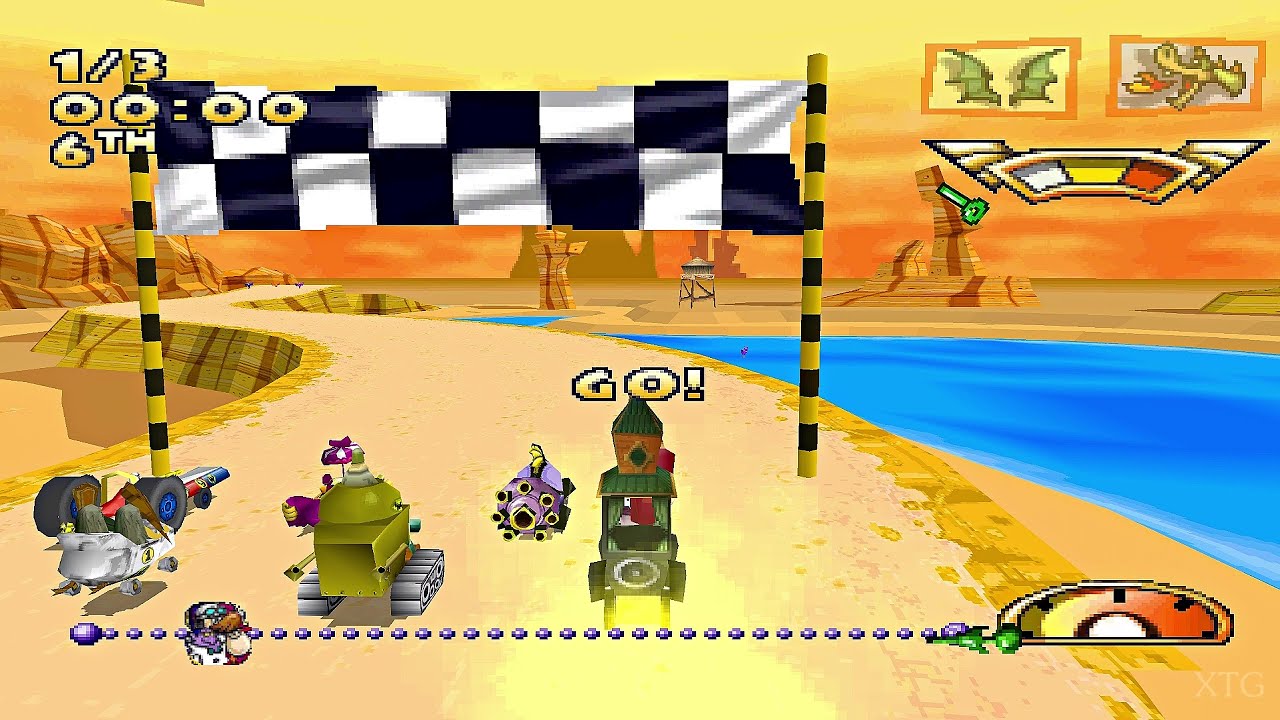
Wacky Races
Wacky Races for the PlayStation is a fun kart-racing game inspired by the classic Hanna-Barbera cartoon, letting players jump into the zany vehicles of characters like Dick Dastardly, Muttley, Penelope Pitstop, and the Slag Brothers. Much like Mario Kart, the game features colorful tracks, power-ups, and weapons that match each racer’s personality, adding plenty of chaos to the competition. With its cartoonish visuals, lighthearted tone, and nods to the original TV show, Wacky Races on PSX delivers a nostalgic and entertaining experience that blends racing with slapstick humor.
PSX
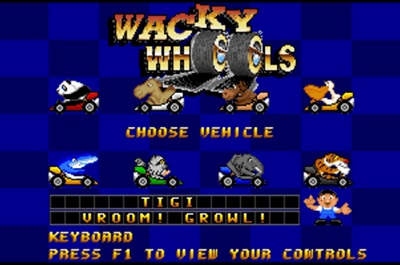
Wacky Wheels
Wacky Wheels for DOS, released in 1994 by Apogee Software, was a colorful kart-racing game often seen as the PC’s answer to Super Mario Kart. Instead of plumbers and turtles, players raced as zoo animals—like a tiger, panda, or elephant—each with quirky animations and personality. The gameplay featured tight, fast-paced racing across varied tracks, with power-ups and weapons like hedgehogs and bombs to slow down opponents. Modes included single races, tournaments, time trials, and even a fun battle mode where players could duel in arenas, making it great for head-to-head play via split-screen or modem/serial connection. Its bright graphics, upbeat soundtrack, and playful sense of humor made it a hit among DOS gamers. While it didn’t have the same fame as Nintendo’s offering, Wacky Wheels carved out its own cult following and remains fondly remembered as one of the best PC kart racers of the ’90s.
DOS
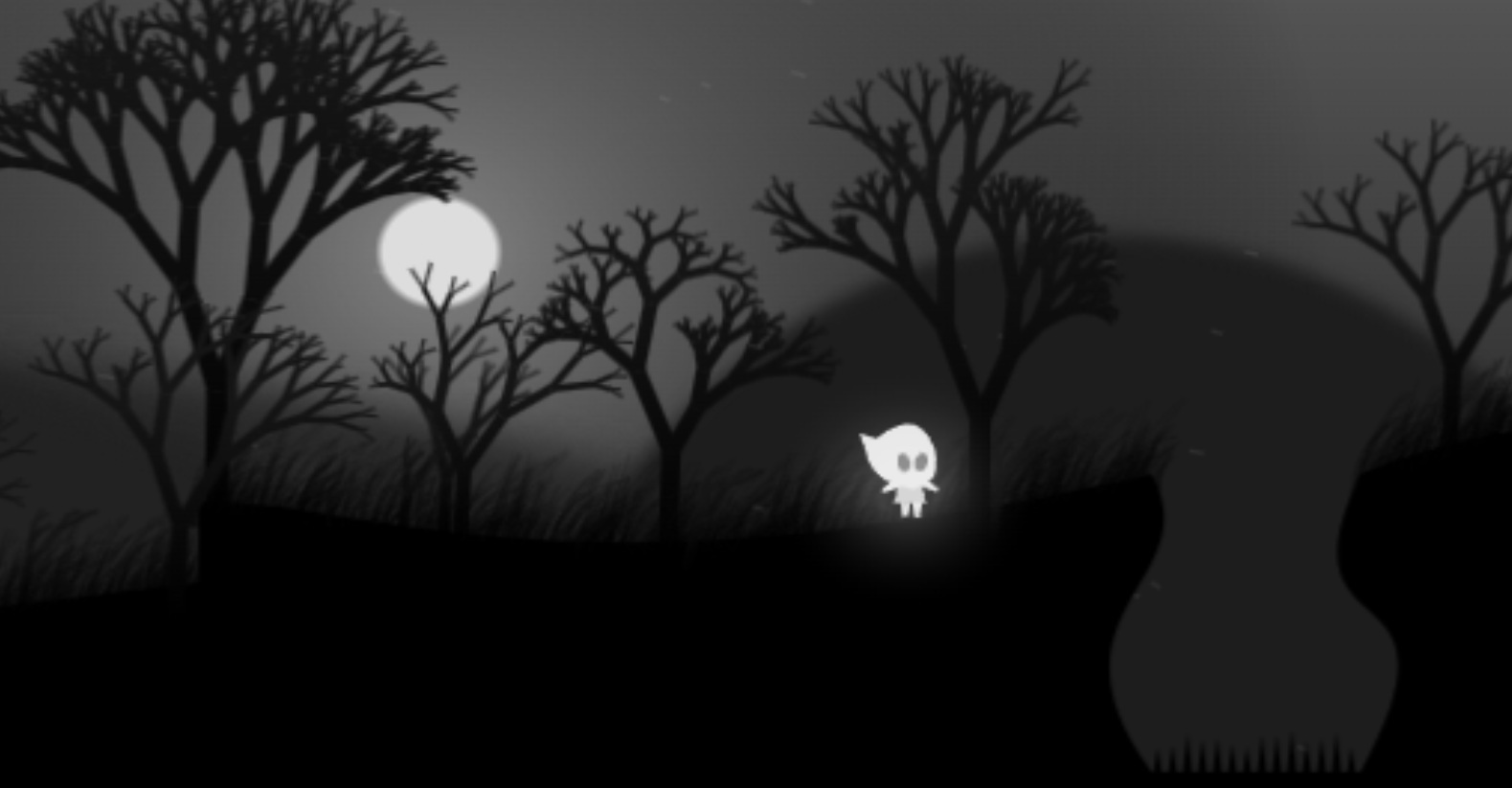
Wandering Wraith
A Lost Wraith is a hauntingly beautiful side-scrolling platformer where players guide a wandering spirit seeking peace and closure. With simple controls—left and right arrow keys for movement and spacebar for jumping—the game blends intuitive gameplay with deep emotional storytelling. Players navigate atmospheric environments filled with metaphorical challenges that mirror the wraith’s unresolved burdens, all while unraveling its tragic past through environmental cues and a mesmerizing soundtrack. Featuring stunning visuals, dynamic lighting, and a poignant narrative, A Lost Wraith invites players on a journey of reflection and resolution, making it an unforgettable gaming experience.
HTML5
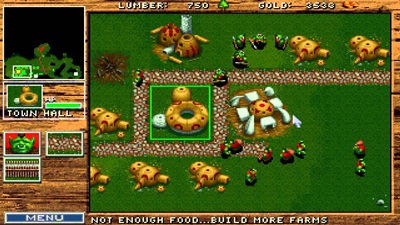
Warcraft 1
Warcraft: Orcs & Humans, released for DOS in 1994 by Blizzard Entertainment, was the game that kicked off the legendary Warcraft franchise and helped shape the real-time strategy (RTS) genre. Set in the fantasy world of Azeroth, it told the story of a brutal conflict between the human kingdom of Azeroth and the invading orcish Horde. Players could choose either side, with campaigns featuring unique missions, storylines, and endings. Gameplay revolved around gathering resources like gold and lumber, constructing bases, training units, and commanding armies in real time—concepts that would become staples of the RTS genre. While the controls were more limited compared to later games, Warcraft stood out for its multiplayer support via modem or LAN, allowing head-to-head battles that were groundbreaking at the time. With its mix of strategy, lore, and competitive play, Warcraft: Orcs & Humans laid the foundation for future classics like Warcraft II, Warcraft III, and eventually World of Warcraft.
DOS
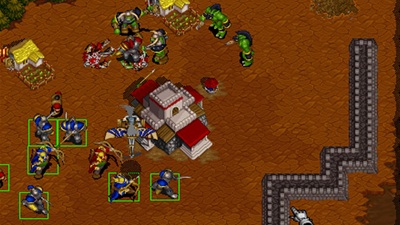
Warcraft 2
Warcraft II: Tides of Darkness, released in 1995 for DOS, took everything the original started and expanded it into one of the defining RTS games of the 1990s. Set in the fantasy world of Azeroth, it continued the epic war between the Human Alliance and the Orcish Horde, this time bringing in naval battles, flying units, and more diverse factions to the conflict. Players gathered resources, built sprawling bases, and commanded armies of foot soldiers, knights, trolls, ogres, and gryphon riders across both land and sea. The game featured two full campaigns—one for each side—along with cinematic cutscenes that deepened the lore of the Warcraft universe. Its balanced gameplay, crisp 2D graphics, and memorable soundtrack made it a huge hit with both casual and competitive players. Warcraft II also shined in multiplayer, supporting LAN and online battles that fueled its popularity. Often hailed as one of the greatest RTS games of its era, it cemented Blizzard’s reputation and paved the way for Warcraft III and the eventual World of Warcraft.
DOS
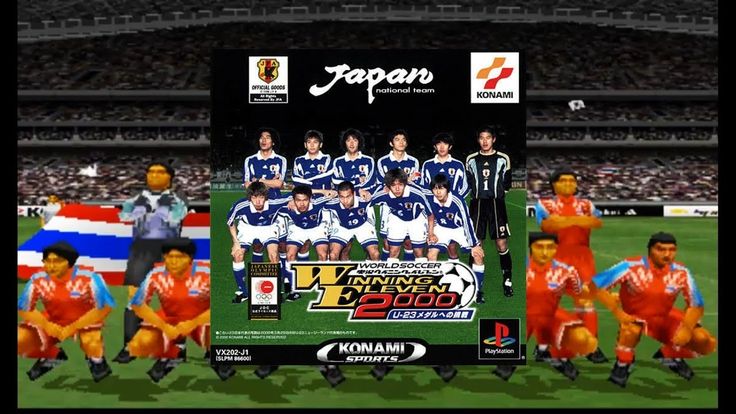
Winning Eleven 2000
Winning Eleven 2000: World Soccer, released for the PlayStation, is part of Konami’s highly regarded Pro Evolution Soccer/Winning Eleven franchise that defined realistic football gameplay in the late 1990s and early 2000s. Known for its smooth controls, authentic team strategies, and fluid passing system, the game stood out against other soccer titles of its time. It featured international squads and club teams, though often under slightly altered names due to licensing, and delivered a balance of arcade-style fun with a more tactical, simulation-like approach. With improved AI, sharper graphics, and a strong multiplayer mode, Winning Eleven 2000 became a favorite among football fans in Japan and Asia, laying the groundwork for the global Pro Evolution Soccer series that would later rival FIFA.
PSX
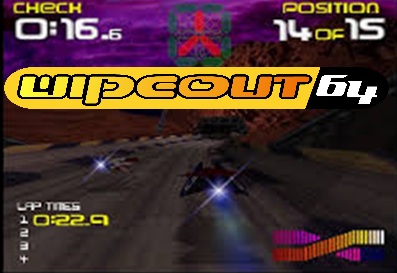
Wipeout 64
Wipeout 64 brings the iconic anti-gravity racing series to the Nintendo 64 with blistering speed, tight futuristic tracks, and a thumping techno soundtrack that defined the franchise. Known for its ultra-responsive handling and silky 60fps performance, the game delivers some of the fastest racing on the N64, complete with deadly weapons, sharp corners, and brutally competitive AI. With its distinctive sleek ships, neon-lit environments, and high-skill gameplay, Wipeout 64 perfectly blends style and intensity, making it one of the standout futuristic racers of its era.
N64
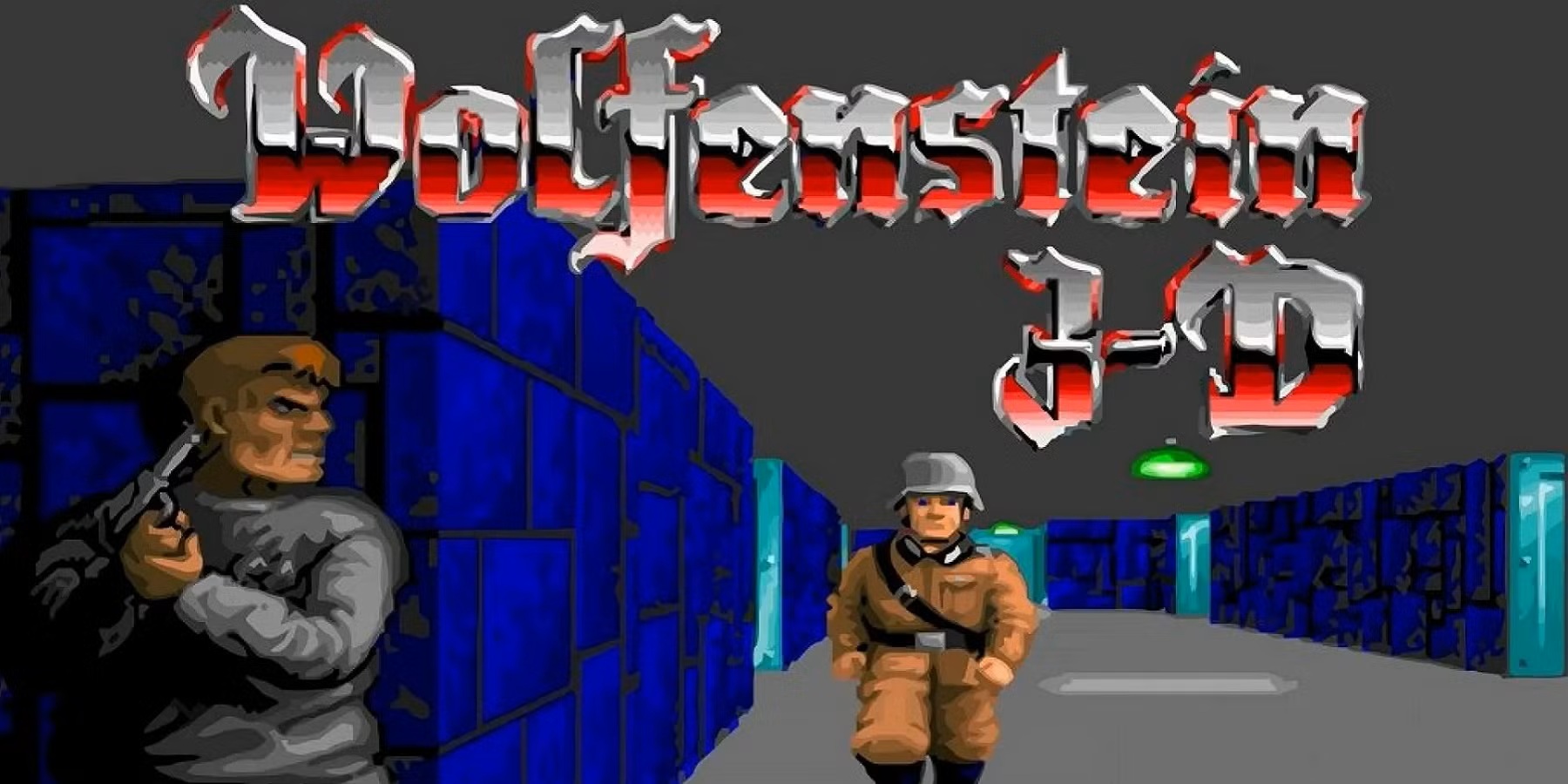
Wolfenstein 3D
Step into the boots of B.J. Blazkowicz and take on the Nazi war machine—Wolfenstein 3D, the grandfather of first-person shooters, is now fully playable in your web browser! Thanks to modern web technology, this MS-DOS classic has been ported using DOS-JS, allowing players to experience fast-paced gunplay, maze-like levels, and intense action without needing an emulator or special setup. Whether you’re playing on desktop, mobile, or tablet, you can now storm through enemy bases anytime, anywhere, with touchscreen support for mobile users.
DOS
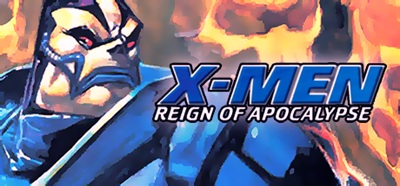
X-Men Reign of Apocalypse
X-Men: Reign of Apocalypse for the Game Boy Advance is a fast-paced side-scrolling beat ’em up where you control iconic mutants like Wolverine, Cyclops, Storm, and Rogue as they battle through an alternate timeline ruled by Apocalypse. Featuring classic arcade-style combat, the game takes you across destroyed cities, military bases, and futuristic strongholds while facing off against Sentinels, Four Horsemen, and familiar X-Men villains. With character-specific abilities, upgradeable powers, and cooperative multiplayer, it delivers a compact yet action-packed superhero adventure on the GBA.
GBA
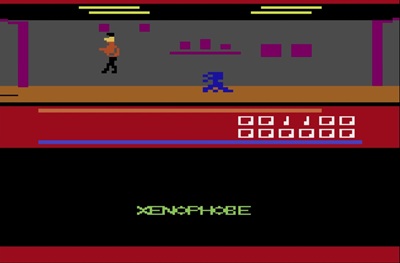
Xenophobe
Xenophobe for the Atari 2600, released in 1990, is a surprisingly capable port of the popular arcade game known for its sci-fi horror setting and cooperative action. The game drops players into infested space stations crawling with hostile alien creatures called Xenos, and tasks them with clearing each level before escaping. Despite the 2600’s limitations, Xenophobe manages to convey a strong sense of tension and atmosphere through its simple but effective visuals and sound effects. Players can pick up weapons, manage health, and explore different areas, making it one of the more complex and ambitious titles on the platform’s late-era lineup—a testament to how far developers could push the venerable Atari hardware.
ATARI
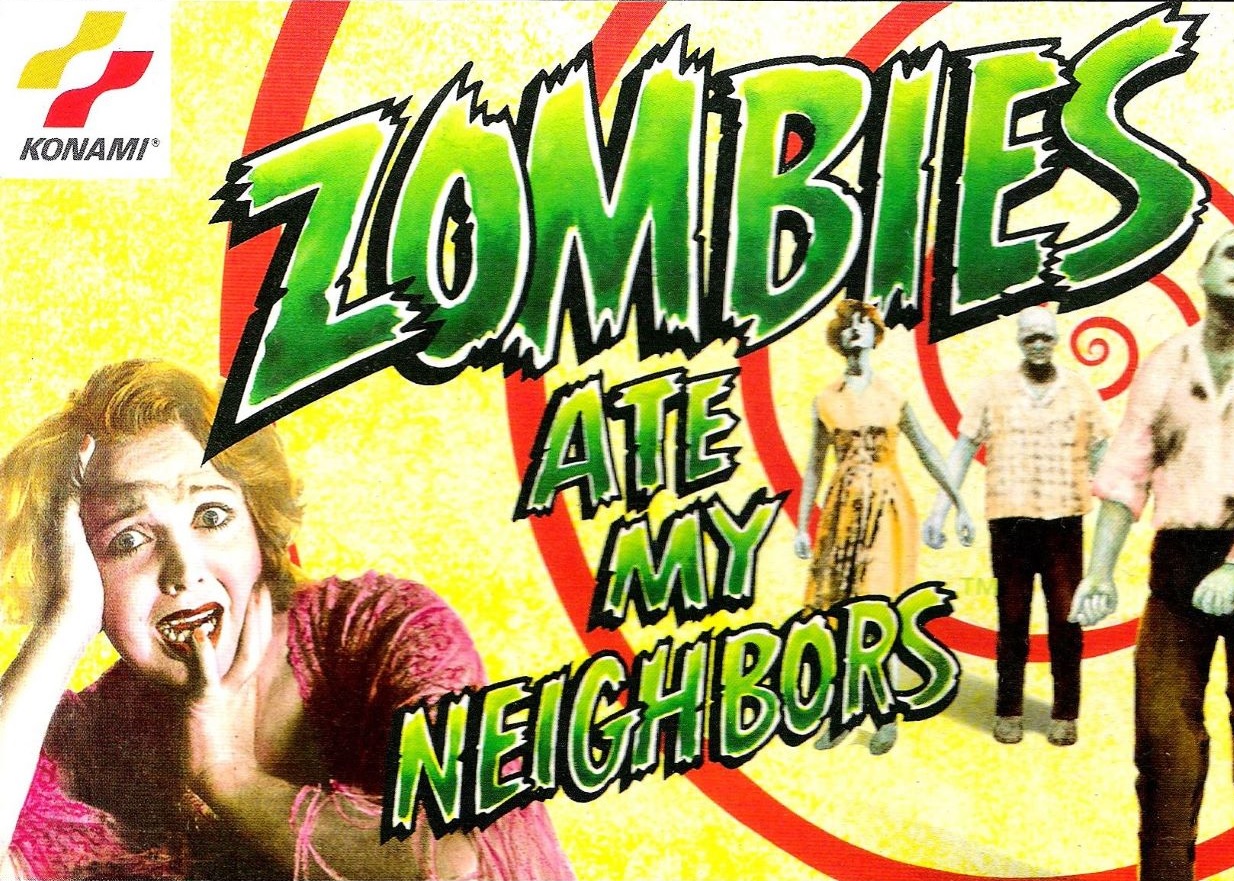
Zombies Ate My Neighbours
Grab your water guns and bazookas—the cult classic Zombies Ate My Neighbors is now fully playable in your web browser! Thanks to modern web technology, this Super Nintendo Entertainment System (SNES) classic has been ported using EmulatorJS, allowing players to experience chaotic monster-slaying action, spooky environments, and co-op fun without needing an emulator or special setup. Whether you're playing on desktop, mobile, or tablet, you can now save your neighbors from the undead anytime, anywhere, with touchscreen support for mobile users.
SNES
Back to Applications
Relive Your Childhood Memories with Classic Games
Play classic titles instantly in your browser—no installs needed. Our emulation stack is built for speed, stability, and long play sessions, with fast loading, smooth video, reliable saves, mobile touch controls, and full gamepad support. All games are online-play only and not available for download. For details, please see our Legal Notice.


